| Name | Crop Name | Problem Description | Preview Image 1 | Preview Image 2 | Preview Image 3 | Diagnostic Suggestions |
| Suruj Saikia | SUGARBEET | death of seedling |
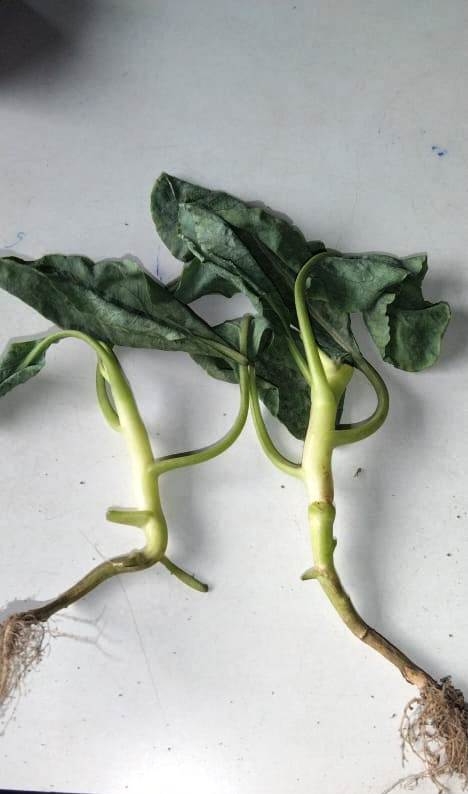
|
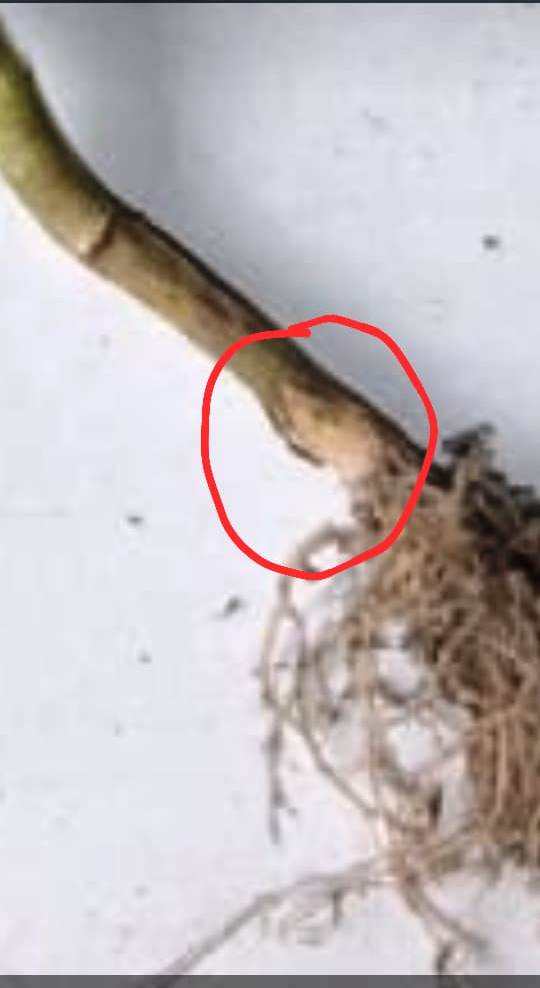
|
![]()
| |
| Khomdram Somorendra Singh | PADDY | What are micronutrients required to be given to paddy plant Please give me along with dose time of supply along with frequency of application |
![]()
|
![]()
|
![]()
| |
| johnansaz | PADDY | http://imrdsoacha.gov.co/silvitra-120mg-qrms |
![]()
|
![]()
|
![]()
| |
| VINAY | BARLEY | Leaf Spot in onion |

|

|

| |
| Basani Nagaraj | COTTON | Severe attack by the unknown pest . Many chemicals have been tried but no result . The appearance of the crop and the specific pest photos are attached. Please suggest suitable pesticides |
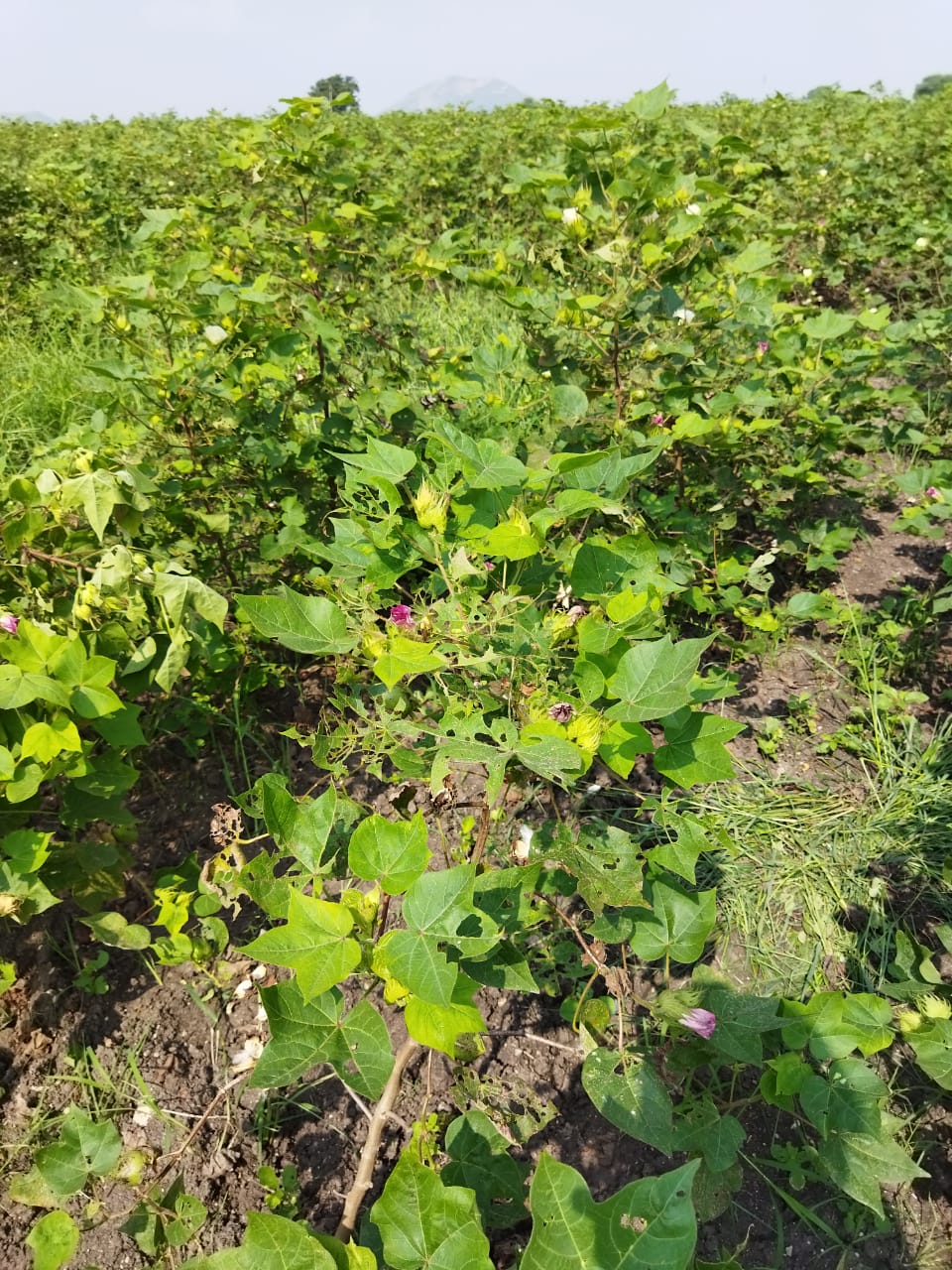
|
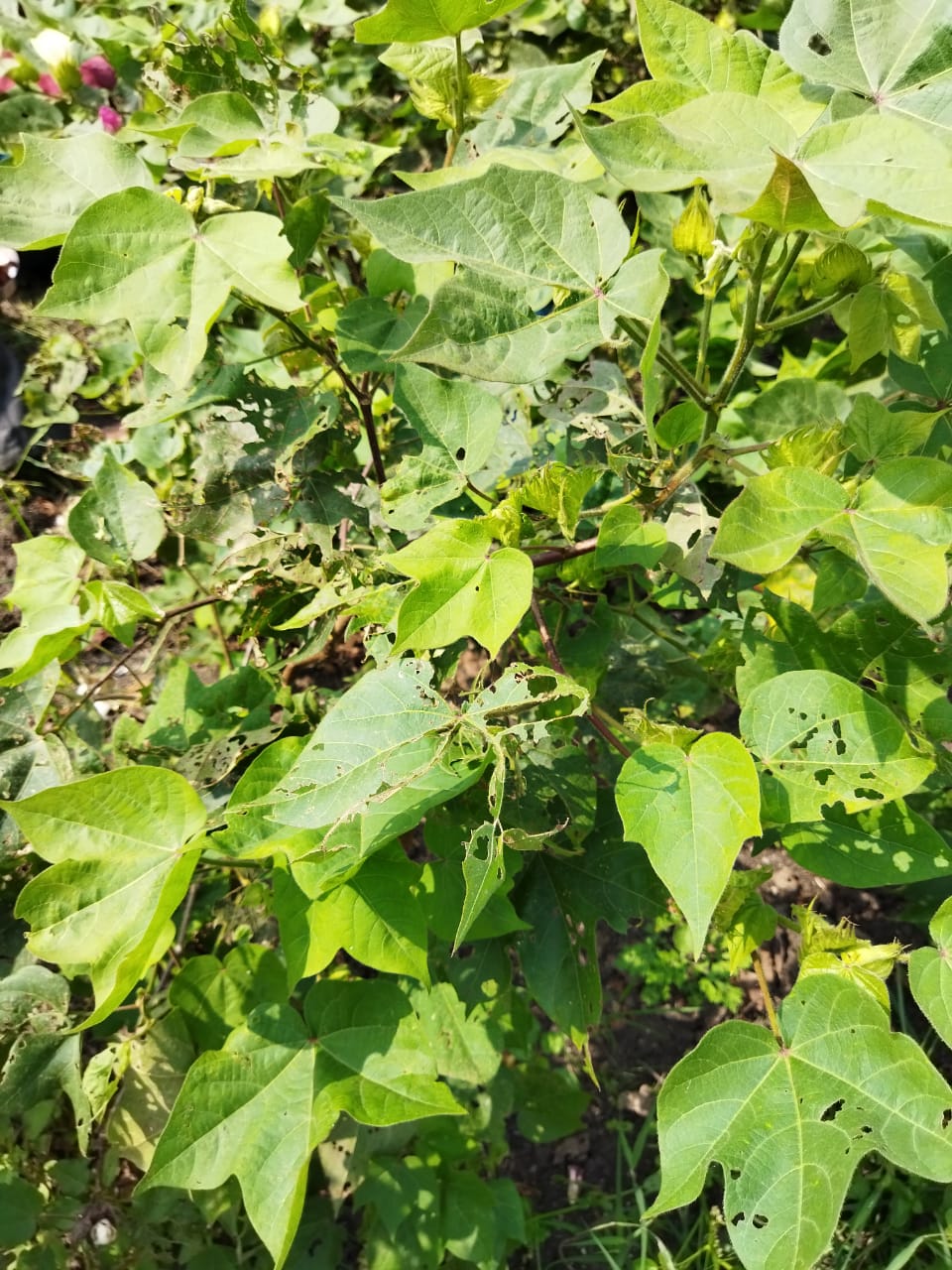
|
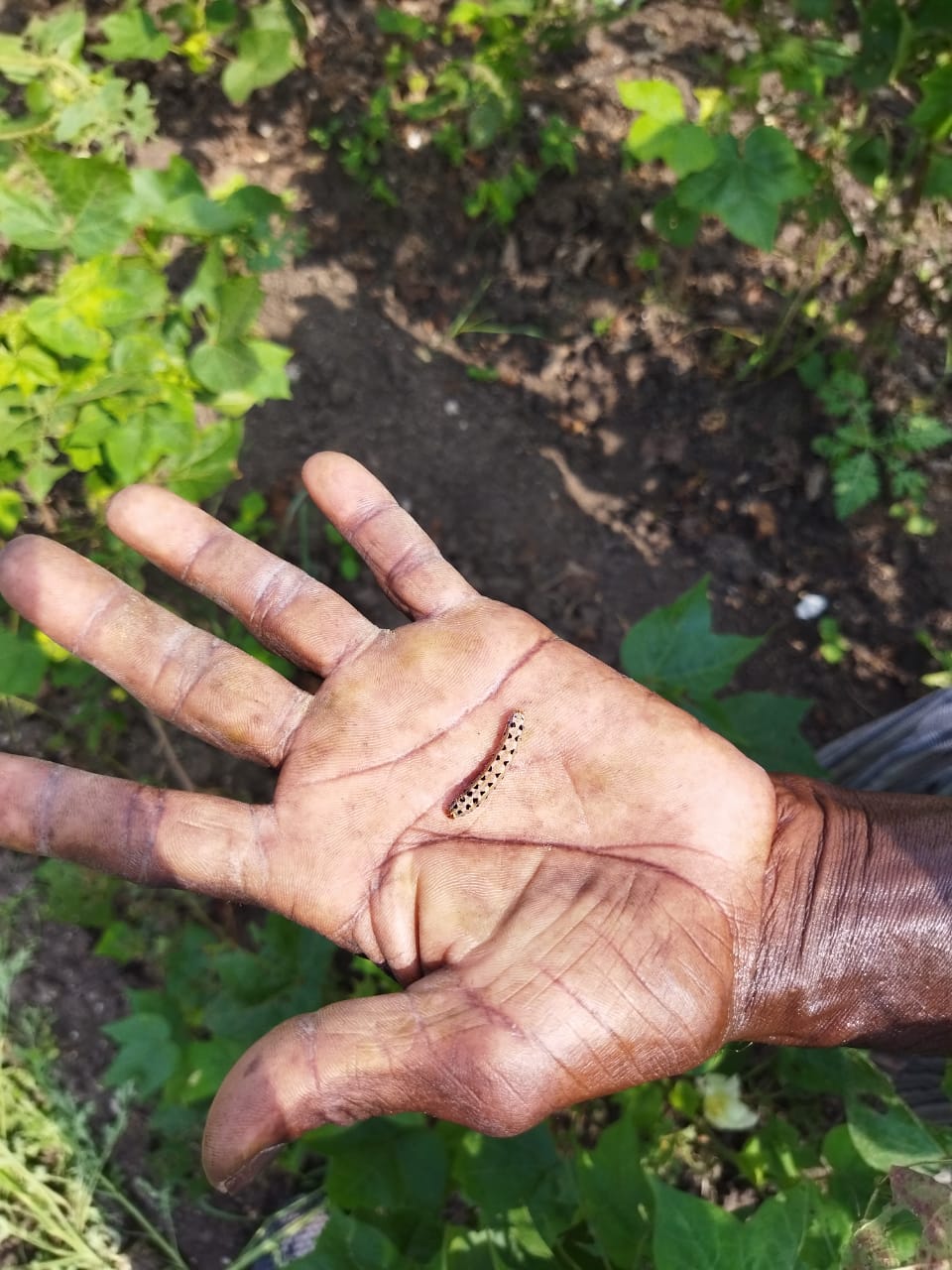
| |
| Rohit | COW PEA | Leaf |
![]()
|
![]()
|
![]()
| |
| Vikas | COTTON | Crop: Okra
Please identify the symptoms which was seen after 25 days of crop sowing. |
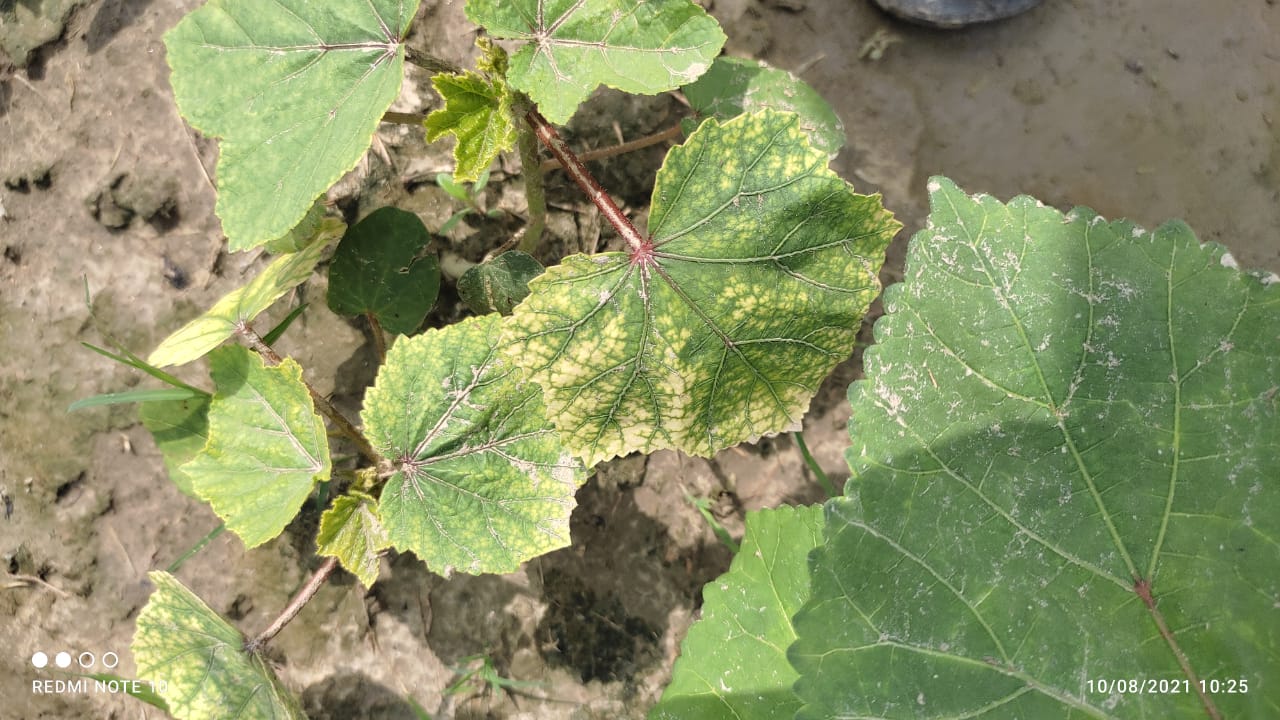
|
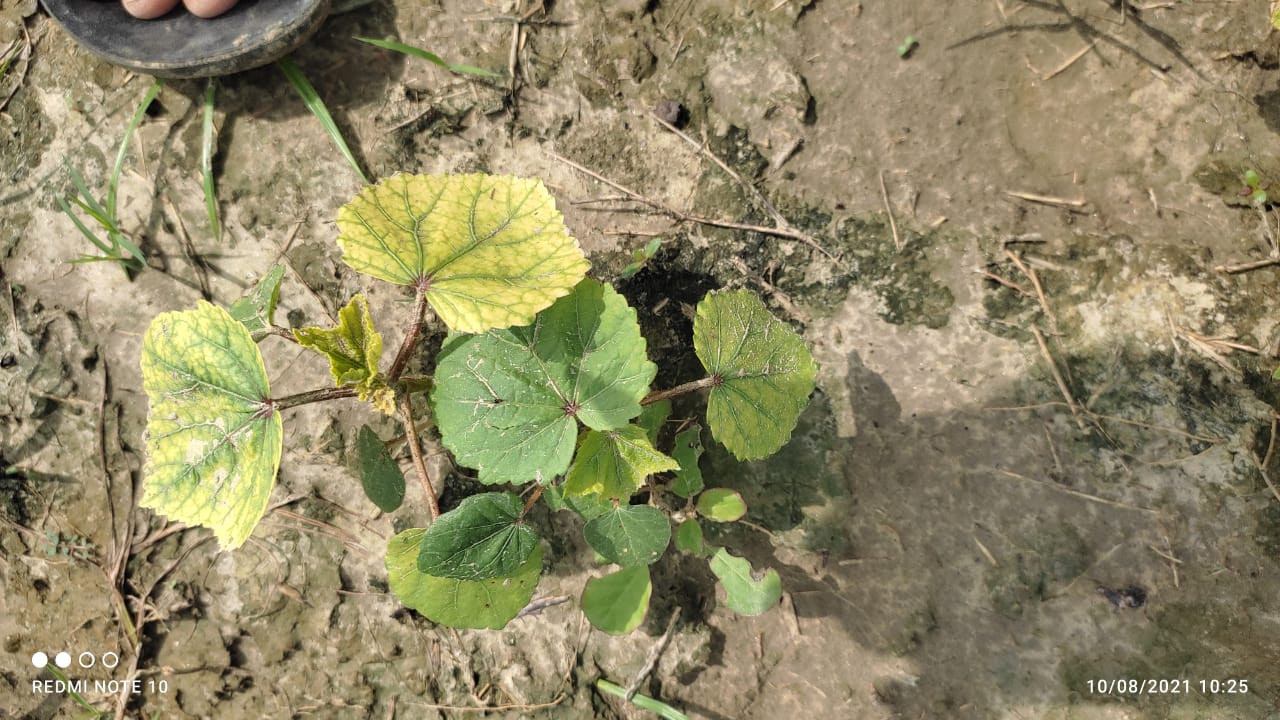
|
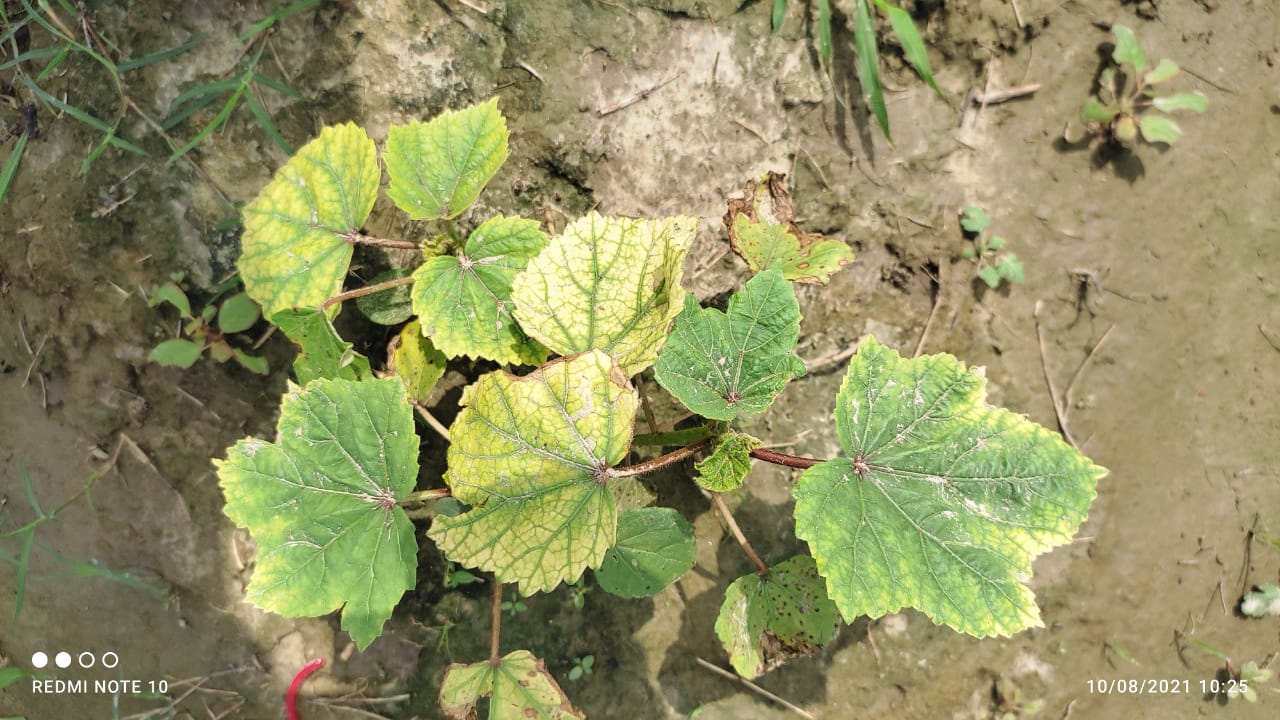
| |
| Vaibhav | PADDY | Please help in the identification of pest. |
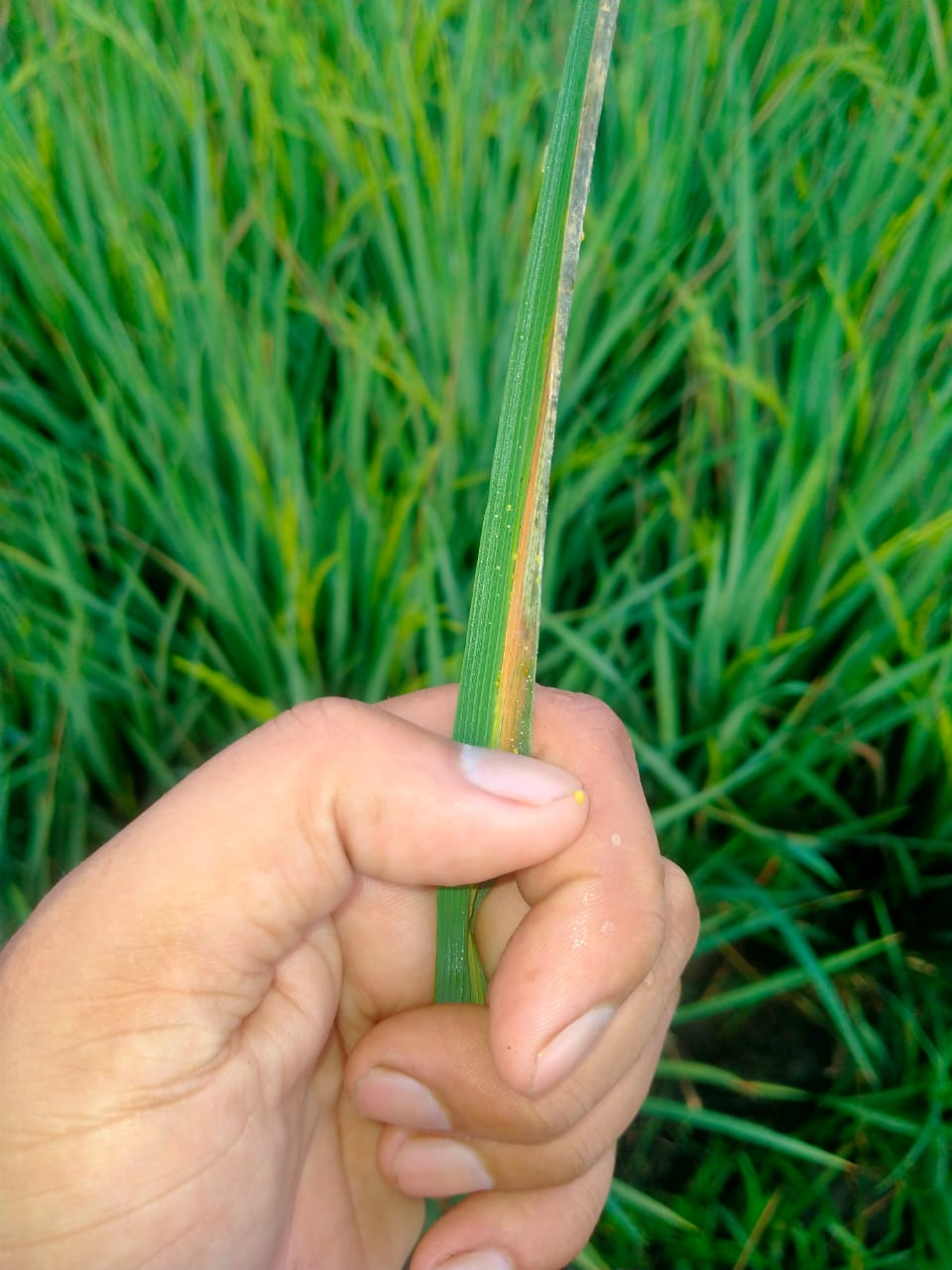
|
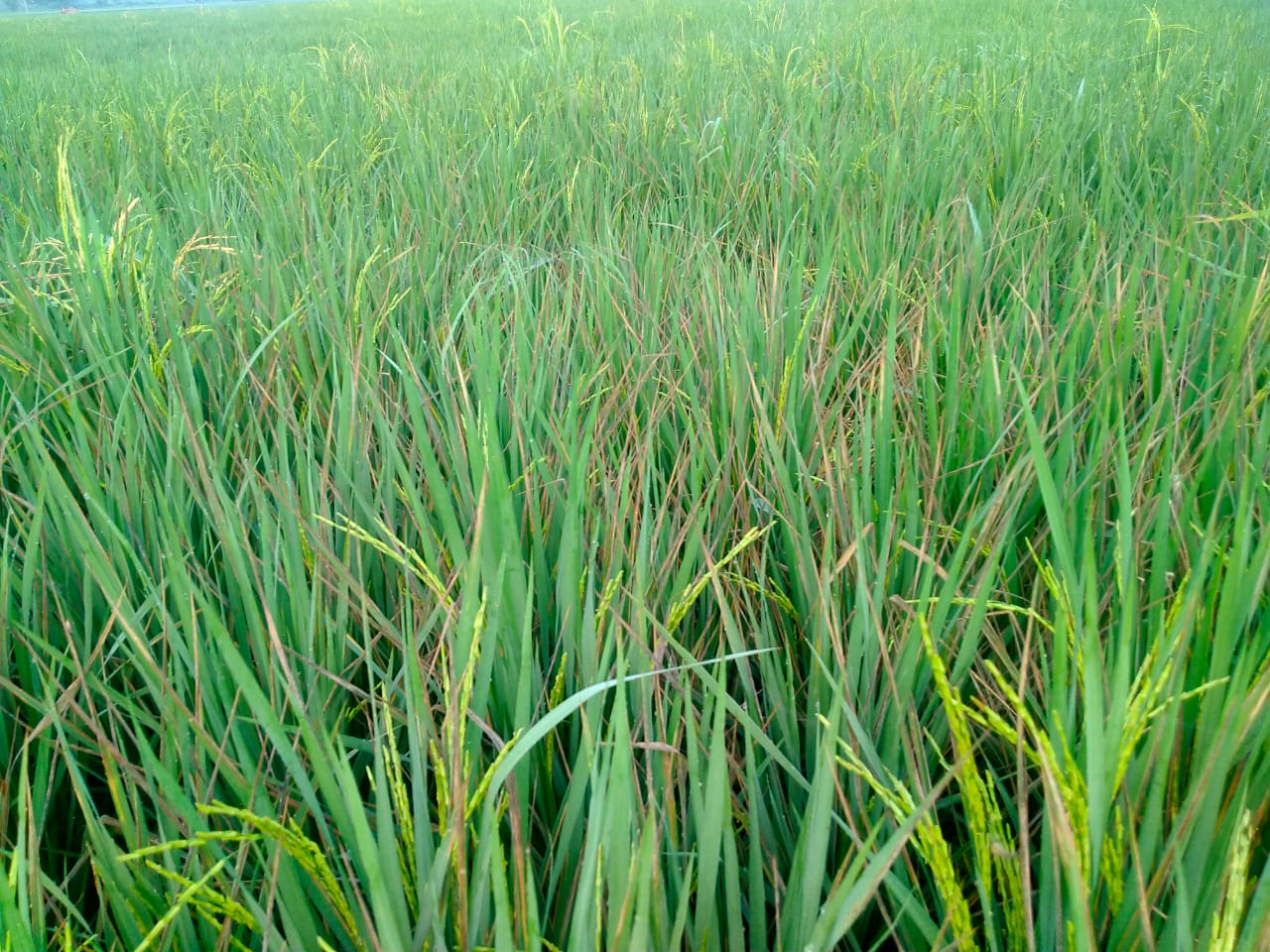
|
![]()
| |
| Kalaiselvan | MAIZE | Eaten the maize totaly |
.jpeg)
|
![]()
|
![]()
| |
| Umesh Kumar | COTTON | Cotton crop face White fly pest problem. Any biology control. In our area temperature during this period 45digree centigrade |
![]()
|
![]()
|
![]()
| |
| Narendra rathor | BENGAL GRAM | 1. what is better option between trichoderma and chemical fungicide for wilt disease in gram?
2. I want to know about the compatibility among trichoderma V & H, mycorrhiza (VAM), Beauveria bassiana, Metarhizium anisopliae and verticillium lecanii?
3. Is above product work together?
4. Can I use above bio product together in seed treatment in gram?
Please send me literature to my mail ID nrathoritawa@gmail.com |
![]()
|
![]()
|
![]()
| |
| Ram | PADDY | New insect |
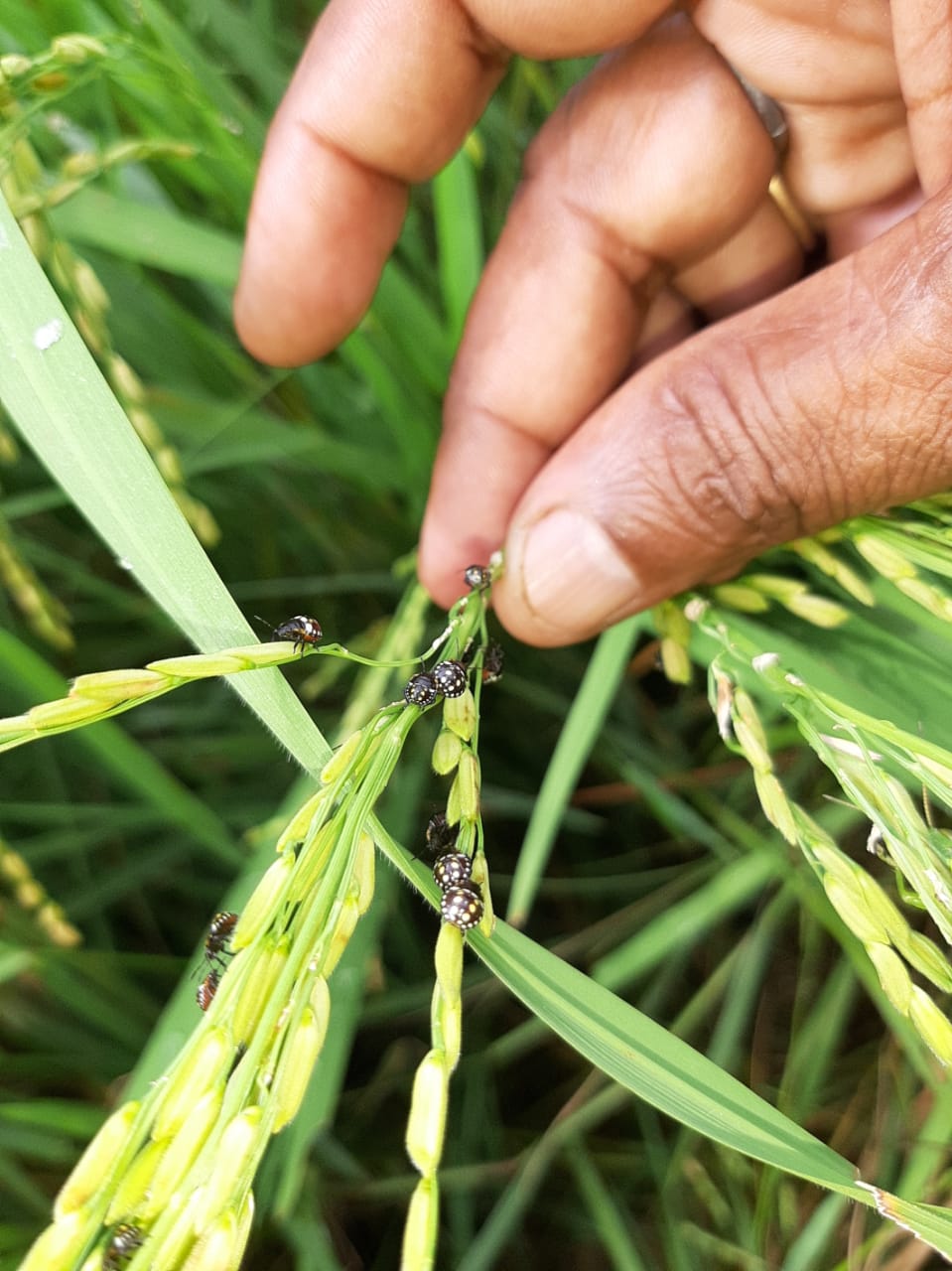
|
![]()
|
![]()
| |
| Ram | PADDY | White earhead |
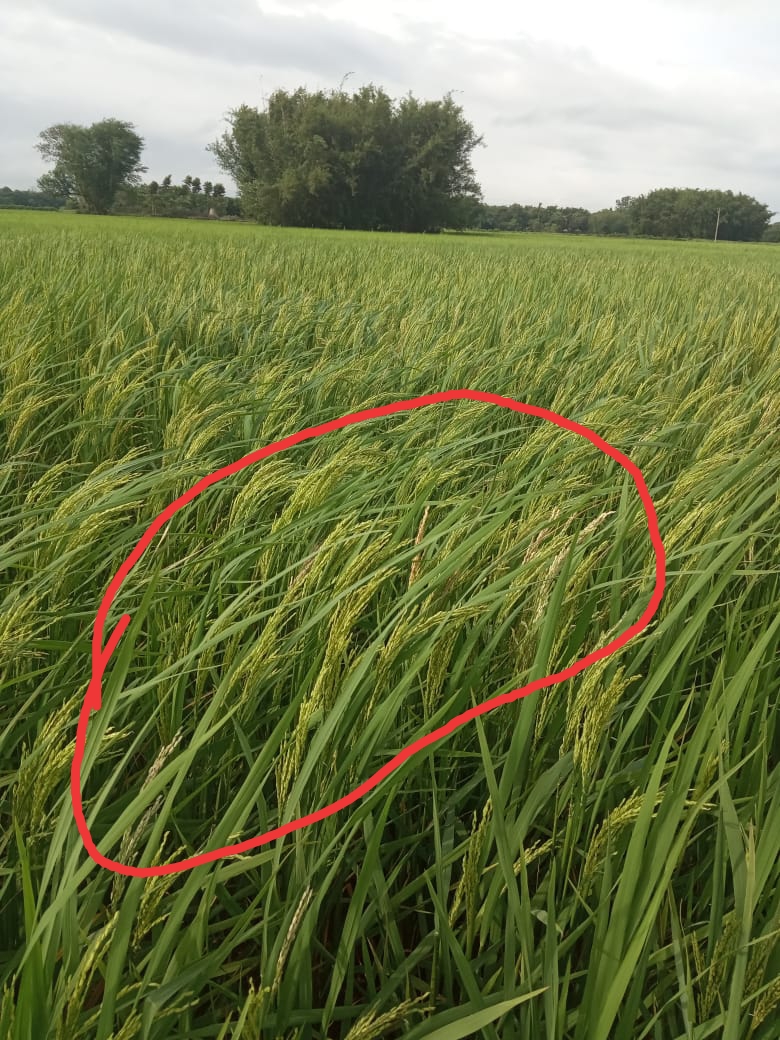
|
![]()
|
![]()
| |
| 222 | GREEN GRAM | |

|
![]()
|
![]()
| |
| Esa Yaseen | VARIGA | I am getting this pest. Please advise. |
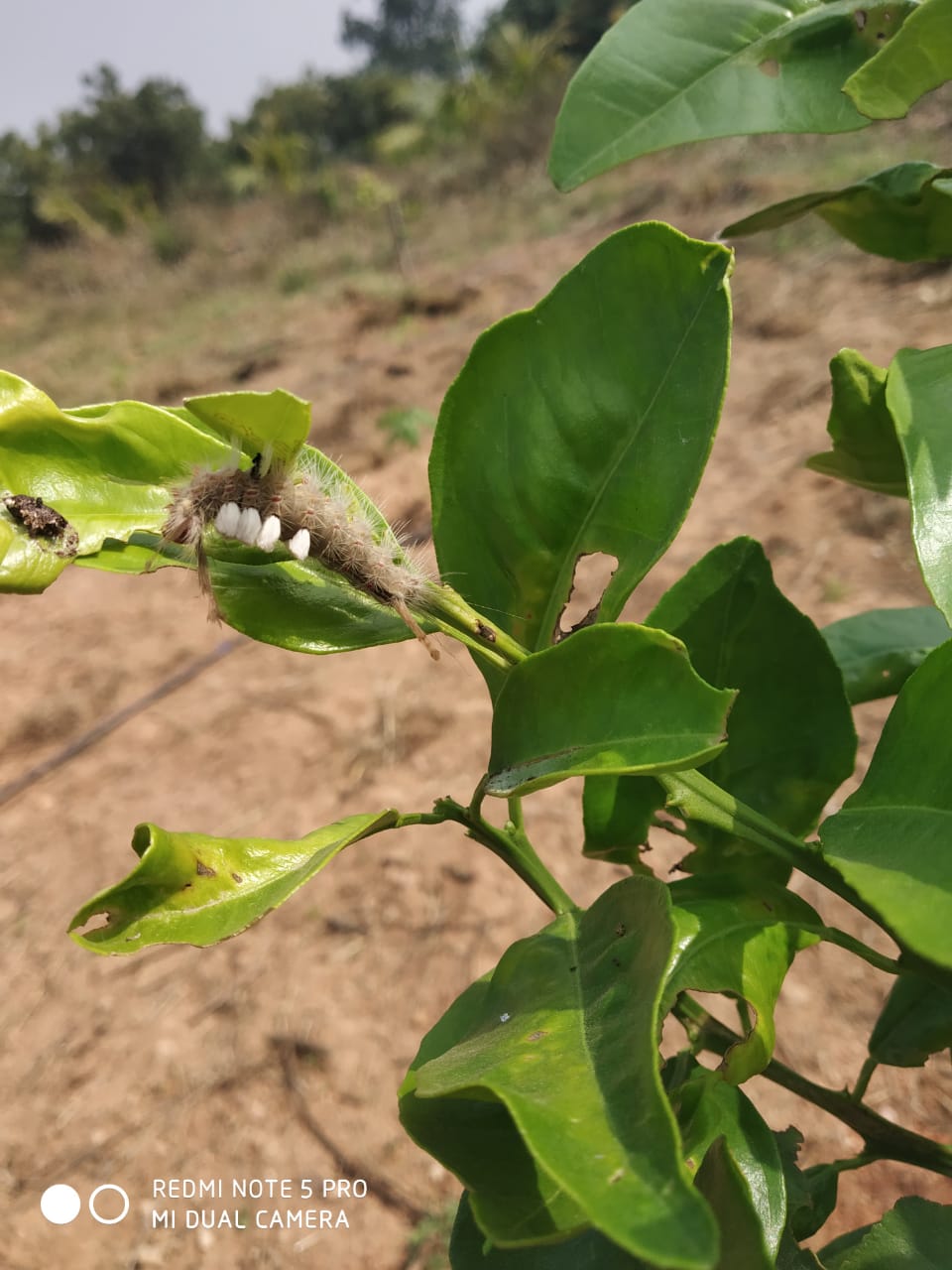
|
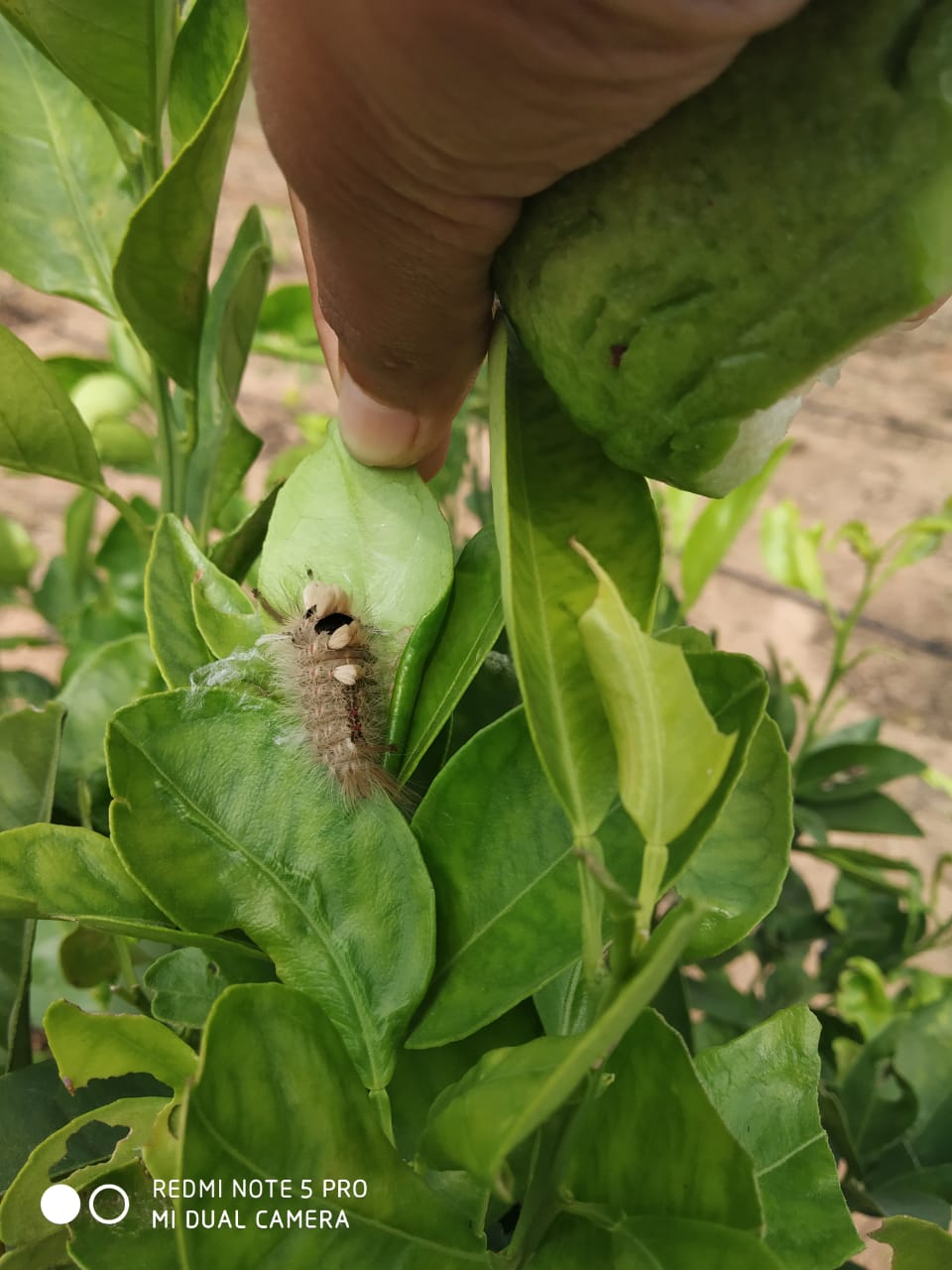
|
![]()
| |
| Dushyant Kumar Dhaker | PADDY | Plant showing dompingoff symptoms |
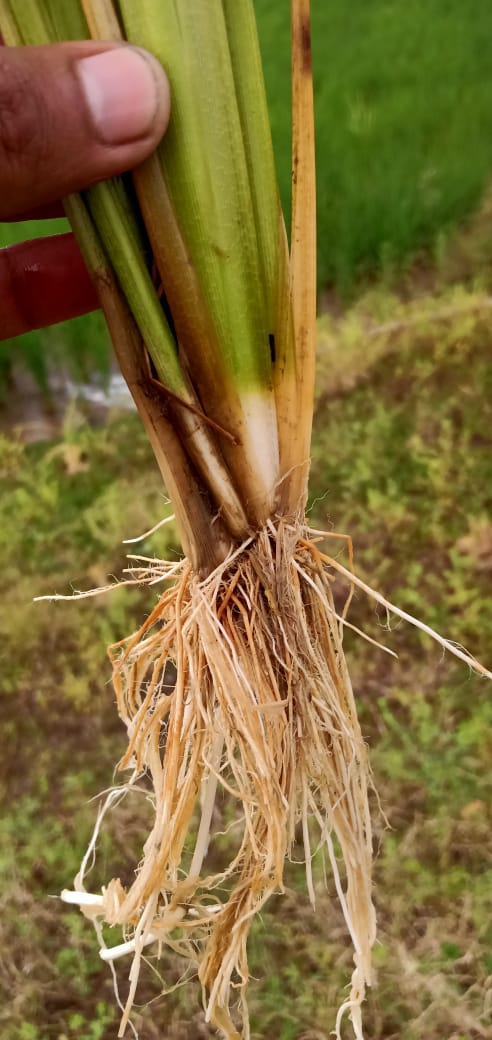
|
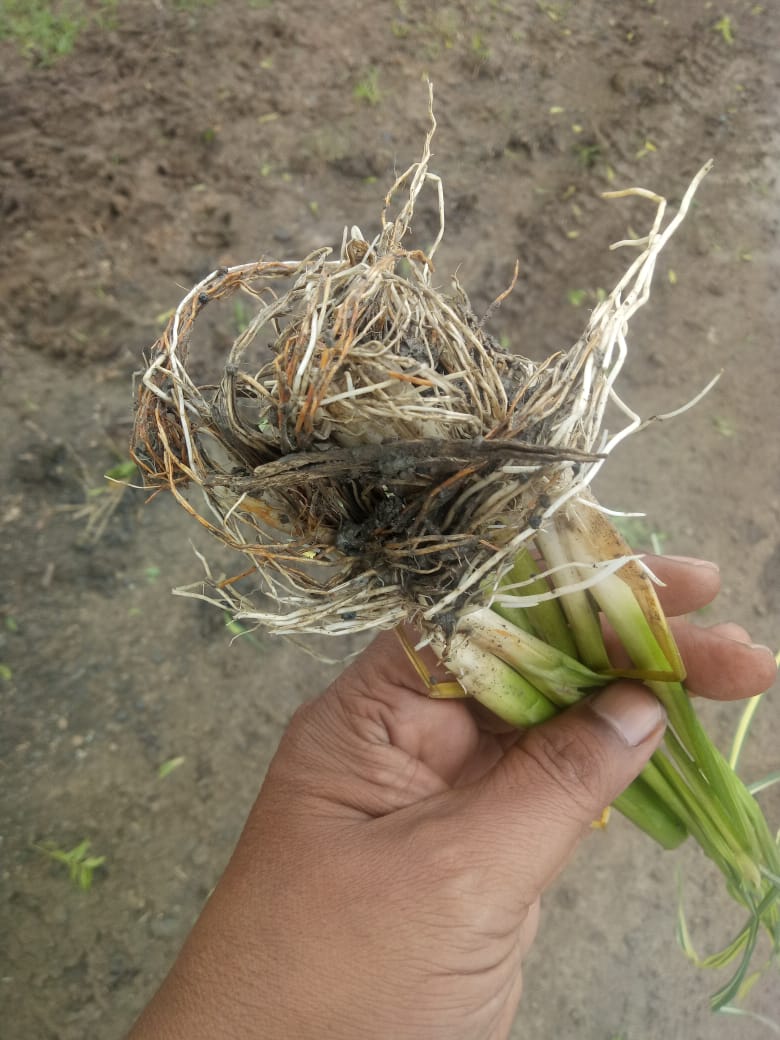
|
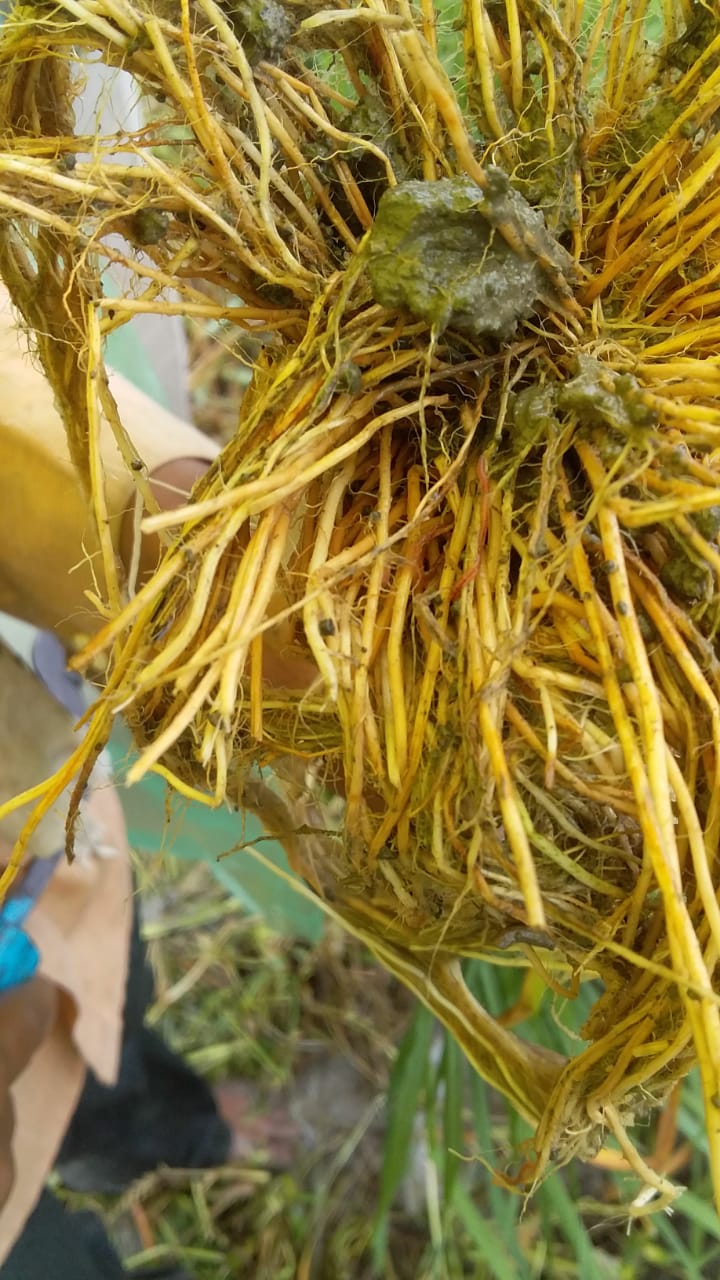
| |
| Dushyant Kumar Dhaker | REDGRAM | Please identify the insect arrey |
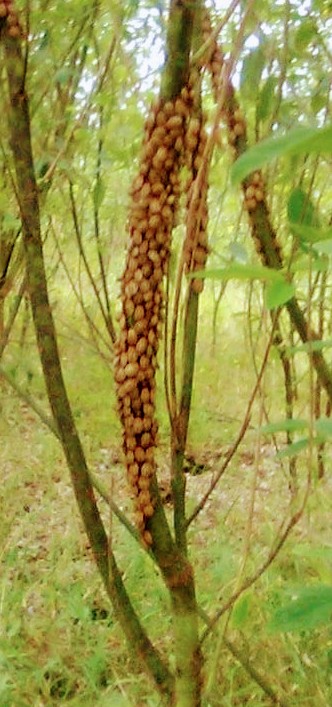
|
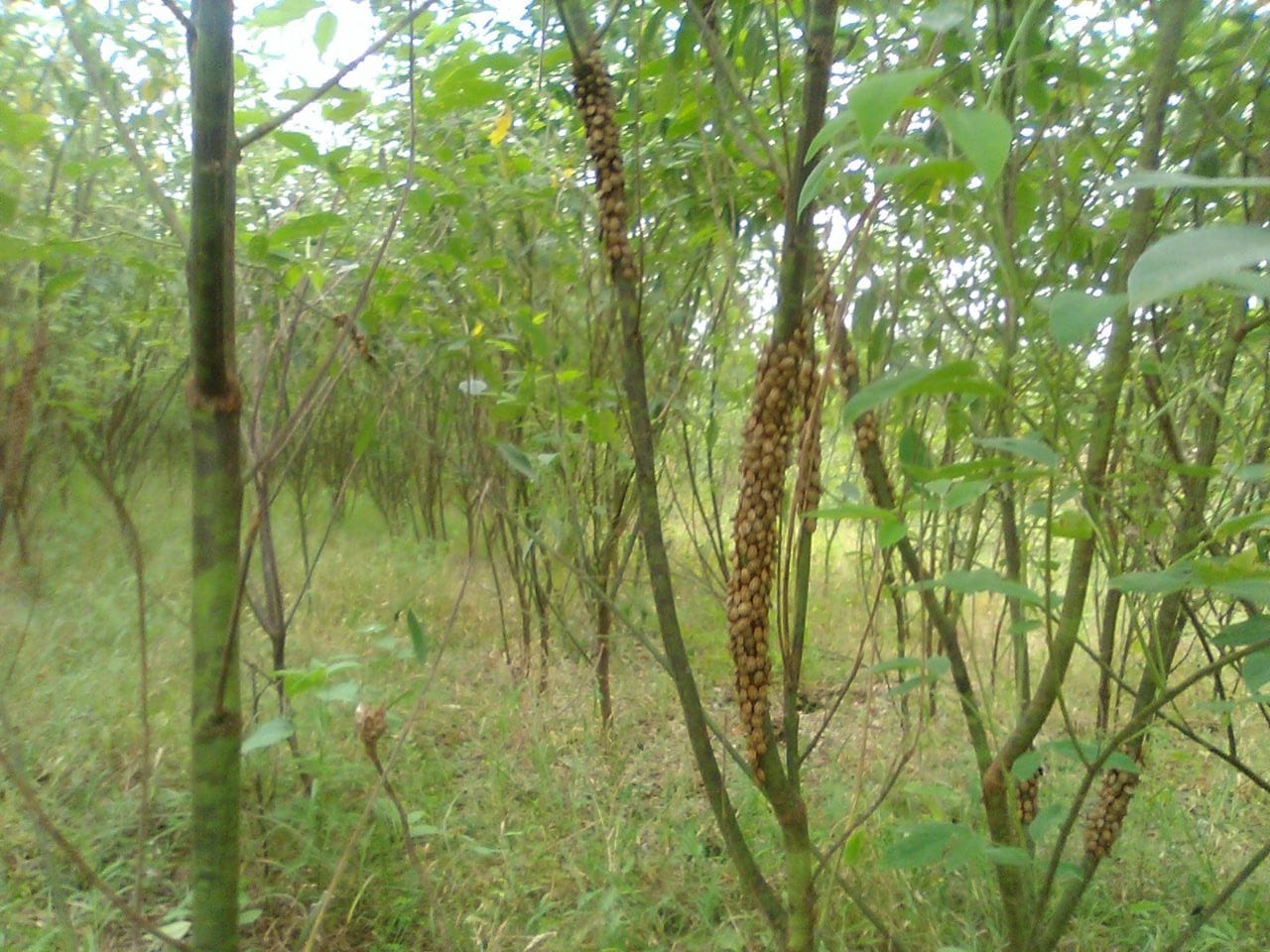
|

| |
| Dushyant Kumar Dhaker | REDGRAM | |

|

|

| |
| Javed Mohammed | PADDY | I need some lures how can I buy it niphm |
![]()
|
![]()
|
![]()
| |
| Anil patidar | BARLEY | How to control stem borrower in chilli plants? |
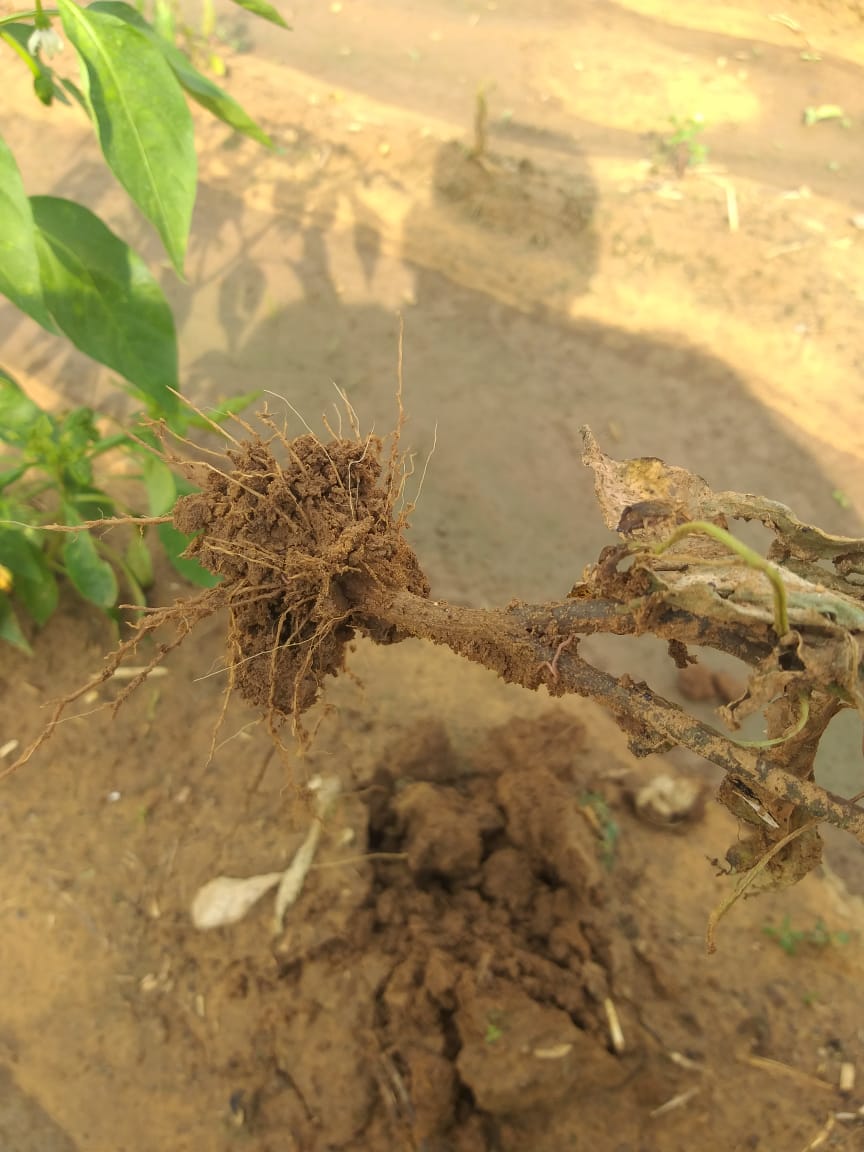
|
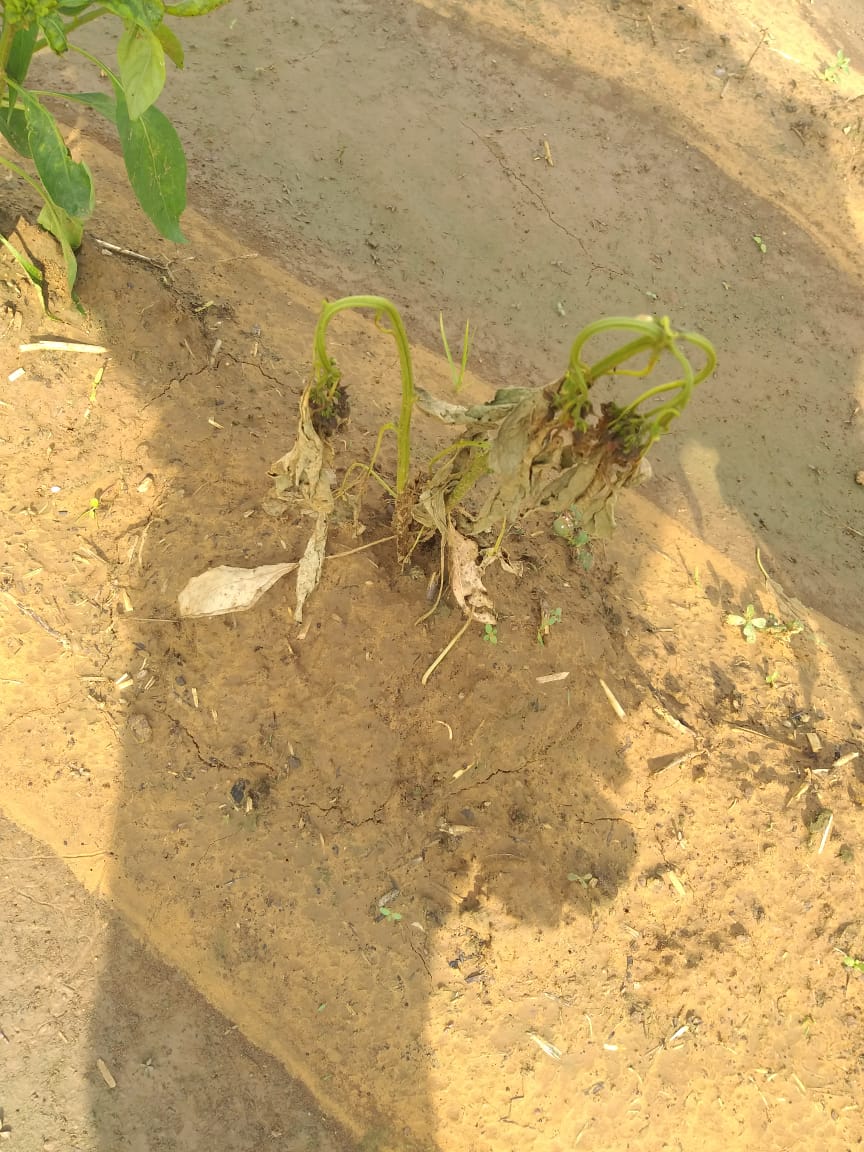
|
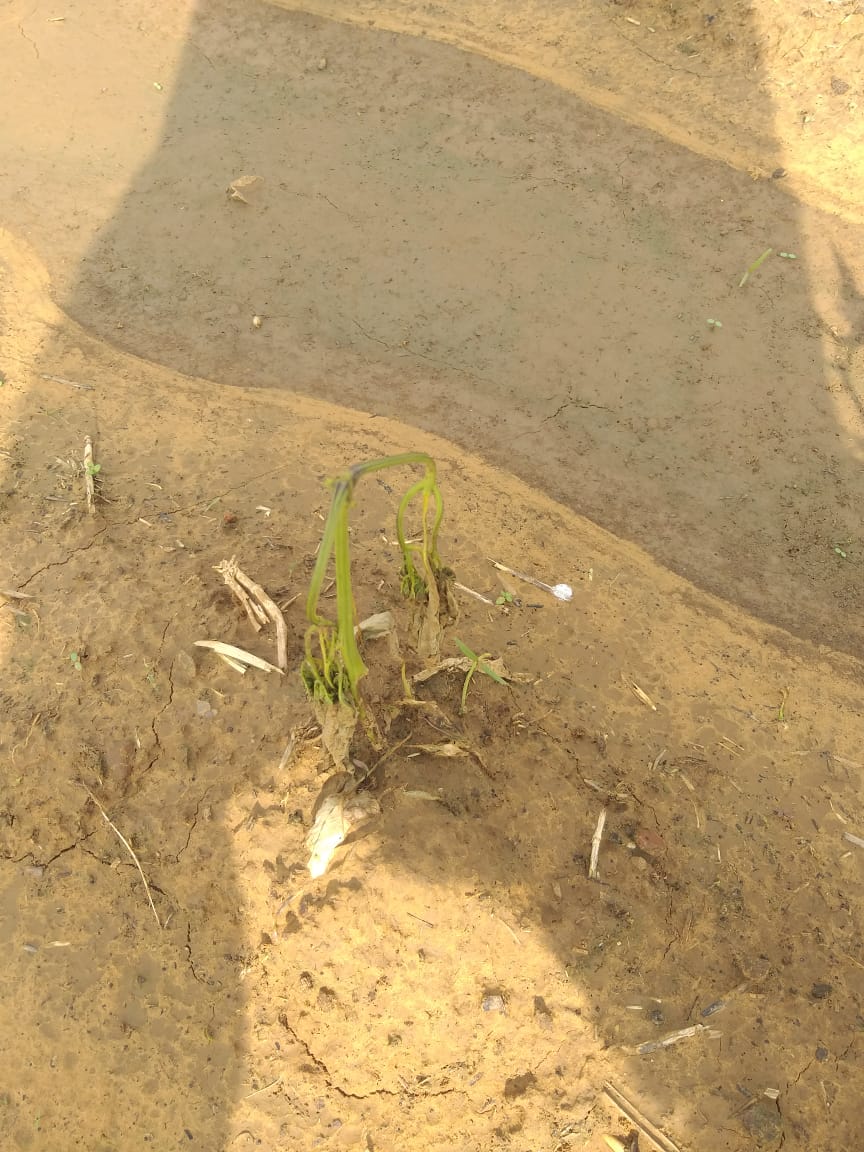
| |
| Dhanapal | SUGARCANE | incidence is severe during June. white patches are present. need solution |
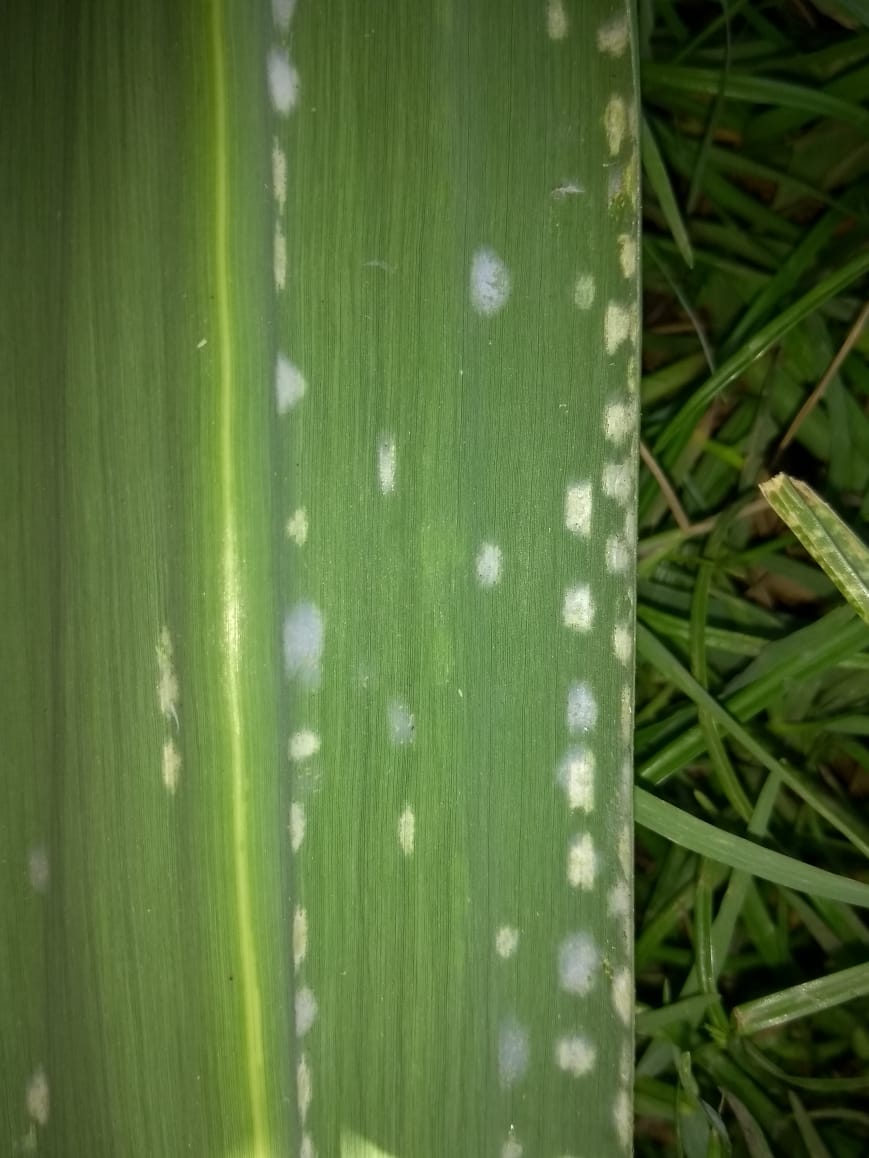
|
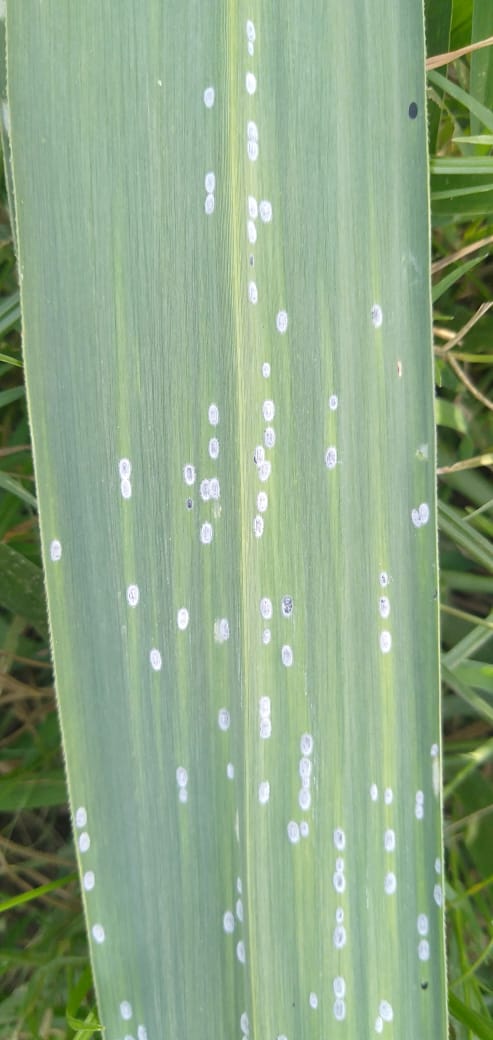
|
![]()
| |
| Dachepally madhu Reddy | KORRA | |
![]()
|
![]()
|
![]()
| |
| Kamlesh Pal | SUNFLOWER | I have planted Papaya, there is no option for Papaya in drop down menu. So I chose Sunflower to just upload the photographs. Plants are getting yellowish and curling of leaf to upper side. |
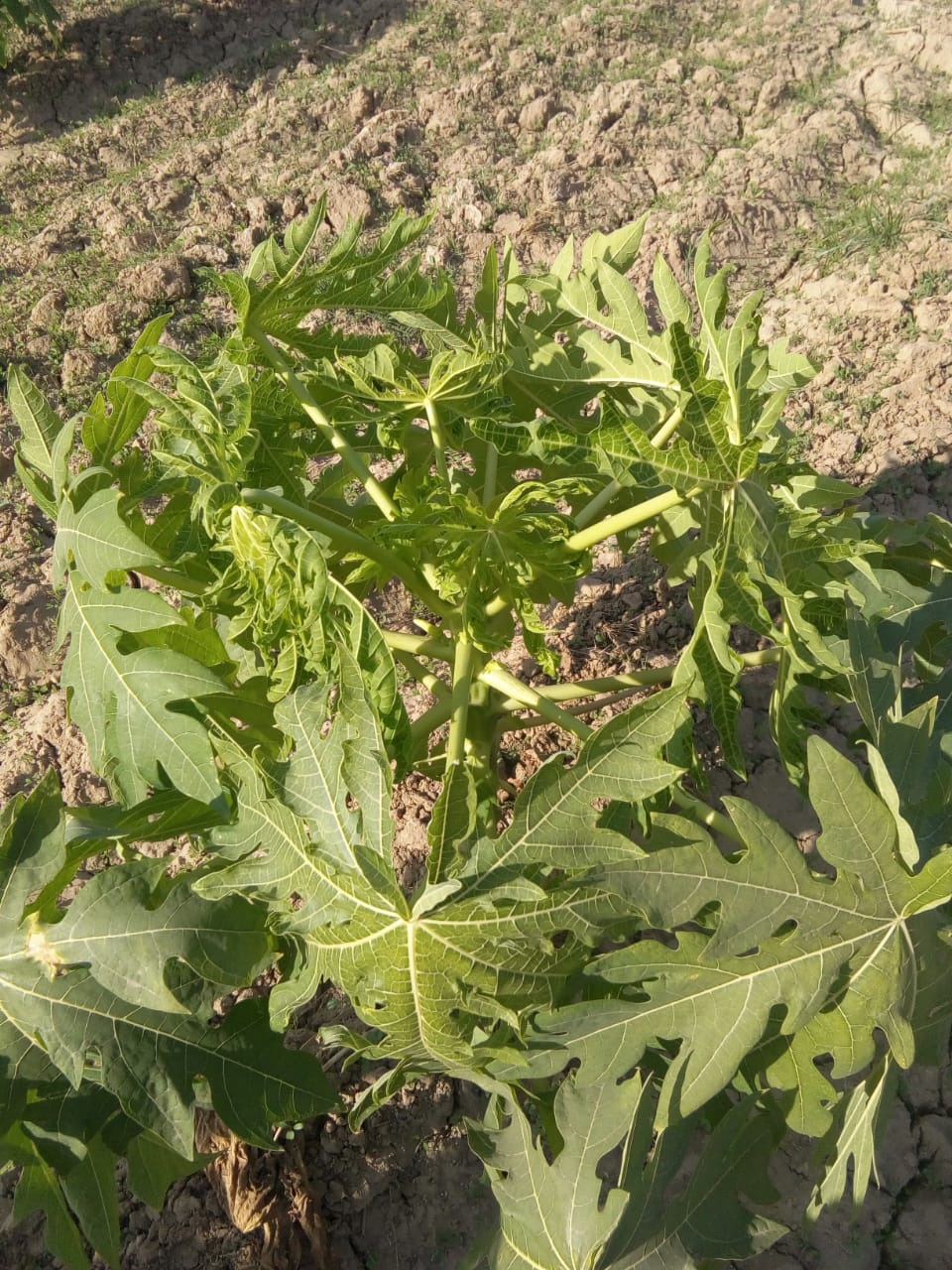
|
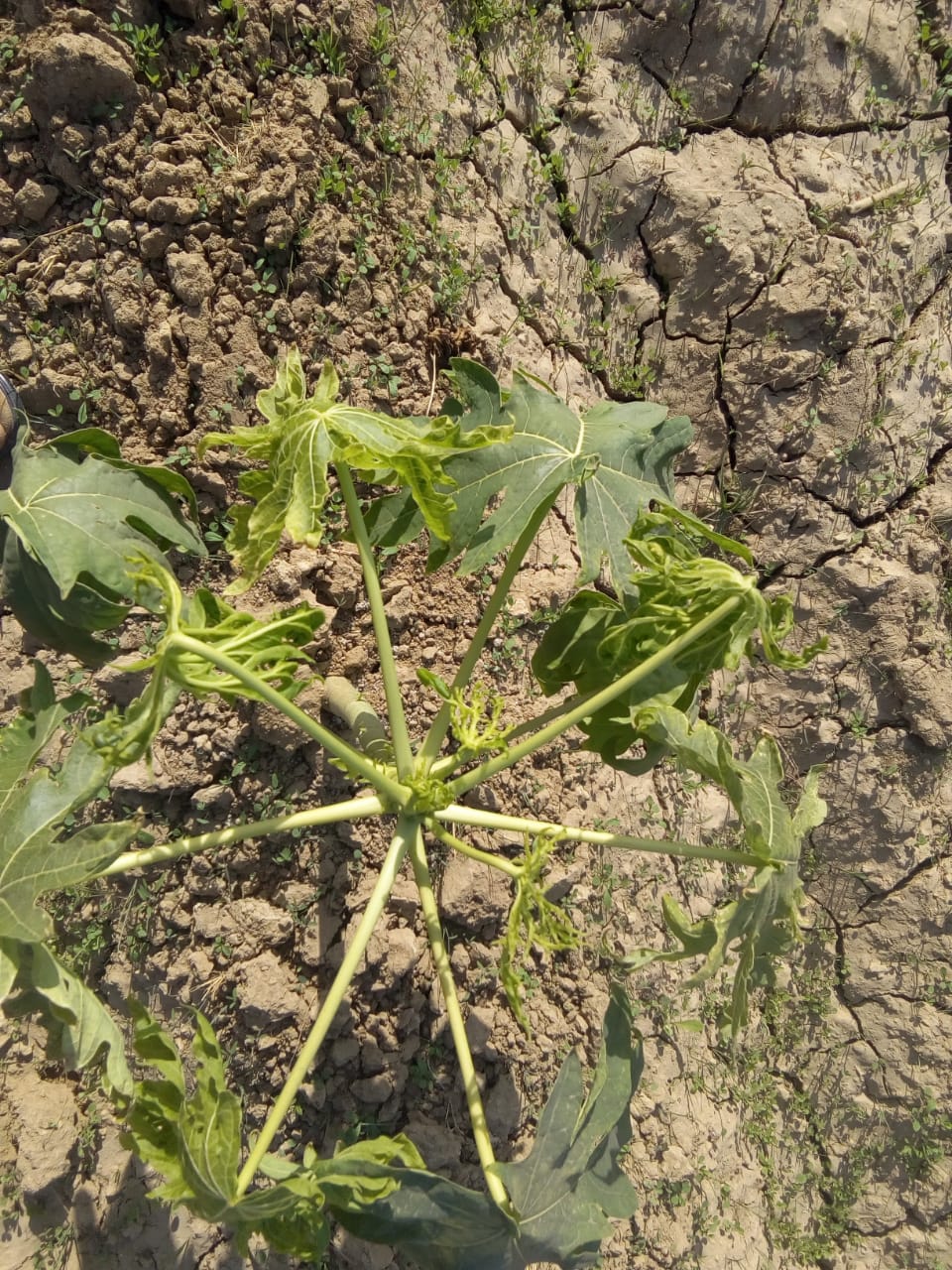
|
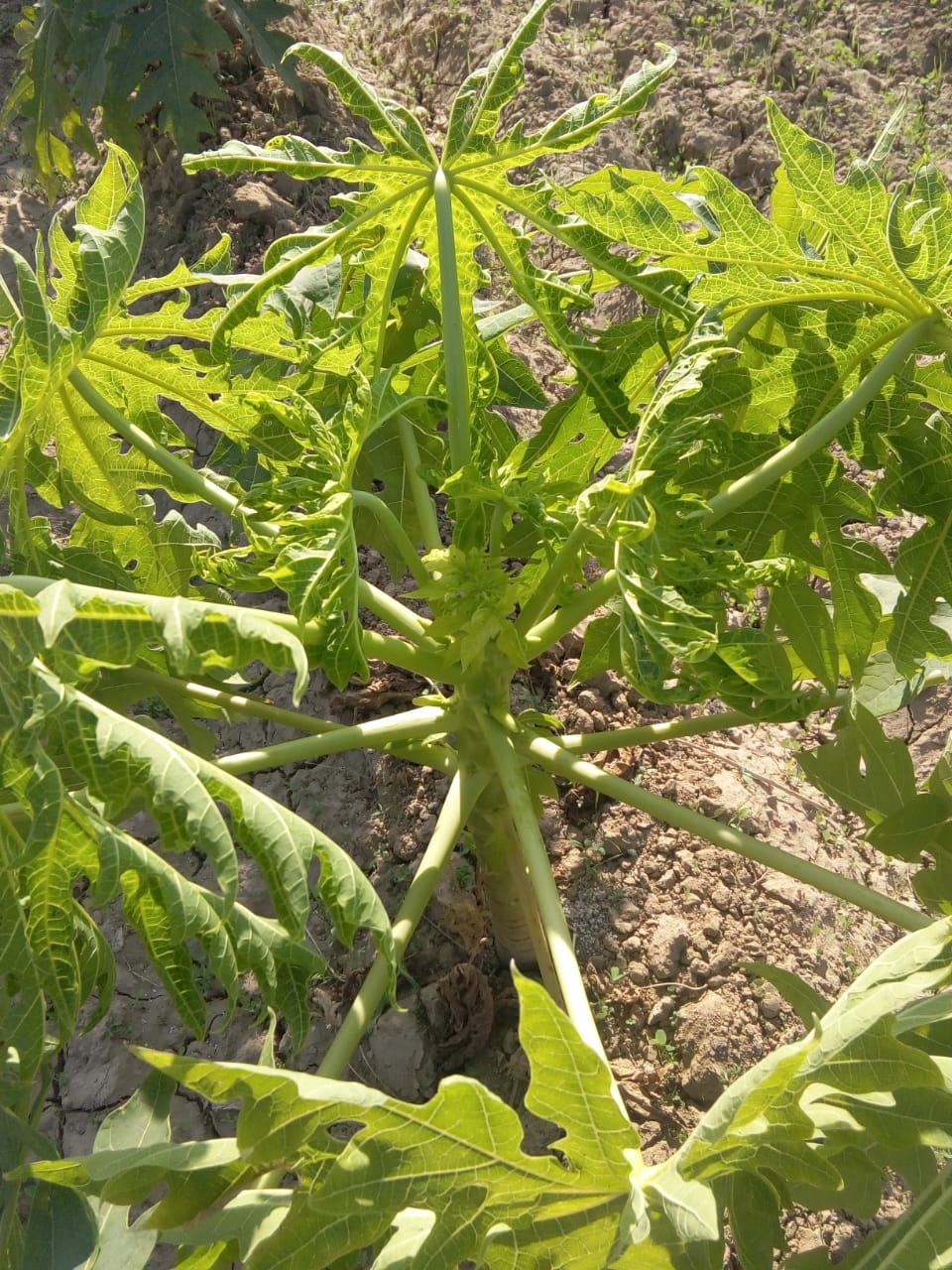
| |
| Ashvini | SOYABEAN | plants growth restricted |
![]()
|
![]()
|
![]()
| |
| prasad | GROUNDNUT | rot |
![]()
|
![]()
|
![]()
| |
| Marka srinivas | COTTON | |
![]()
|
![]()
|
![]()
| |
| viswa reddy | BARLEY | |

|
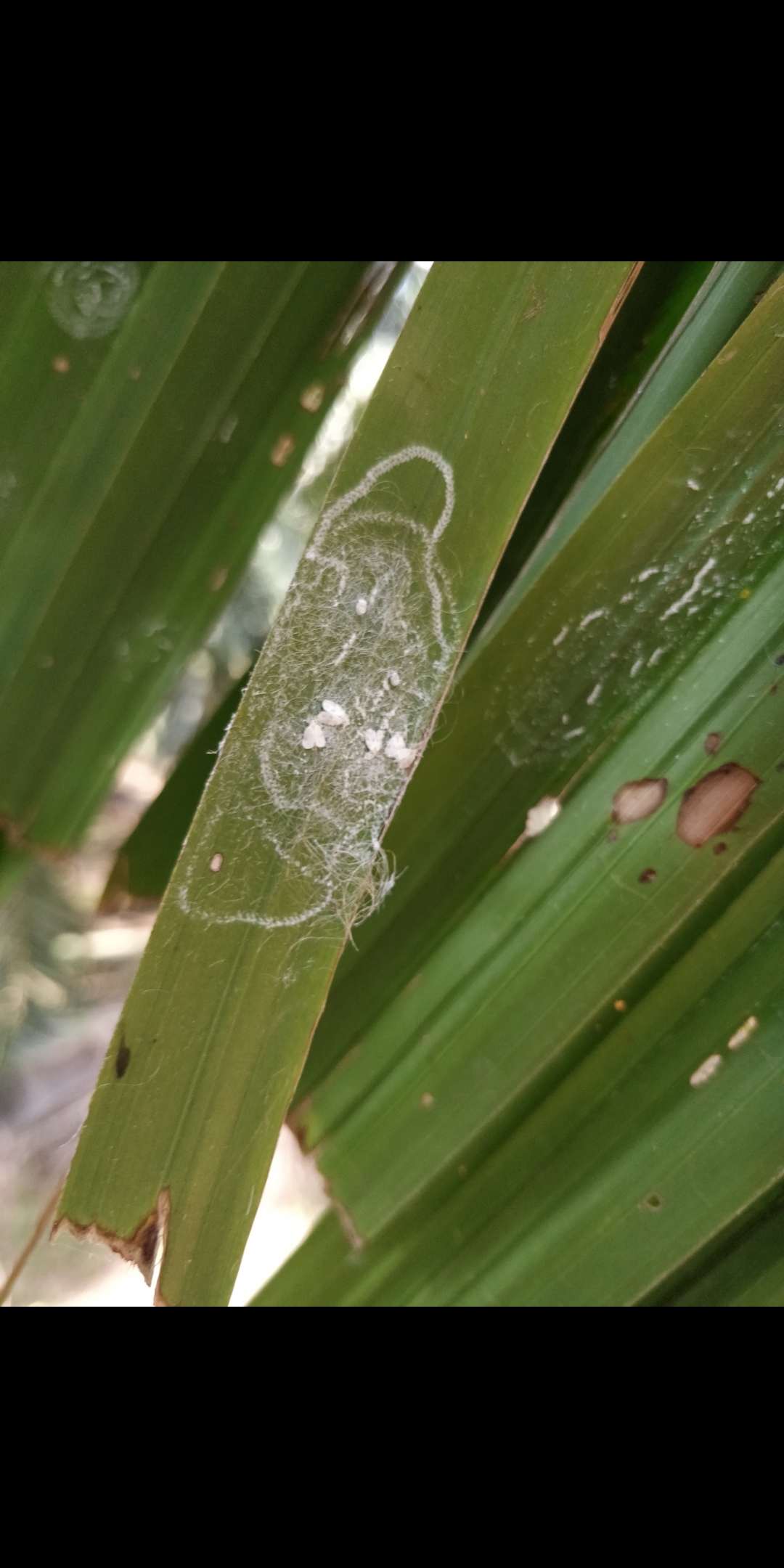
|
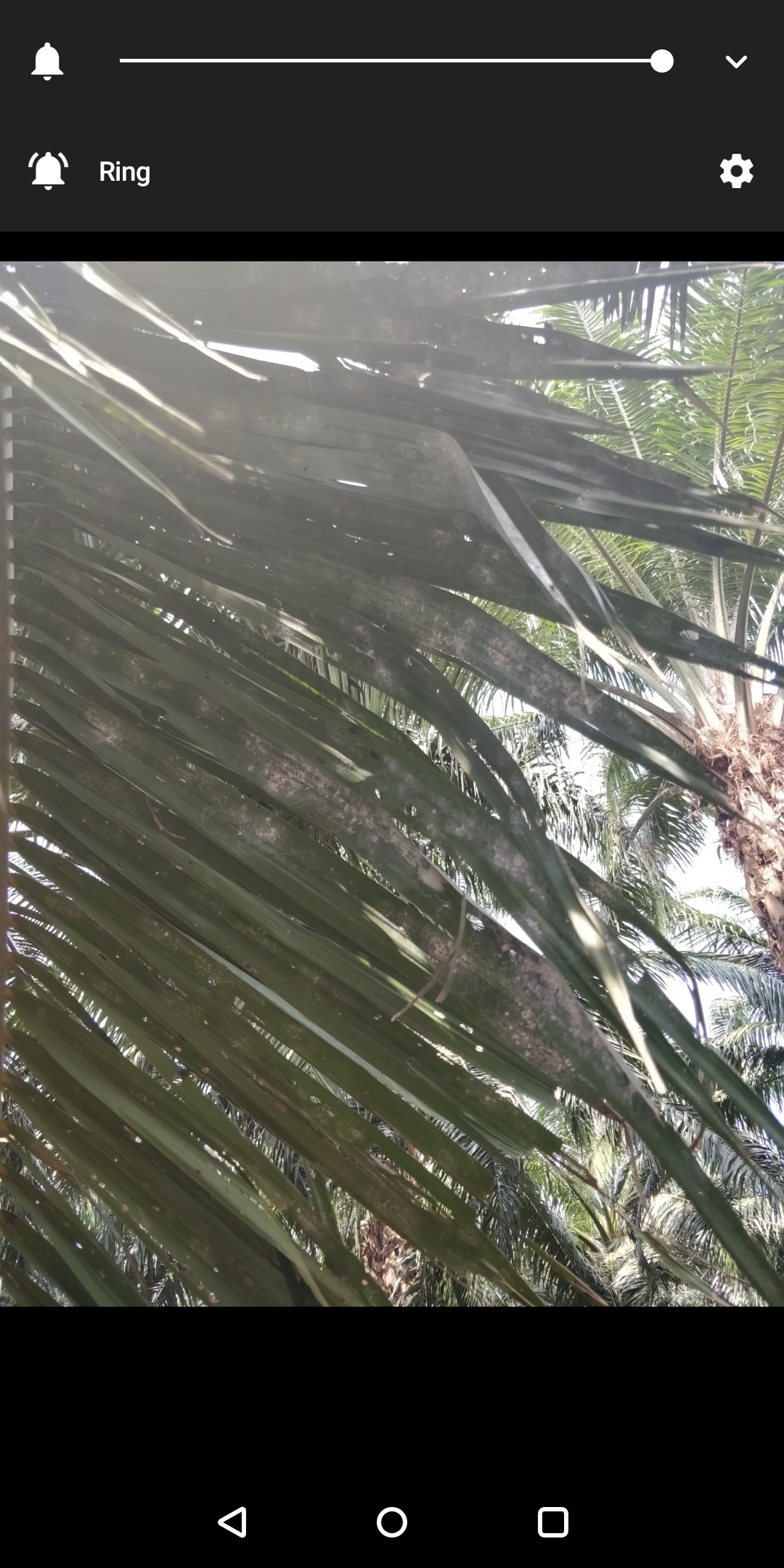
| |
| Ramakrishnan | MAIZE | THE LARVAE WILL FEED & MAKE BOREHOLES ON NEWLY EMERGED LEAVES |
![]()
|
![]()
|
![]()
| |
| V.Raghavendra reddy | MAIZE | Stunted growth, leafs are eaten, dusty formation inside stem |
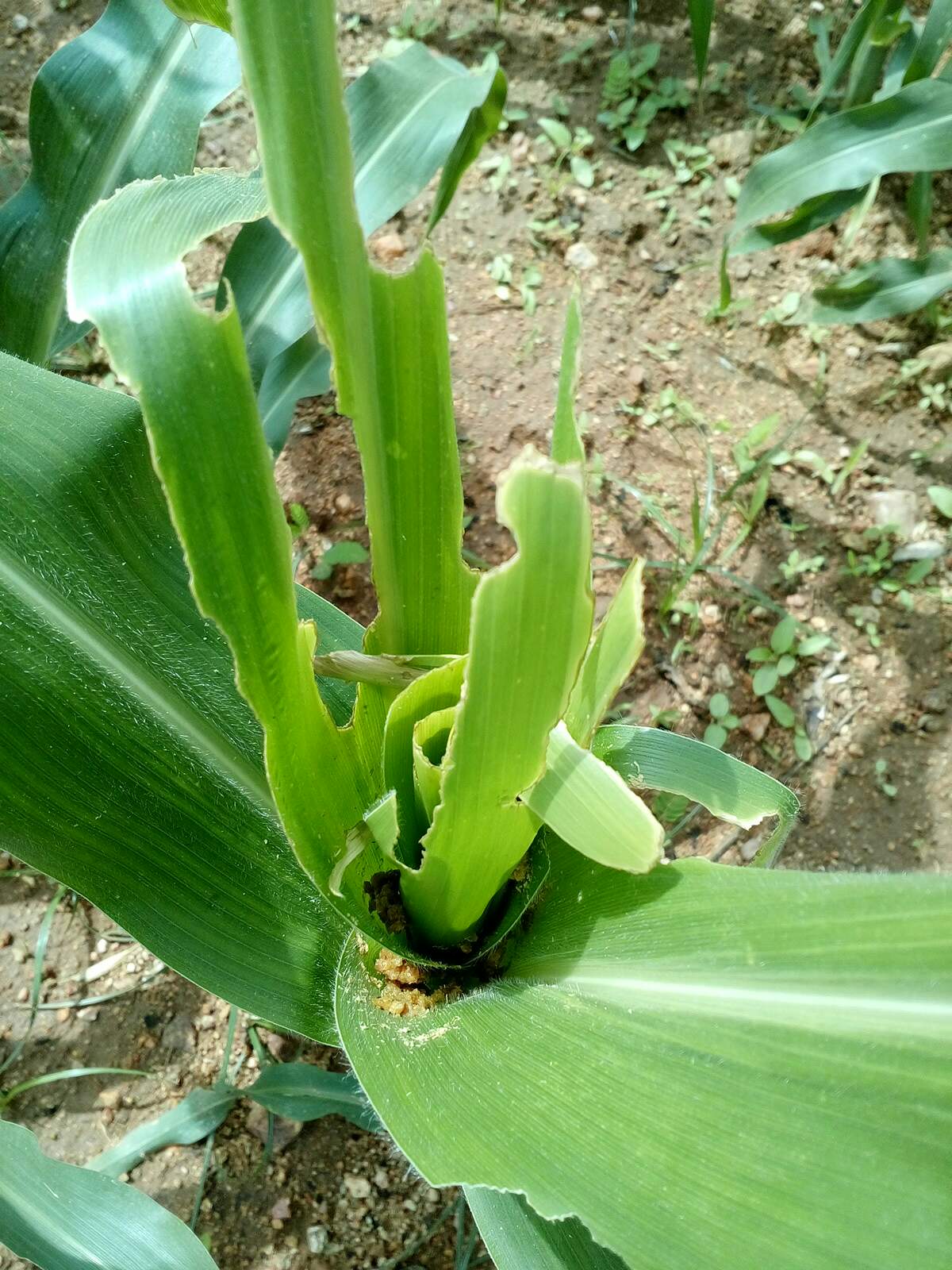
|
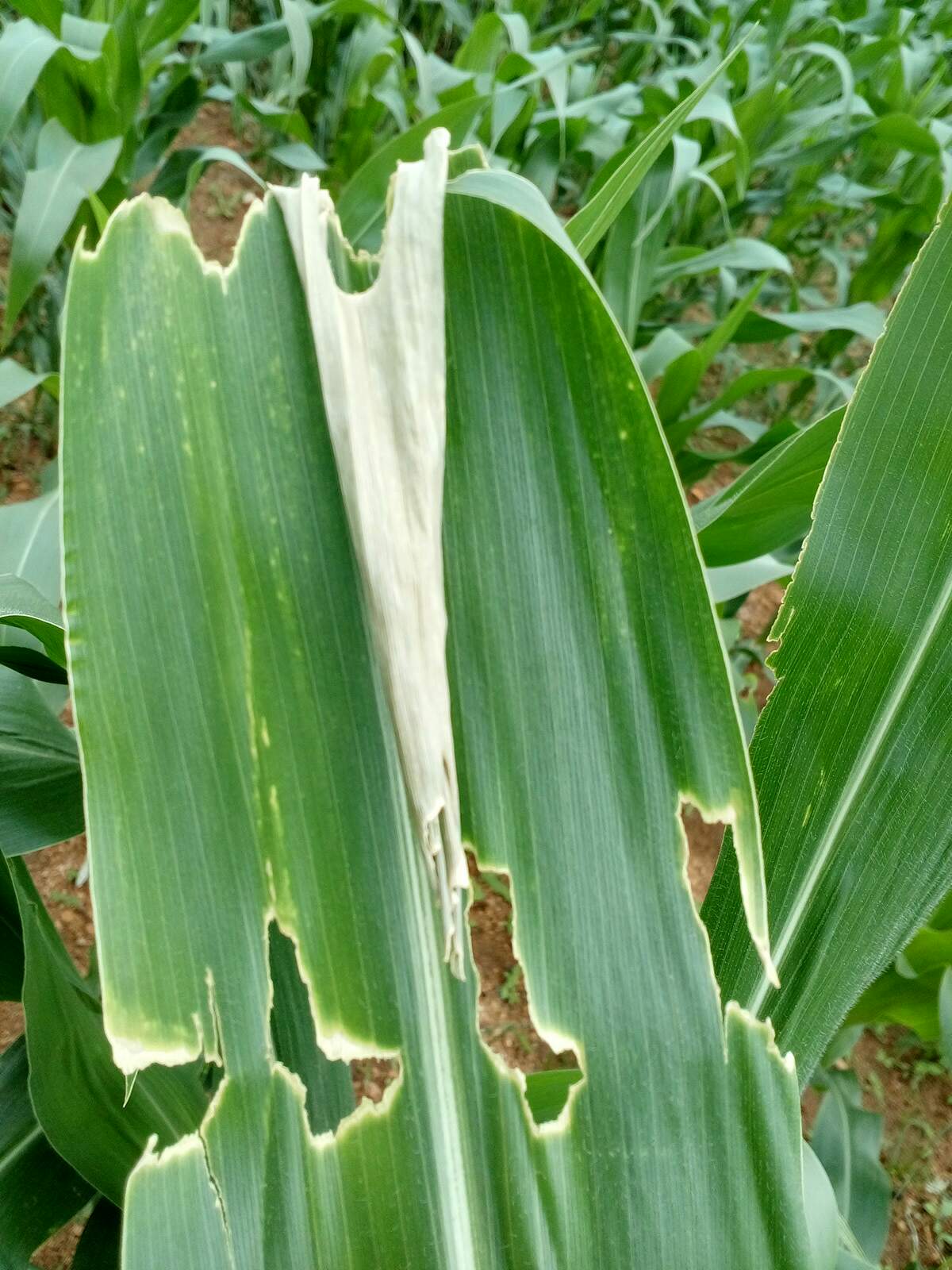
|
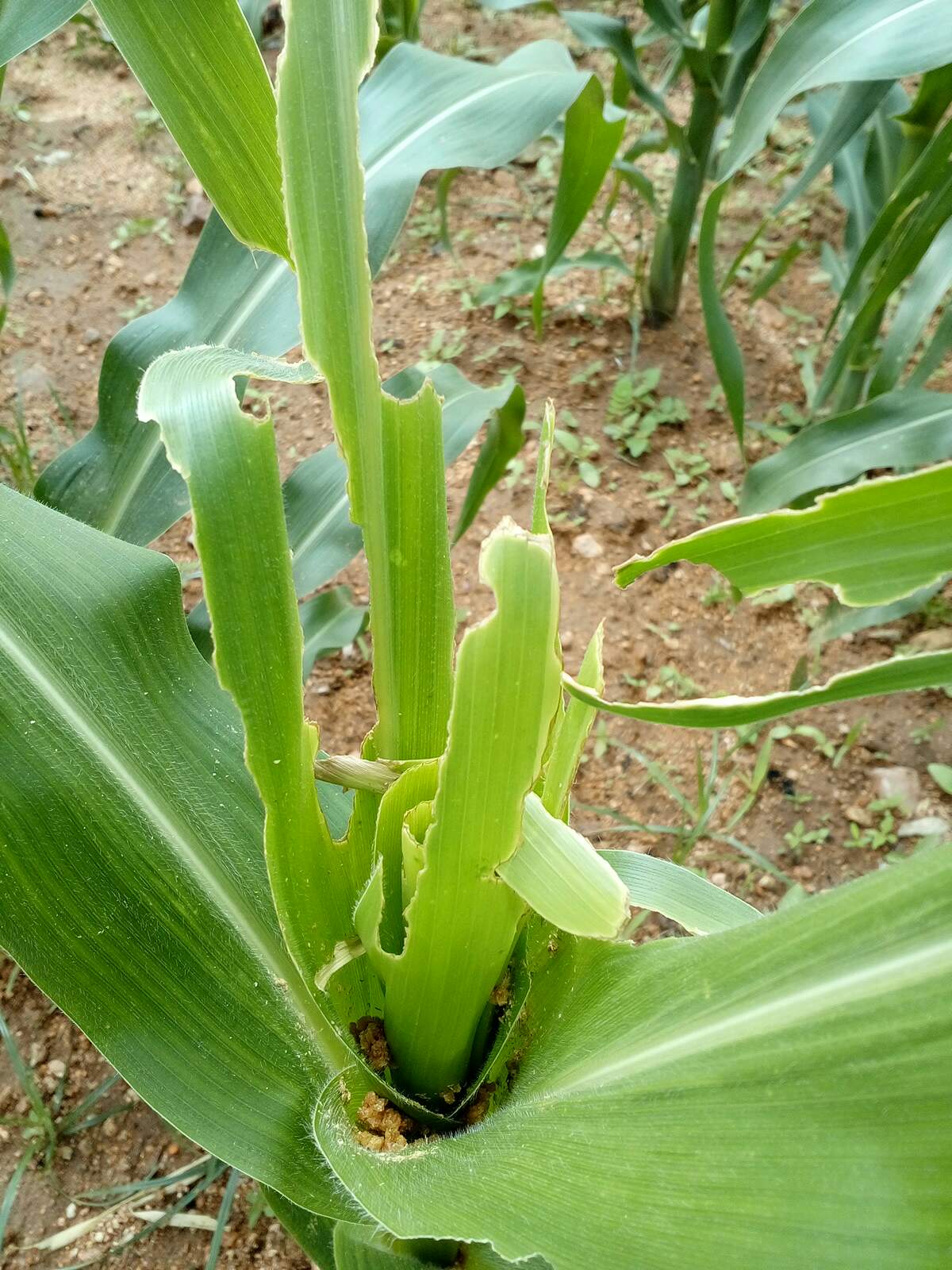
| |
| hareesh | COTTON | 3-4 lower leaves of almost all plants showing as leaf mining and shrinking of upper leaves
1of ten plants showing chlorophyll decrease |
![]()
|
![]()
|
![]()
| Please indicate the specific pest/ disease problem of the crop along with supporting images for diagnosis and suggestions. |
| Deepak | SOYABEAN | I am using Soyabean as intercrop in Lemon Plantation. The Lemon plants have dried (8 out of 600). It seems to have sheared. I am practicing organic agriculture. Please suggest 1. would this bug impact soyabean 2. what is the solution to save lemon |
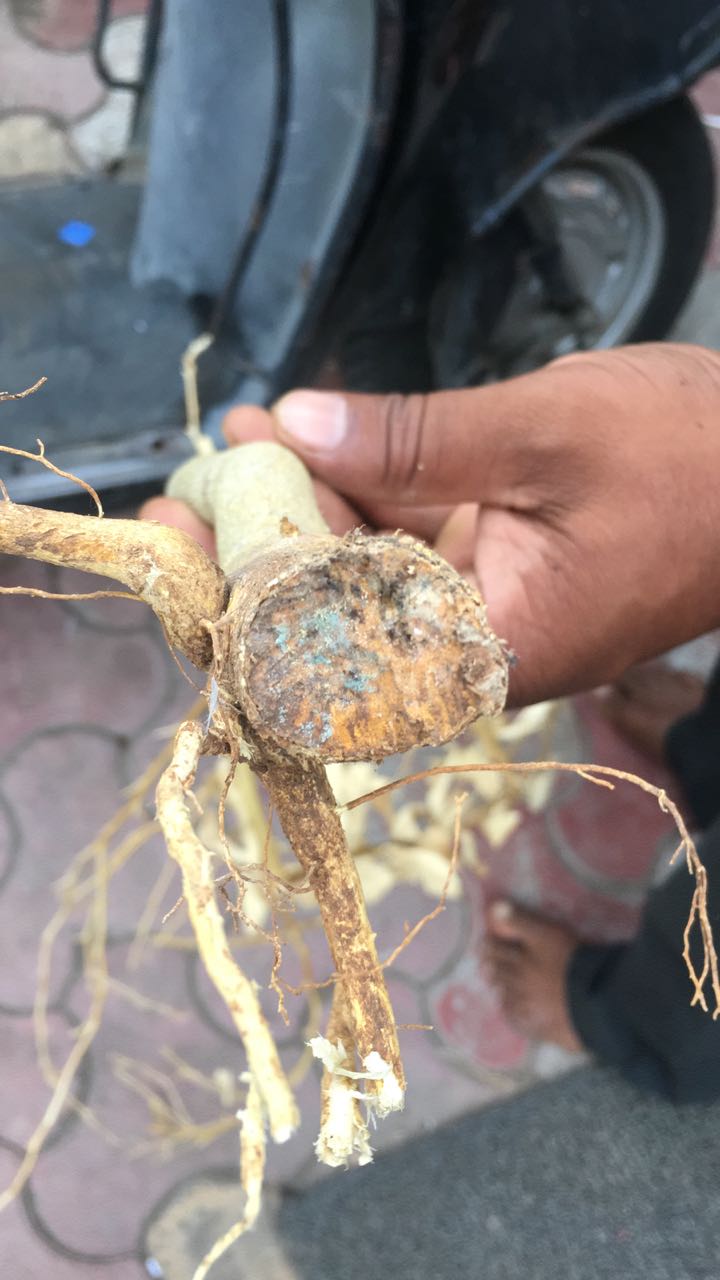
|
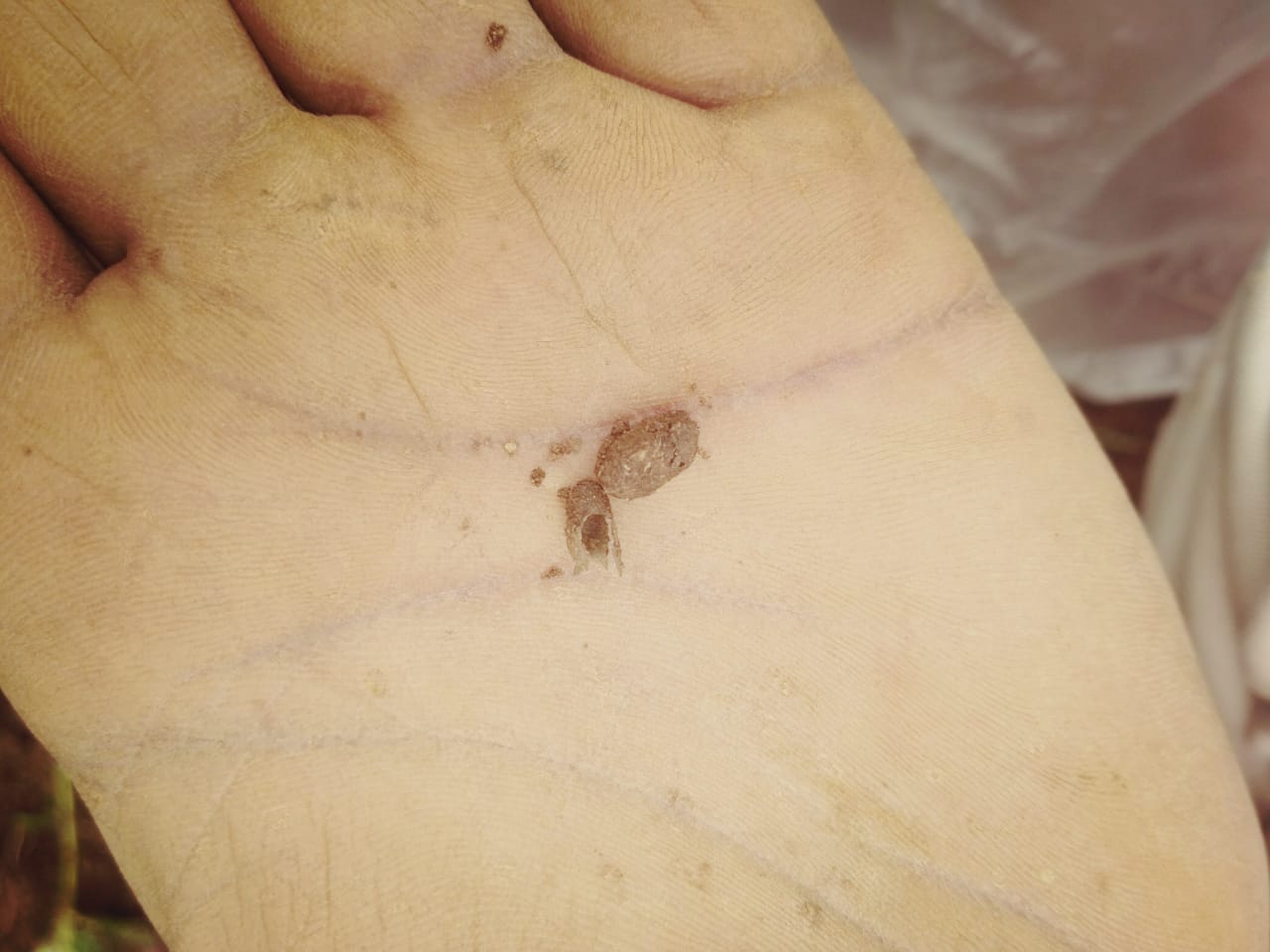
|
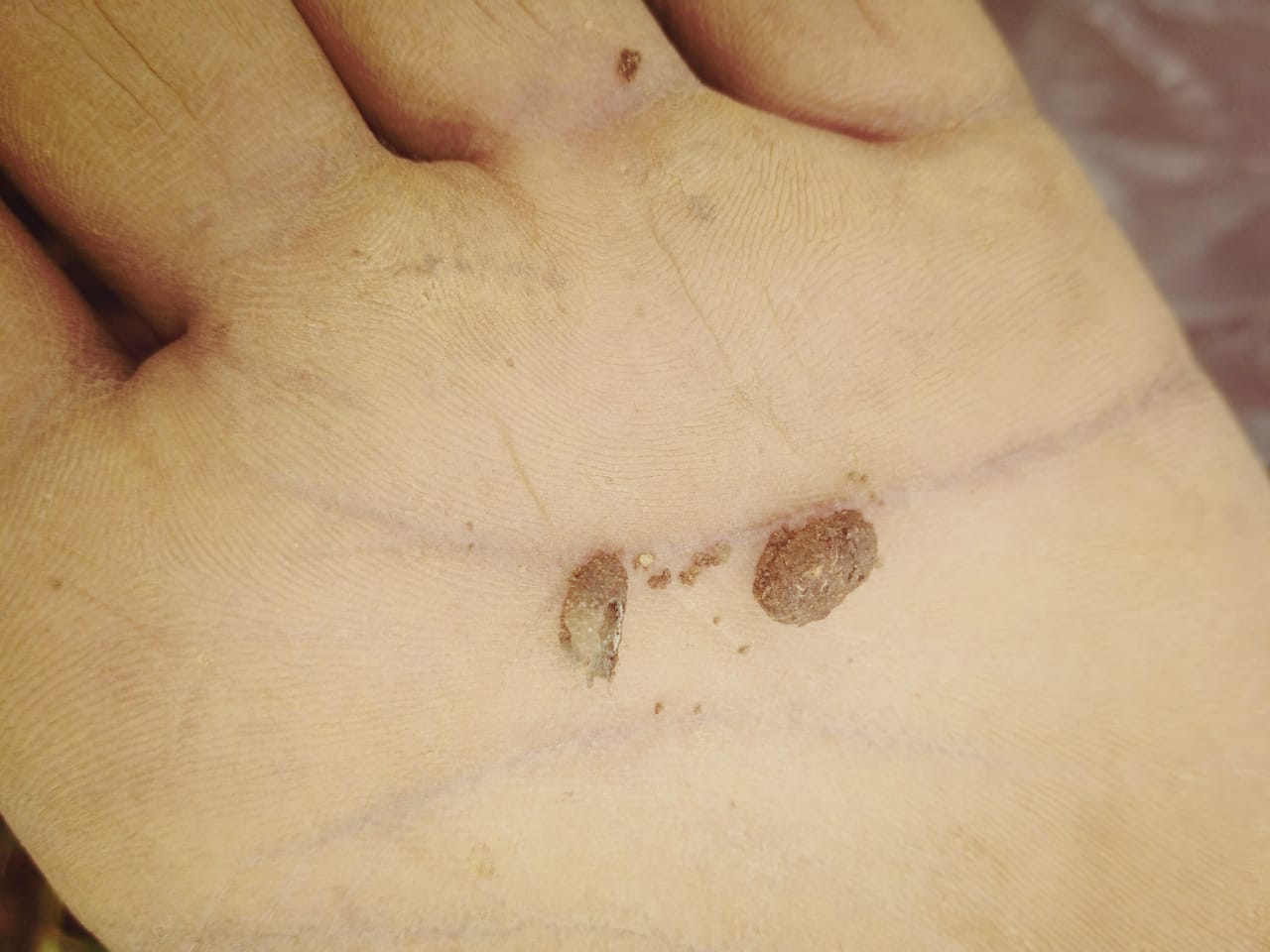
| please send the images showing above ground symptoms of the plant along with vertical section of the stem for diagnosis |
| Janardhana Reddy Kota | BARLEY | Dear Sir
I could see the bubbles on Guava fruits in my filed. Not able to undestand the problem .
Please provide me the suggesstions how to control it.
Regards
Janardhana Reddy Kota
9704405012 |
.jpeg)
|
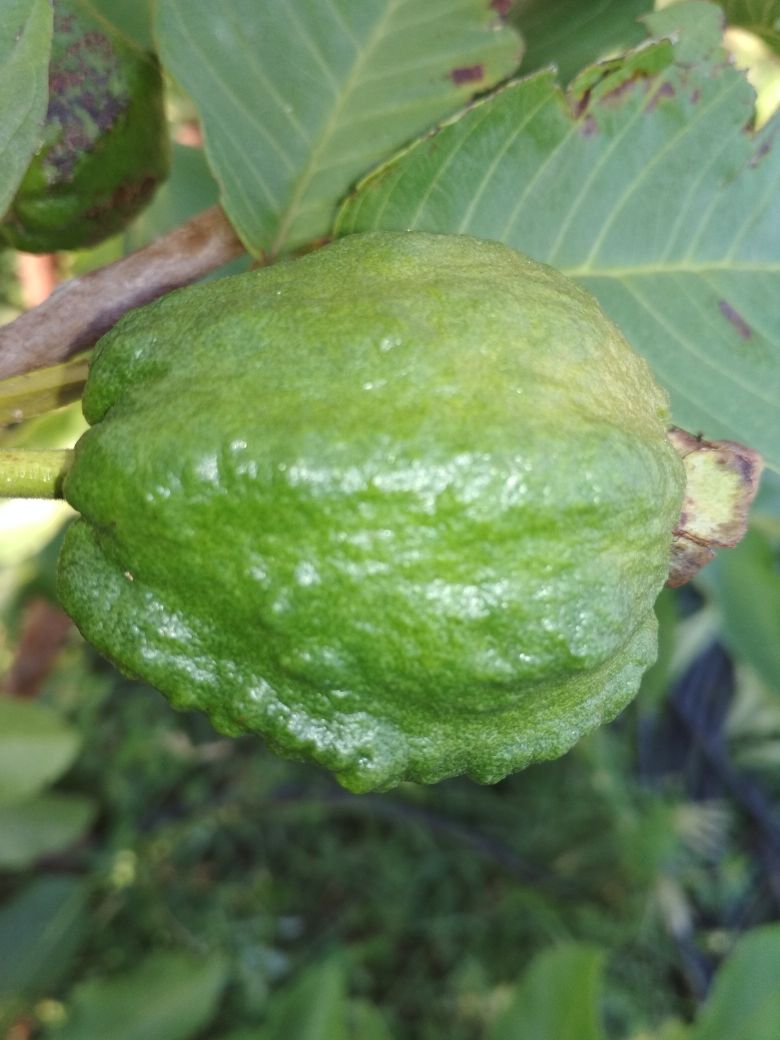
|
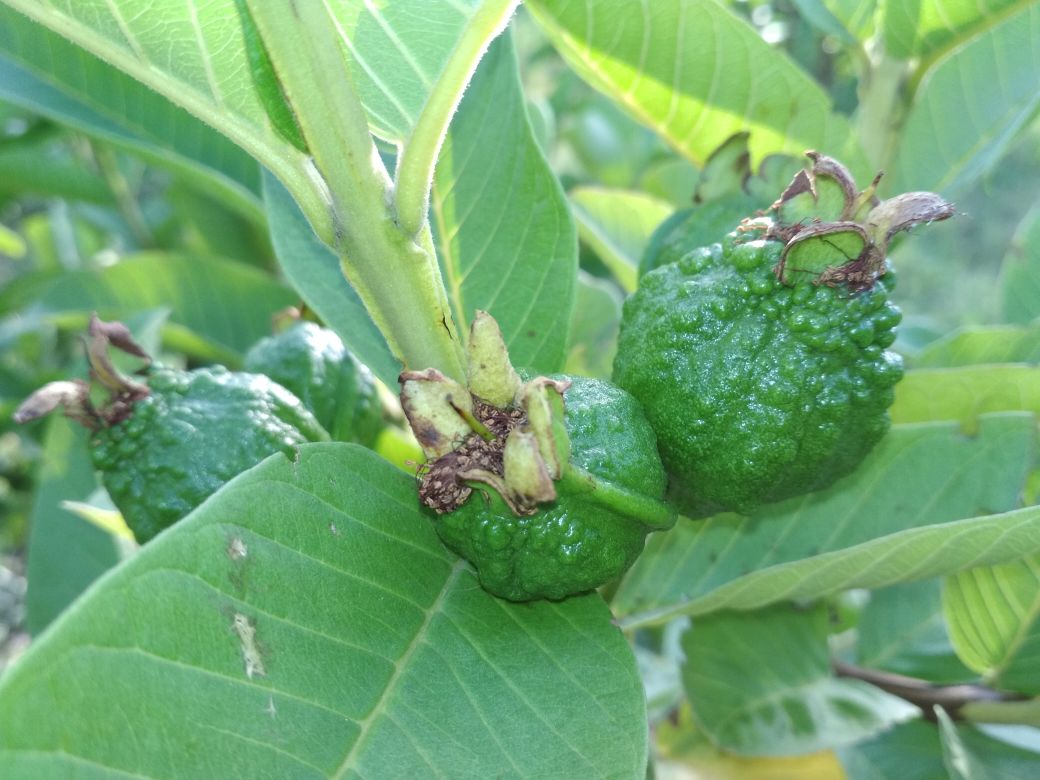
| |
| Karna Reddy | COW PEA | Sir- this is pomegranate plant. Developed yellowing of leaves with brown dots on the back of leaves. No issues till 2 days back. We give 2 to 3 days once. Water soluble 19:19:19 NPK was given about a month back through drip. Please advise what the issue is and how to treat them. thanks |
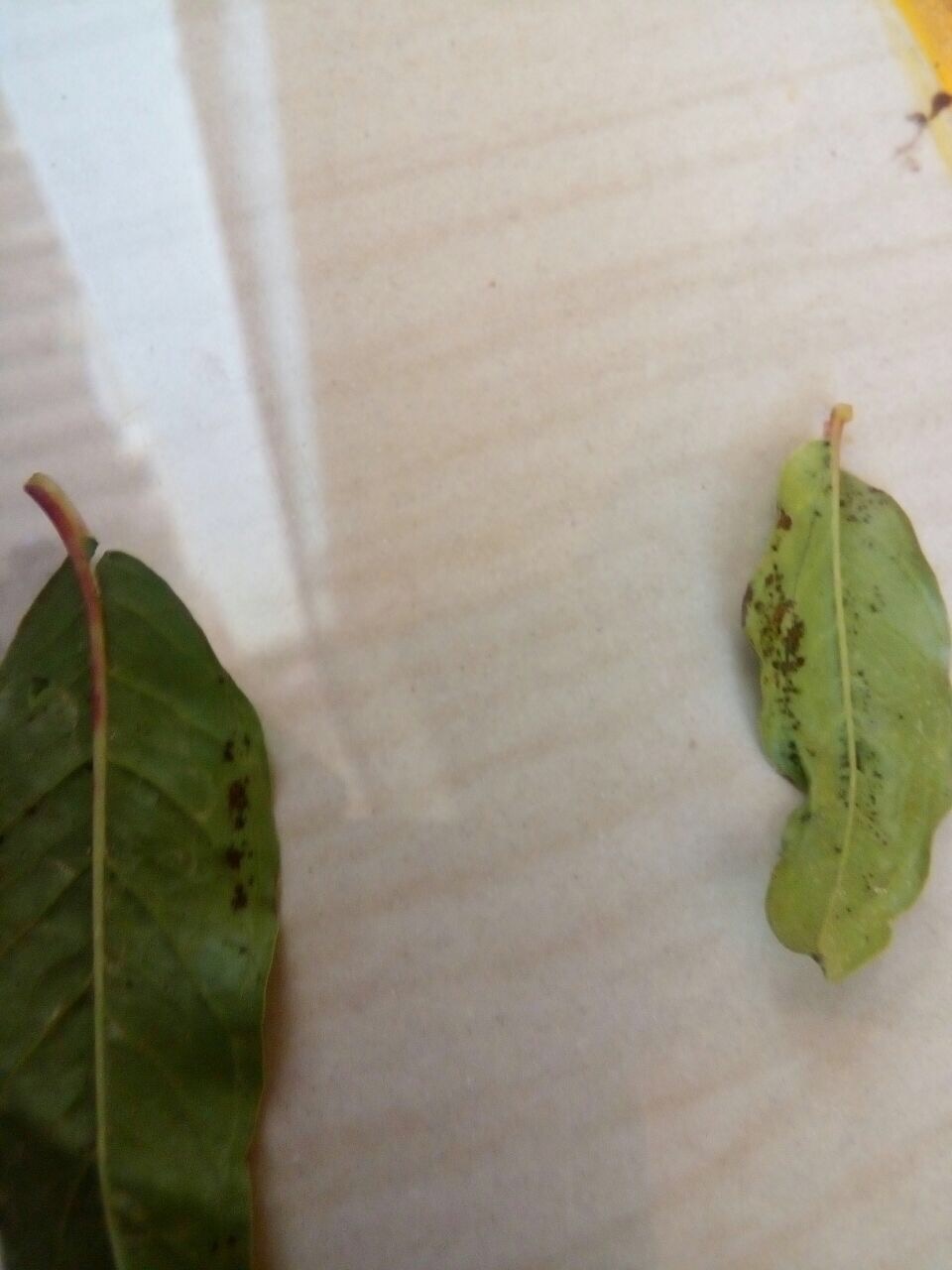
|
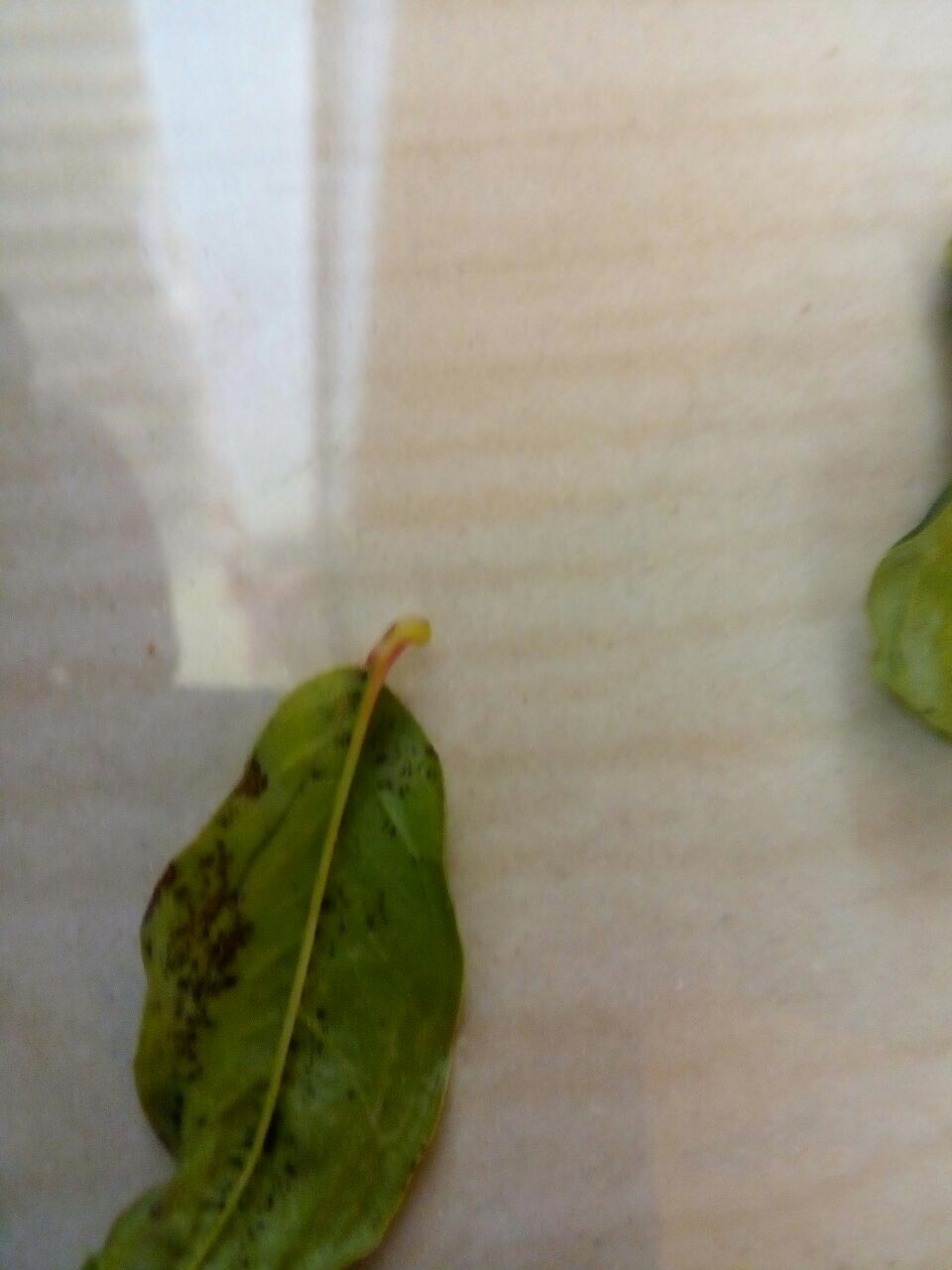
|
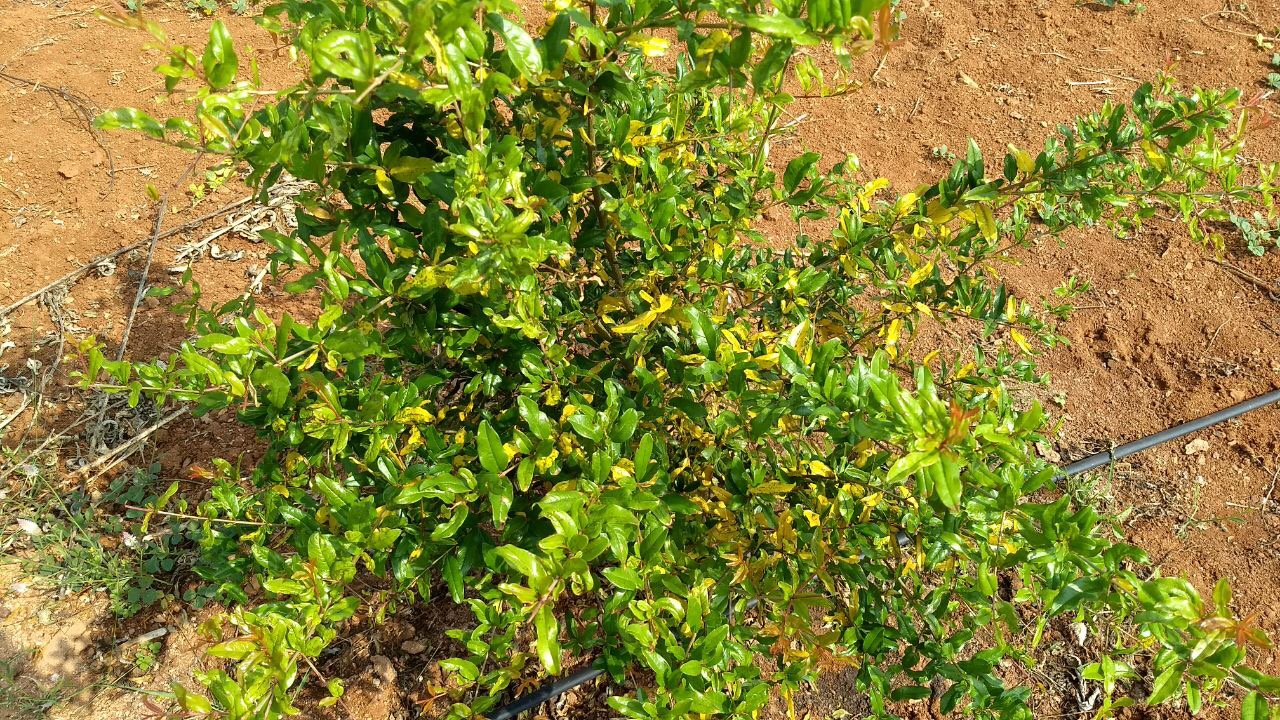
| |
| Ashok | GROUNDNUT | How to request/get Bio Fertilizer and Pesticide mother cultures from NIPHM. Please provide the details or contact person and number. |
![]()
|
![]()
|
![]()
| |
| KISHORE | BARLEY | DRYING OF WHOLE PLANT |
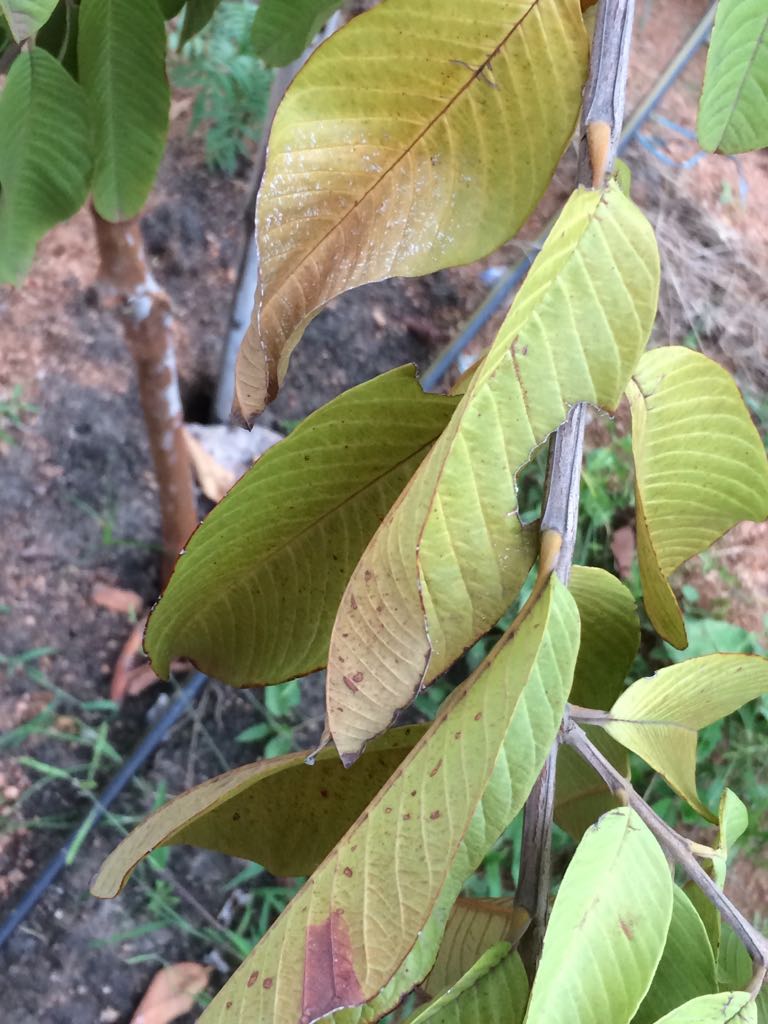
|
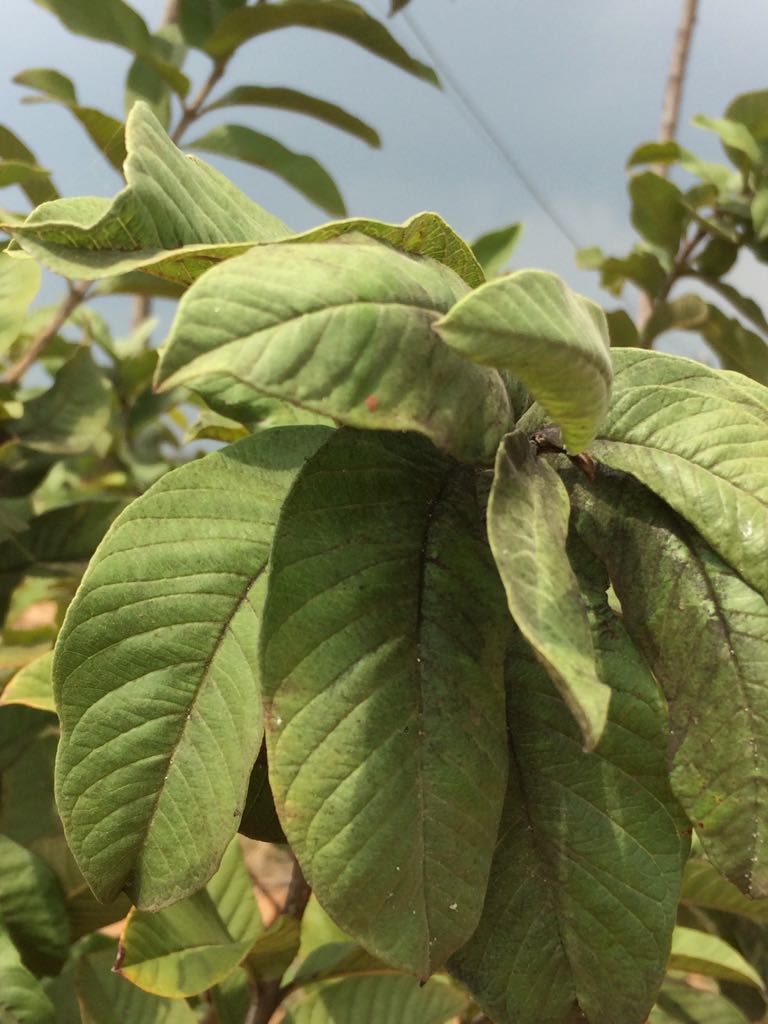
|
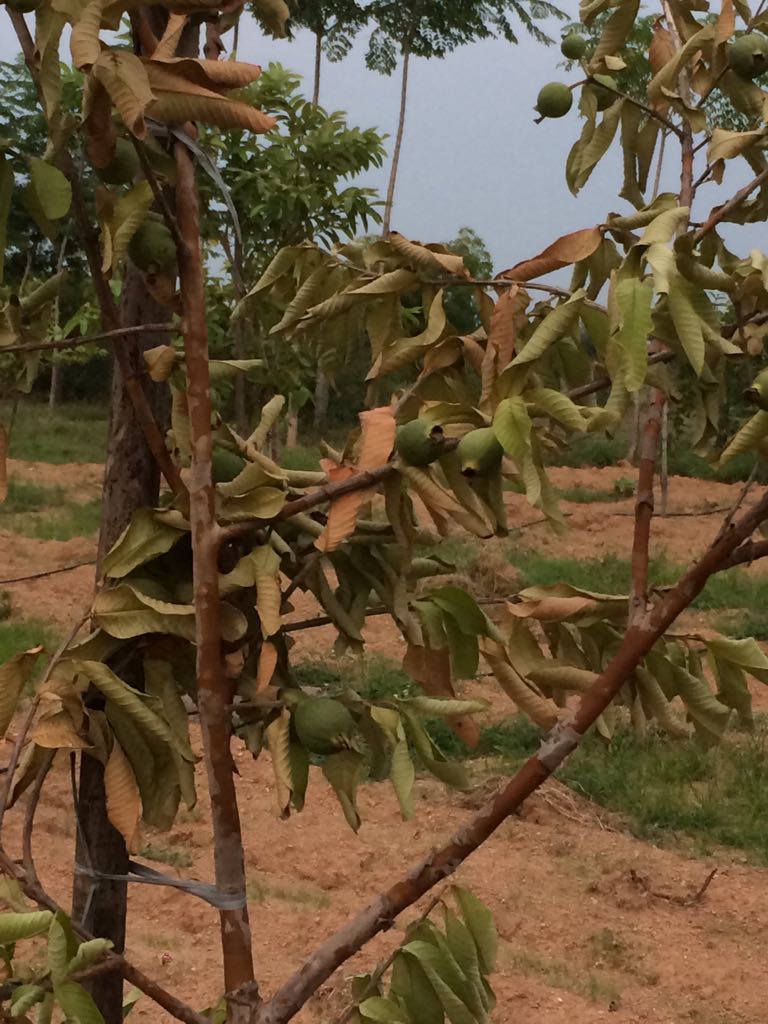
| |
| Sachin Aware | SOYABEAN | Due to Steam bore plant become dried and soya pod filling is also affected. |
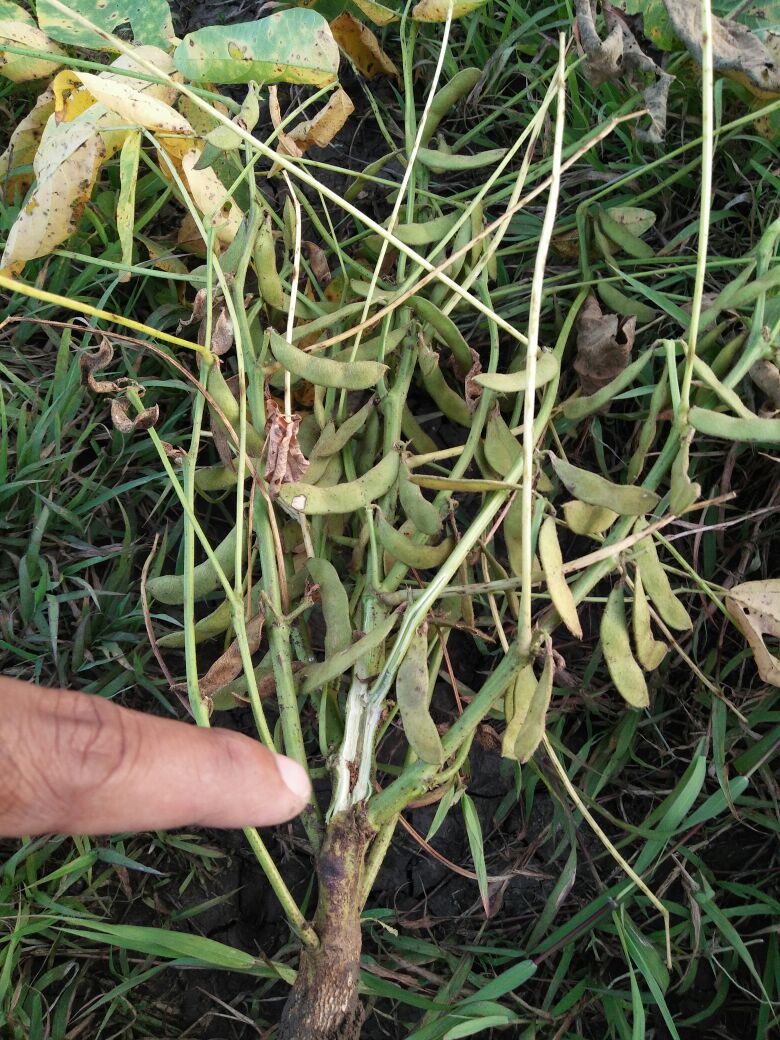
|
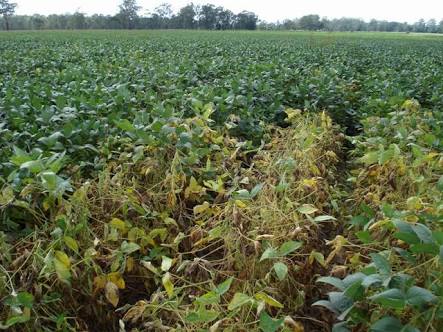
|
![]()
| |
| anand Hongal | SUGARCANE | severely damaged sugarcane crop |
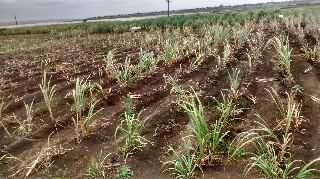
|
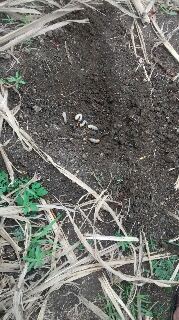
|
![]()
| |
| Baljinder singh | PADDY | Leaves getting whitish with streaks |
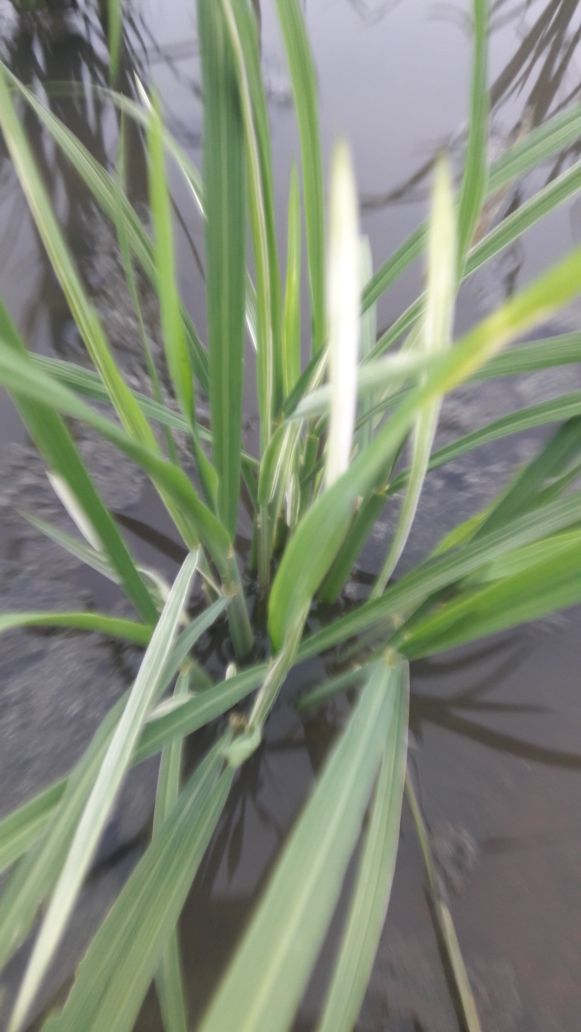
|
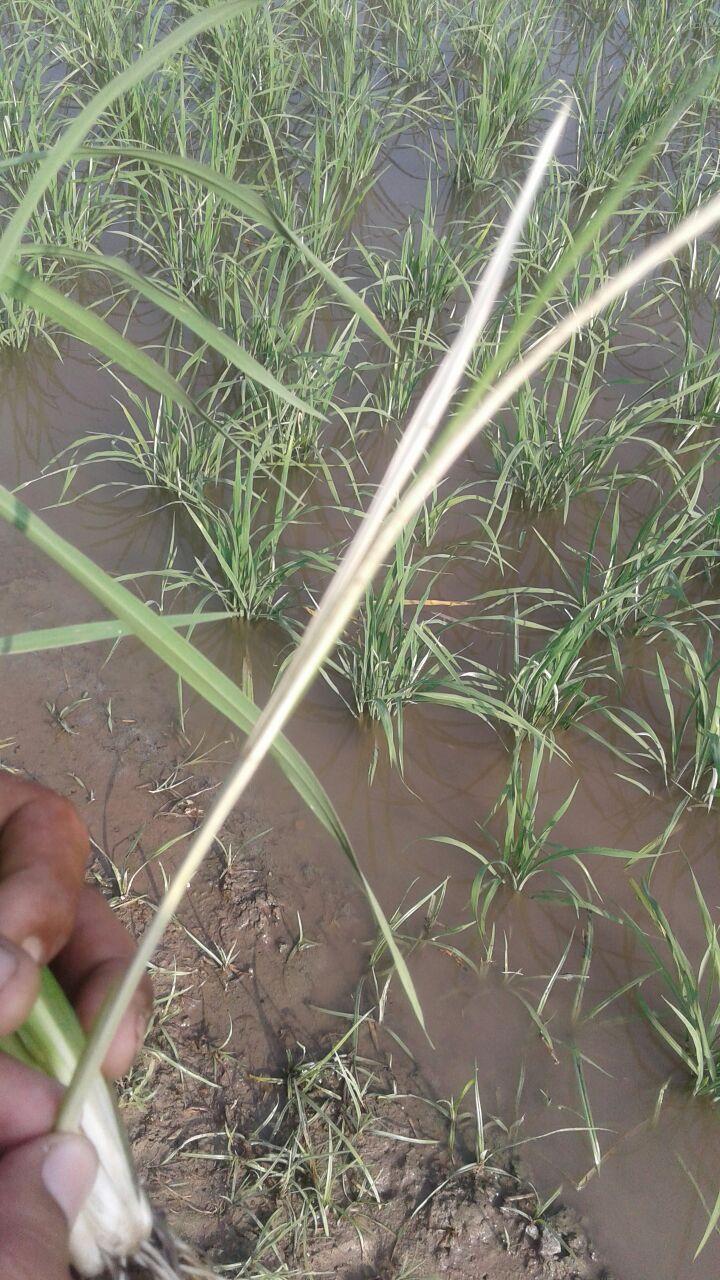
|

| |
| afdasd | TAPIOACA | |

|
![]()
|
![]()
| It is not clear whether the problem is associated with tapioca or some other crop. Please specify the crop for suggestions. |
| shankar mule | COTTON | growth stunted |
![]()
|
![]()
|
![]()
| |
| dryksingh | WHEAT | |
![]()
|
![]()
|
![]()
| Please indicate the specific pest/ disease problem of the crop along with supporting images for diagnosis and suggestions. |
| Sunil k | PADDY | On Farm diseases Finding,
Can u please translate the following diseases into Telugu sir,,
1.Rice root knot
2.Rice root rot
3.Bacterial blight
4.Bacterial leaf streak
5.Bacterial sheath brown rot
6.Bakanae
7.Brown spot
8.BLAST(neck,node,color,leaf)
9.False smut
10.Leaf Scald
11.Narrow brown spot
12.Red stripe
13.Rice grassy stunt
14.Rice ragged stunt
15.Rice stripe virus disease
16.Rice Yellow Mottle Virus
17.Sheath blight
18.Stem rot
19.Sheath rot
20.Tungro
21.stem borer
22.Root aphid
23.rice leaf hopper
Because i need explain my village farmers. |
![]()
|
![]()
|
![]()
| |
| MVSR Raju | MAIZE | Damageing crap |

|
![]()
|
![]()
| Erection of pheromone traps @ 10/ha, spray neem oil @ 1000ml in 200litre water per acre, poison baiting with monocrotophos 0.5 litre or carbaryl 0.5 kg + jaggery 0.5 kg+ rice bran 5kg/acre. As a last choice, spray quinalphos @ 400ml or monocrotophos @ 320ml or neem oil @ 1000ml in 200litre water per acre. |
| k.srinu | COTTON | |
![]()
|
![]()
|
![]()
| Install yellow sticky traps @ 10 /acre. Avoid excessive application of urea. Spray neem oil (1500 ppm) @ 5 ml/l twice i.e. @ 45 and 60 days after sowing. As a last choice, spray Triazophos or Profenofos @ 2ml/ l or Acephate @ 1.5 g/ l or Diafenthiuron @ 1.25 g/l. Do not use synthetic pyrethroids as they result in resurgence of whitefly population.
|
| ANIRBAN SENAPATI | PADDY | |
![]()
|
![]()
|
![]()
| For the management of leaf folder in rice, use coir rope for dislodging the larvae on to kerosenised water (1 L of kerosene mixed on 25 kg soil and broadcast in 1 ha). Spray acephate @ 1.5 g/ L water or chlorpyriphos @ 2.5 ml/L water or caratap hydrochloride @ 2 g/ L or chlorantriniprole @ 0.4 ml/L of water. Apply chemicals as the last choice only if the pest population cross ETL.
|
| NAKUL PRAKASH CHAUDHARI | GROUNDNUT | |
![]()
|
![]()
|
![]()
| It appears to be a viral problem. Please give details of any other symptoms along with supporting images for accurate diagnosis and suggestions |
| Aman prateek ojha | WHEAT | |
![]()
|
![]()
|
![]()
| Please indicate the specific pest/ disease problem of the crop along with supporting images for diagnosis and suggestions. |
| Aman prateek ojha | SORGHUM | |
![]()
|
![]()
|
![]()
| Please indicate the specific pest/ disease problem of the crop along with supporting images for diagnosis and suggestions. |
| RITAJ | WHEAT | TERMITER PROBLEM IN WHEAT |
![]()
|
![]()
|
![]()
| Termites damage the crop at various growth stages from seedlings to maturity and feed on the roots and underground stem. The damaged plants dry up completely and are easily pulled out. Infestation is heavy under unirrigated conditions and in the fields where un-decomposed farm yard manure is applied before sowing., For effective management , it is suggested to apply well rotten farm yard manure , deep ploughing of fields during summer, dismantle termitaria (termite mounds) around field and kill the termite queen, destruct the crop residues , apply neem cake@ 80 kg/acre, seed treatment with chlorpyrifos 20% EC @ 3 – 4 ml/kg seed and 0.8-1.2 l/acre as soil application |
| LISYMOL J VADUKKOOT | BARLEY | To verify the species
is it suitable for multiplication for distribution among farmers as poultry/ cattle feed or as green manure |
![]()
|
![]()
|

| This is Azolla pinnata and it is suitable for mass multiplication as green manure in rice fields |
| Sairam | COTTON | In above field red chillies is not available. My crop is redchille. The crop is dead because of root zone will be damaged. We pour copper to root zone but no use please suggest me good solution |
![]()
|
![]()
|
![]()
| It is not indicated whether the problem is in nursery or mainfield. May be due to Damping off, wilt or root rot. Please send the details along with supporting images for further suggestions. |
| Vilas Nikum | PADDY | Abc |

|
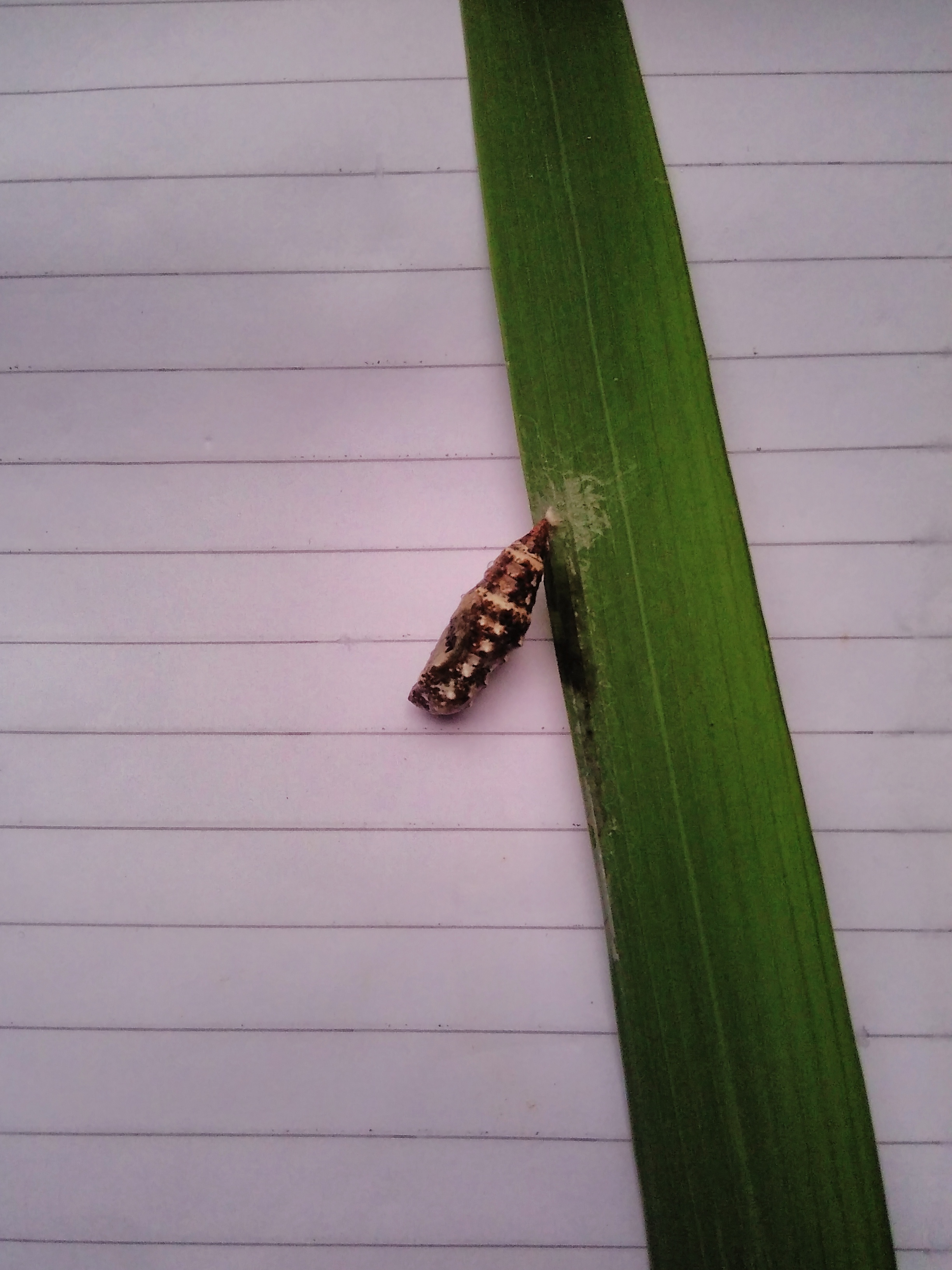
|
![]()
| The image sent by you is the pupa of Rice butterfly (Melanitis sp). It is a minor pest on rice. Control measures are not required if seen in small proportion on rice. |
| vvv | COTTON | |
![]()
|
![]()
|
![]()
| Please indicate the specific pest and disease problem of the cotton crop along with supporting images for diagnosis and suggestions. |
| srinivasareddy | BARLEY | |
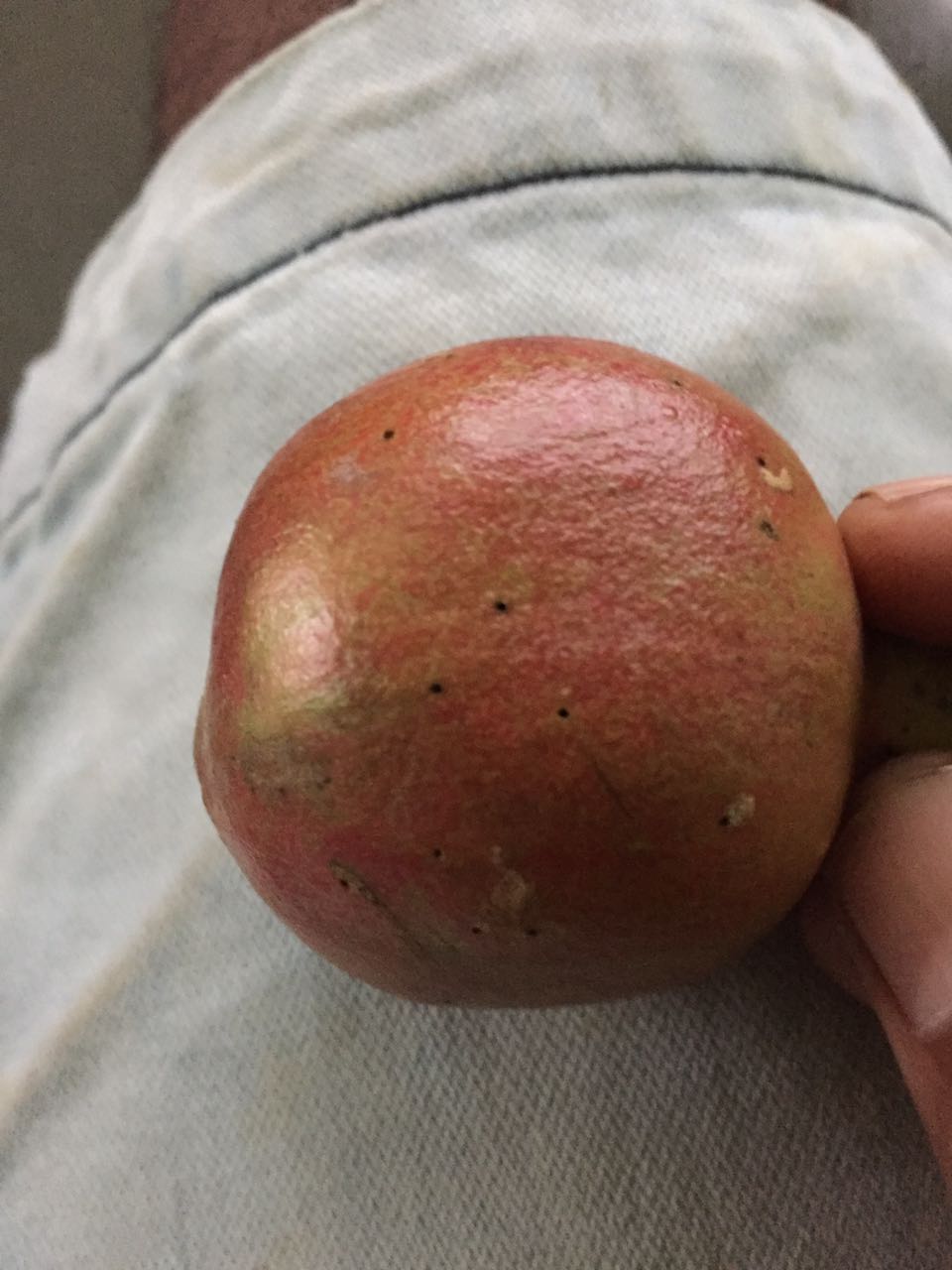
|
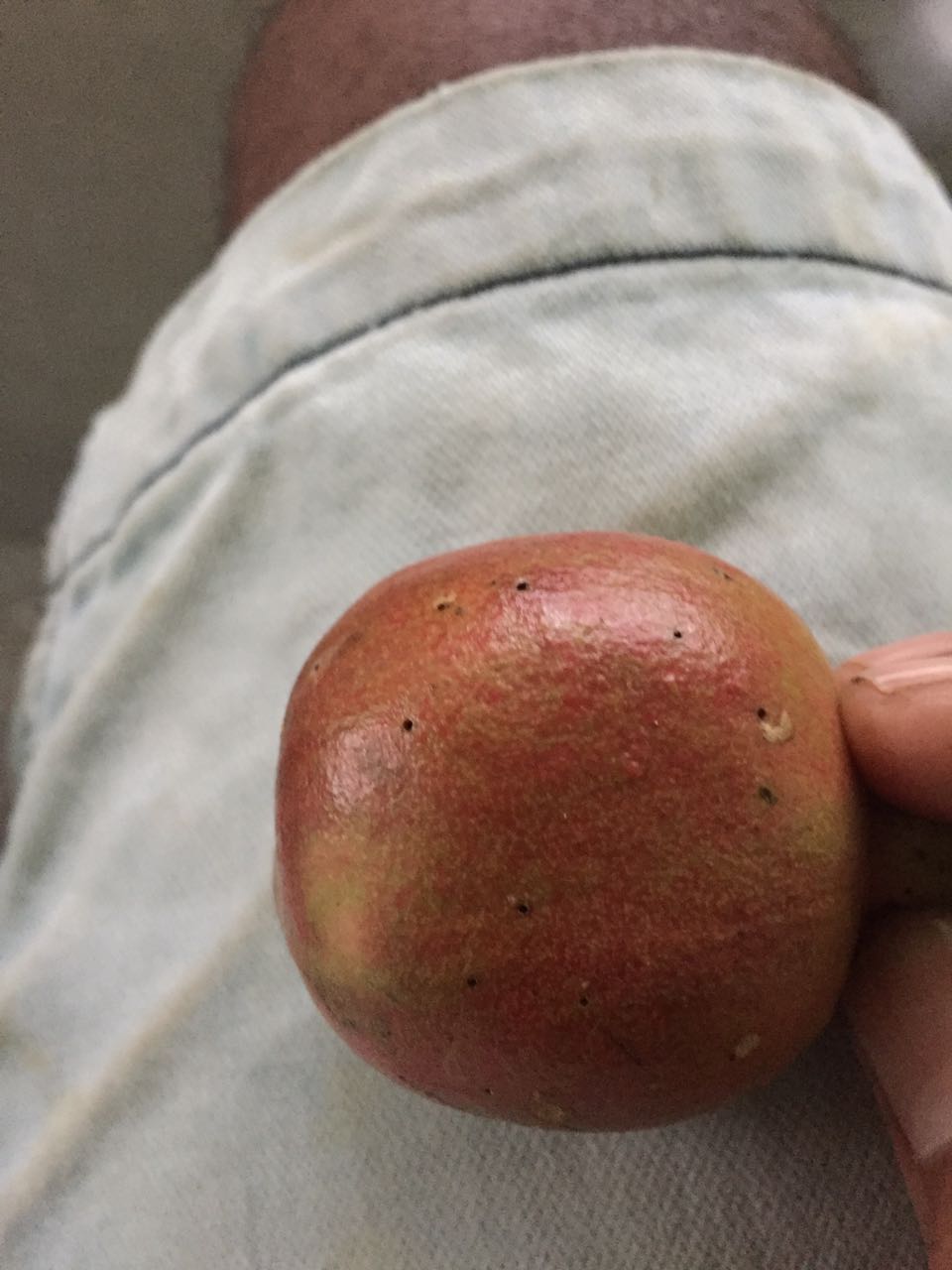
|
![]()
| The symptoms of damages provided by you is NOT CLEAR. Please re-send the clear images of larva and adult of sucking moth for diagnosis and suggestions. |
| Rafeeqahmed M Contractor | BAJRA | |
![]()
|
![]()
|
![]()
| Please indicate the specific pest and disease problem of the Bajra crop along with supporting images for diagnosis and suggestions. |
| Binder singh | PADDY | |
![]()
|
![]()
|
![]()
| If infestation is moderate, drain the field for 3-4 days. Spray Acephate @ 1.5 g/L water or ethofenoprox 2 ml/L water. Avoid using Chloropyrifos, Lambda cyhalothrin, profenofos which enhances the activity of Brown Plant Hopper. If infestation is heavy, spray buprofezin 25% SC @ 1.6 ml/L water as the last choice only after the pest population crosses ETL 10-15 hoppers/hill. |
| Gagandeep Kaur | PADDY | |
![]()
|
![]()
|
![]()
| Please indicate the specific disease problem of the crop along with supporting images for diagnosis and suggestions. |
| Rafeeqahmed M Contractor | SUGARCANE | pest infestation |
![]()
|
![]()
|
![]()
| Please indicate the specific pest problem of the Sugarcane crop along with supporting images for diagonisis and suggestions. |
| Sterling | GREEN GRAM | Can you hear me OK? |
![]()
|
![]()
|
![]()
| Please indicate the problem in the Green gram crop and send us the clear photo images. We will diagonise and send you the required solution soon. |
| jyothi j | SESAME | actually i want details of pests on sesame with their damage symptoms images and identification of those pest.if possible please could u attach the images to this mail ID jyothijkmc@gmail.com |
![]()
|
![]()
|
![]()
| The details of Sesame pests with symptoms of damage can be accessed on web site : www.niphm.gov.in – IPM packages – Sesame. If any specific pest/disease problem, please upload the clear image along with other details for accurate diagnosis and suggestions.
|
| Pargat Othian | PADDY | White grain formation |
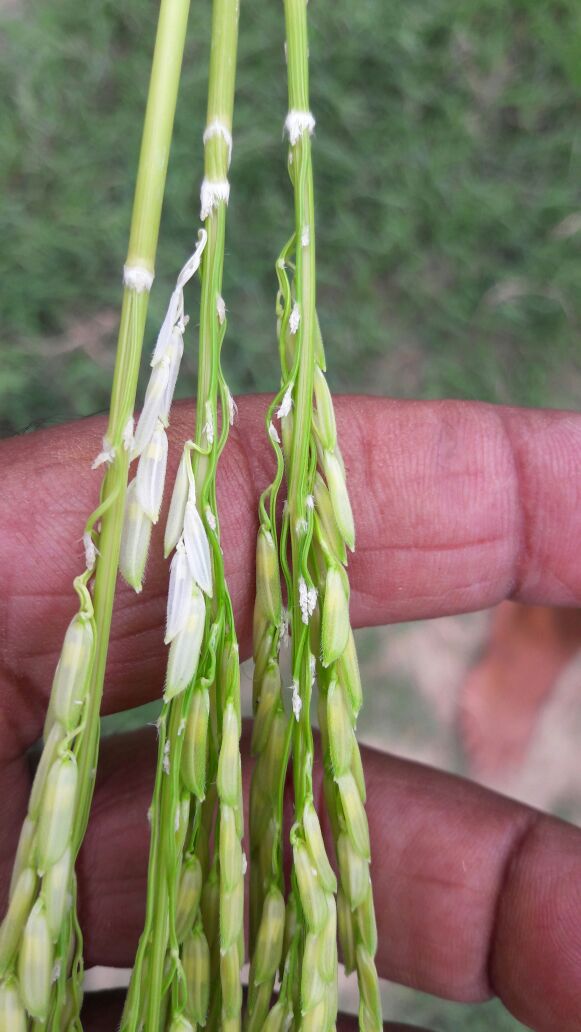
|
![]()
|
![]()
| Chaffy grains in rice may be due to several factors. Based on the image it appears to be whorl maggot. The other associated symptoms of whorl maggot are white or transparent patches, pin holes and distorted leaves etc. Please send the clear images of damaged panicle along with leaves and entire damaged plant for accurate diagnosis and further suggestions. |
| Adhila | COW PEA | Wilting .spreads fast |
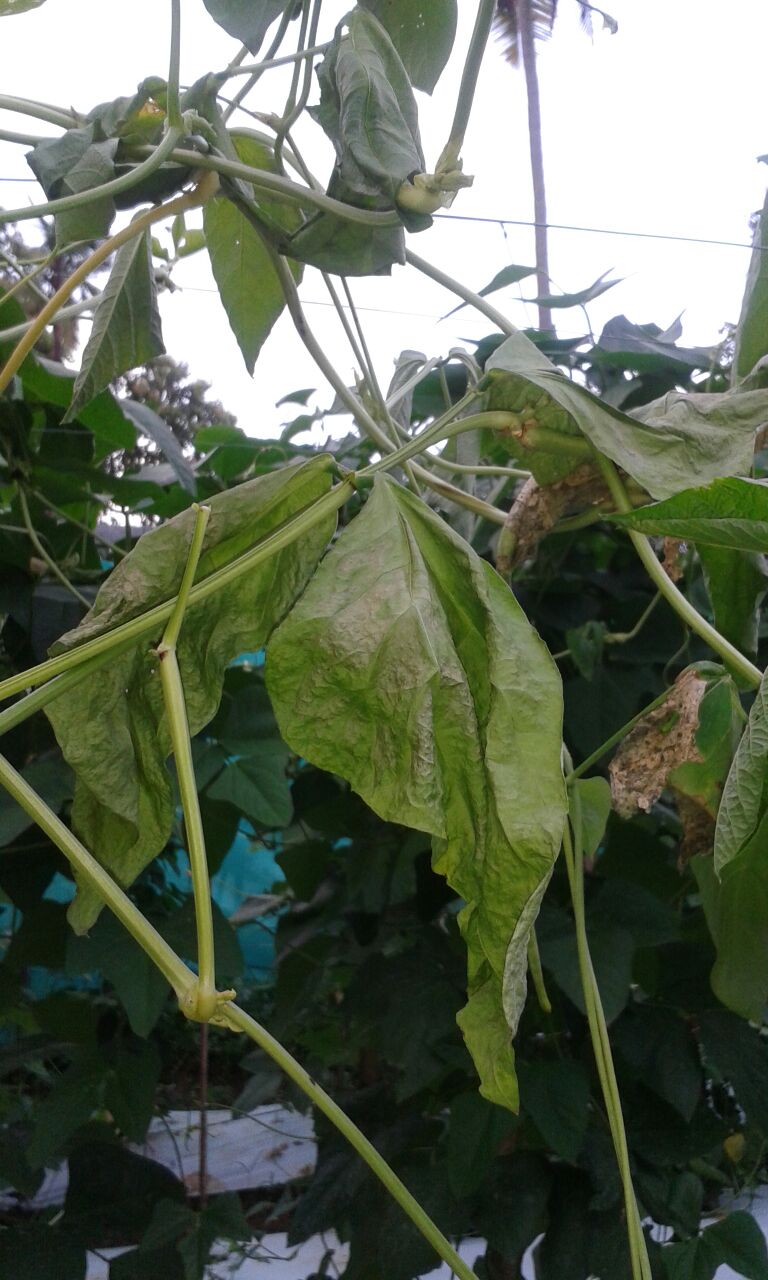
|
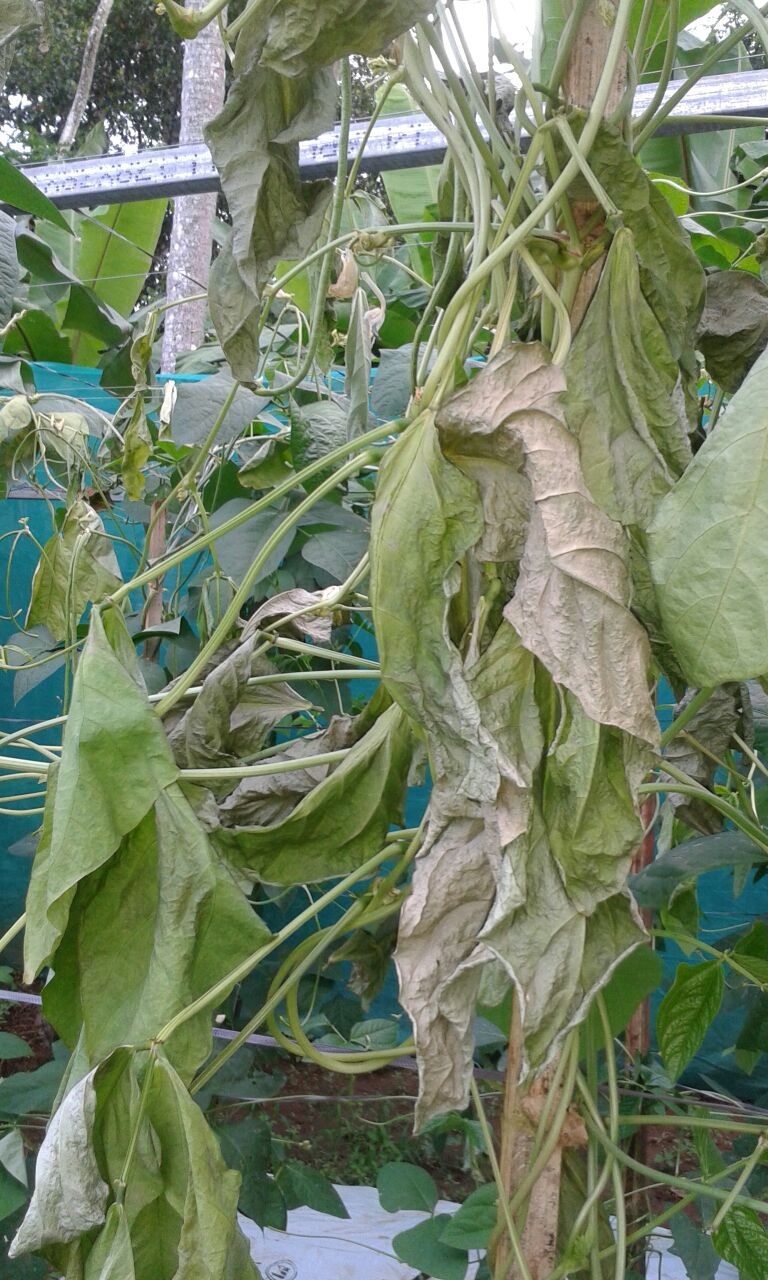
|
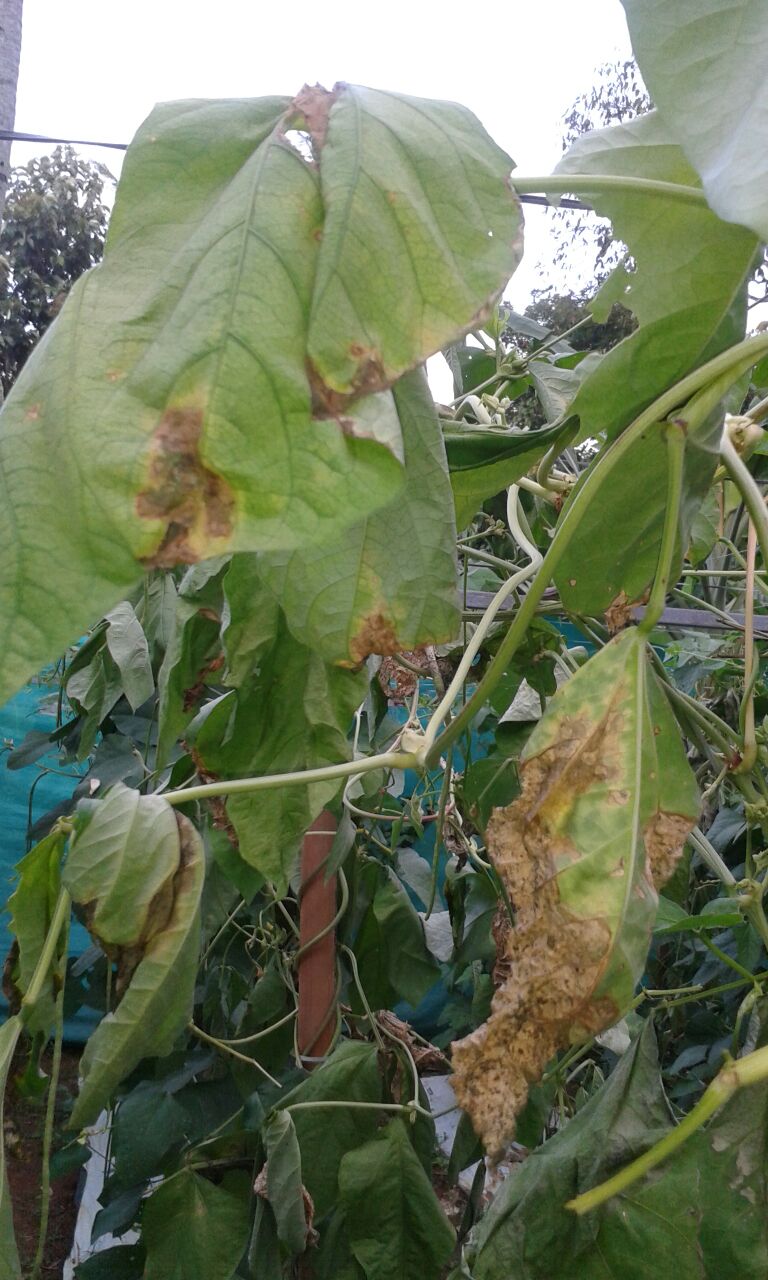
| It is not clear whether the problem is associated with cowpea or some other crop. Please specify the crop for suggestions. |
| Adhila | COW PEA | Identify the pest |
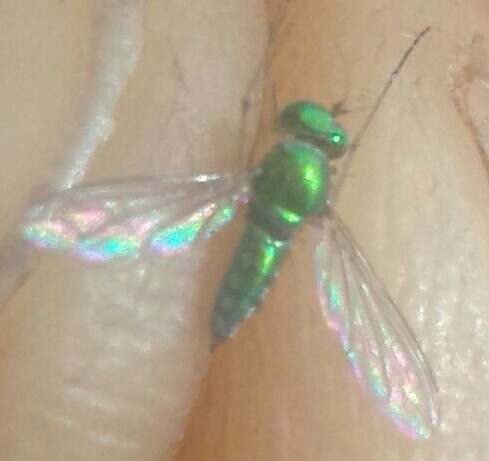
|
![]()
|
![]()
| It is a beneficial insect to the crops and no need to take up any control measures. |
| Sanjay Salve | PADDY | White linenig on leaves as well fold |
![]()
|
![]()
|
![]()
| Based on the problem you indicated the white lining on paddy leaves may be caused due to leaf folder. It is suggested that you open the folded leaf and observe the presence of larva of the leaf folder. If the larva is there, spray acephate @ 1.5 g/ L water or chlorpyriphos @ 2.5 ml/L water. Use coir rope for dislodging the larvae on to kerosenised water (1 L of kerosene mixed on 25 kg soil and broadcast in 1 ha). However please send the supporting image for accurate diagnosis and suggestions. |
| Shilpa kulkarni | COTTON | |
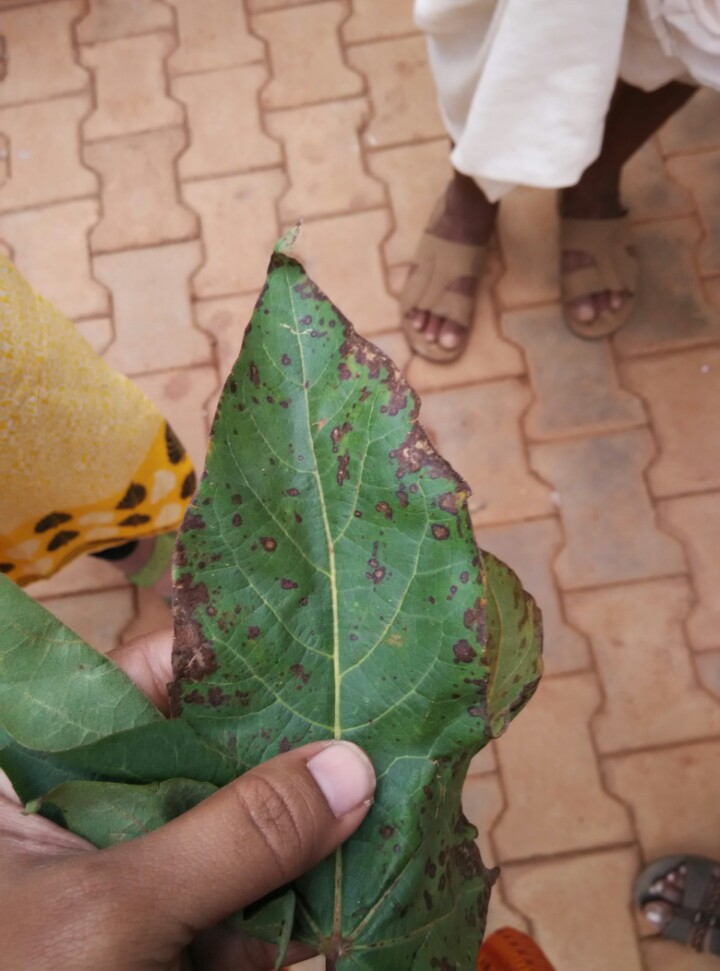
|
![]()
|
![]()
| The infected leaf indicating the leaf spot complex caused by fungal pathogens. It is suggested to spray propiconazole @ 1ml/ L or copper oxychloride @ 3g/ L or mancozeb @ 2.5g/ L of water. For next season, before sowing adopt seed treatment with Trichoderma viride or Pseudomonas fluorescens @ 10g/ kg seed , remove crop residues while preparing field and keep the field free from weeds. |
| Shilpa kulkarni | SUGARCANE | |
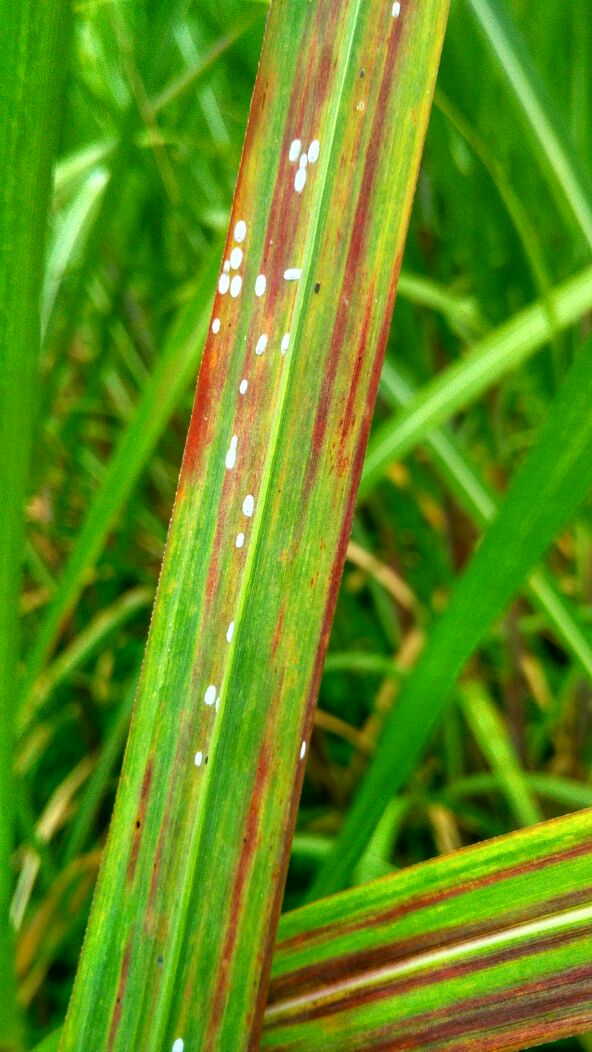
|
![]()
|
![]()
| Adults and nymphs of woolly aphids suck sap from leaves causing whitish patches which turn yellowish then drying starts from the tip along margins. Leaves become brittle and dry completely. These aphids also suck sap from the cane leading to reduction in length, circumference, weight and sugar content of the cane. To control this, avoid excessive use of nitrogenous fertilizers, use organic fertilizers, rapping of canes all along the rows. Spray dimethoate @ 1.7 ml/L or Monocrotophos @1.6 ml/L of water. For next season, infested canes should not be used as seed material for planting. |
| Achanalamadhusudhan | COTTON | |
![]()
|
![]()
|
![]()
| There are various sucking pests damaging the cotton crop. The following symptoms of damage can help in identifying the pests. Aphids cause downward curling of leaves which are shiny with honey dew & active movement of ants. Due to jassids the affected leaves curl downwards, turn yellowish then get brownish before drying and shedding. Thrips cause silvery or brown necrotic spots under side of the leaves & upward curling of leaves. The smoky appearance on leaves is caused by whiteflies. Whereas mealy bugs reduces plant vigour and early crop senescence. In general it is suggested to remove weeds to reduce the incidence of whiteflies and mealy bugs. Grow 2-3 rows of Sorghum or Maize as a border crop. Spray NSKE 5% or Neem oil (1500 ppm) @ 5 ml/L to control early season sucking pests. Release Chrysoperla grubs @ 10000/ha. Use yellow sticky traps for monitoring the population. Stem application with Monocrotophos : water @ 1: 4 ratio 30-45 DAS followed by Imidaclorpid : water @ 1:20 ratio 60 DAS. |
| feydckyt | BARLEY | |
![]()
|
![]()
|
![]()
| Please indicate the problem in the Barley crop along with the photo images. We will diagnise and send you the required solution soon. |
| Balasaheb Dhame | SOYABEAN | not applied basal dose, plants haveing more vegetative growth, less flowering |
![]()
|
![]()
|
![]()
| Please provide the details of variety used, date of sowing and previous crop sown to identify the specific problem.Meanwhile, spray urea @ 2% twice at 15 days interval. |
| V Srinivas Rao | BLACKGRAM | 7 days onwards heavy rains in my place.How to protect from excess water. |
![]()
|
![]()
|
![]()
| Heavy and continuous rains are harmful to blackgram particularly at the time of germination and flowering .There is a possibility of occurrence of certain foliar diseases after rains. Hence, it is suggested to give prophylactic spray with Mancozeb @ 2.5g/ L or Hexaconazole @2 ml / L of water at 10 days interval twice when the rain stops falling. Drain out excess water and maintain proper drainage in the field to avoid incidence of soil borne diseases. Regarding green caterpillars , it feeds on the leaves and pods. To kill the eggs, spray neem seed kernel based EC @ 1.6 Litres/acre and to control caterpillars, handpick and kill them by dropping into a bucket of soapy water. Spray NPV @ 250 LE/acre. Set up the Pheromone traps @ 4-5/acre for monitoring and 8/acre for mass trapping. Also set up the bird perches 10-15/acre. If any specific problem in the crop, please give the details with supporting image for diagnosis and further suggestions. |
| kishorsinh jadeja | COTTON | pink boll warm seen in |
![]()
|
![]()
|
![]()
| Cotton Bollworm Larvae feed on developing seeds and younger bolls destroying the entire content of the boll making it inferior quality. To kill the eggs of pink boll worm use Neem seed kernel based EC @ 4 Litres/ha. Collect and destroy rosette flowers. Set up the pheromone traps @ 4 per acre (for monitoring) and @ 8 per acre (for mass trapping). Also set up the bird perches 10-15 per acre. To manage these pink bollworms use Tricho cards. Follow cultural practices - grazing by animals (cow, buffalo, sheep etc) immediately after final picking. Avoid staking of cotton stalks near the fields. Pulled out stalks should be burnt before ploughing the field. Grow maize, cowpea on border to attract predators and parasitoids. |
| kishorsinh jadeja | COTTON | pink boll warm seen in |
![]()
|
![]()
|
![]()
| Please refer to the solution of Cotton Pink Boll worm (Provided above). |
| Baljinder singh | PADDY | Plants r not growing well |
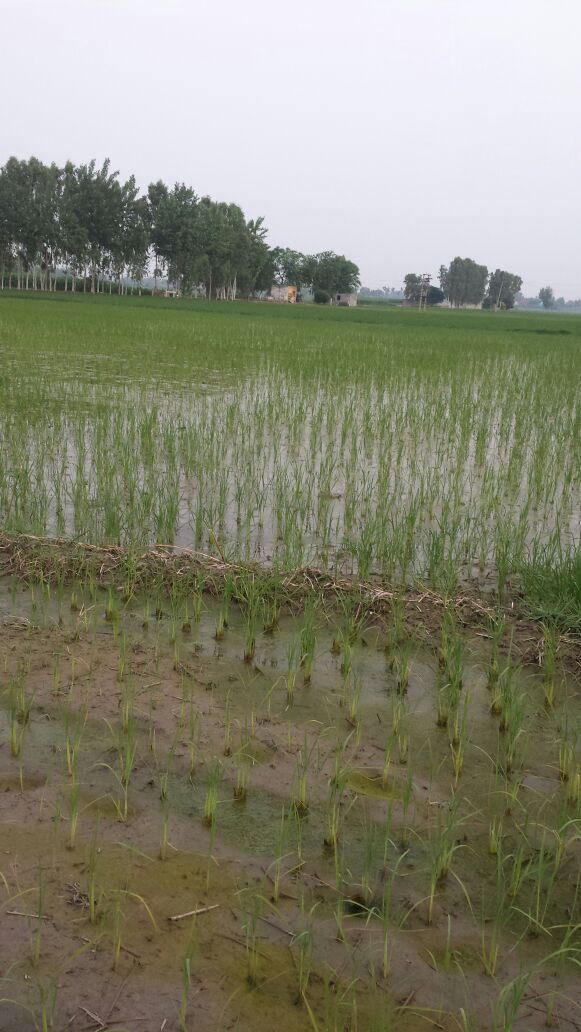
|
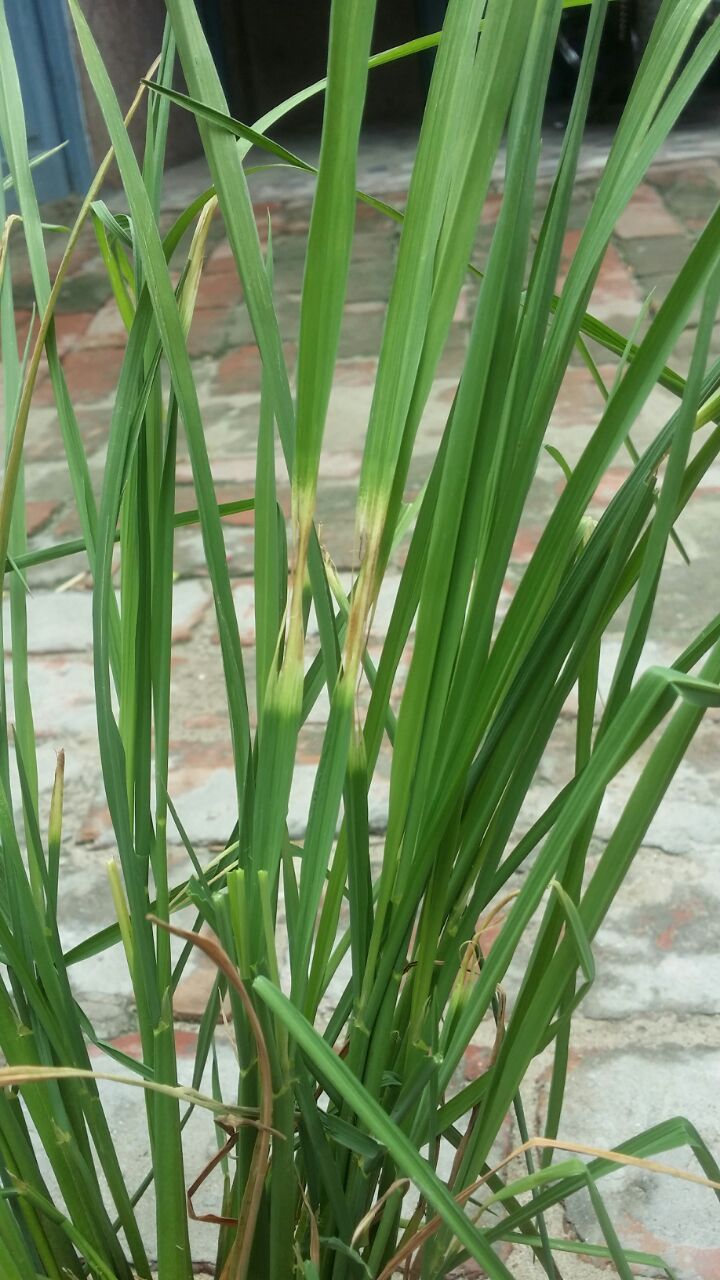
|
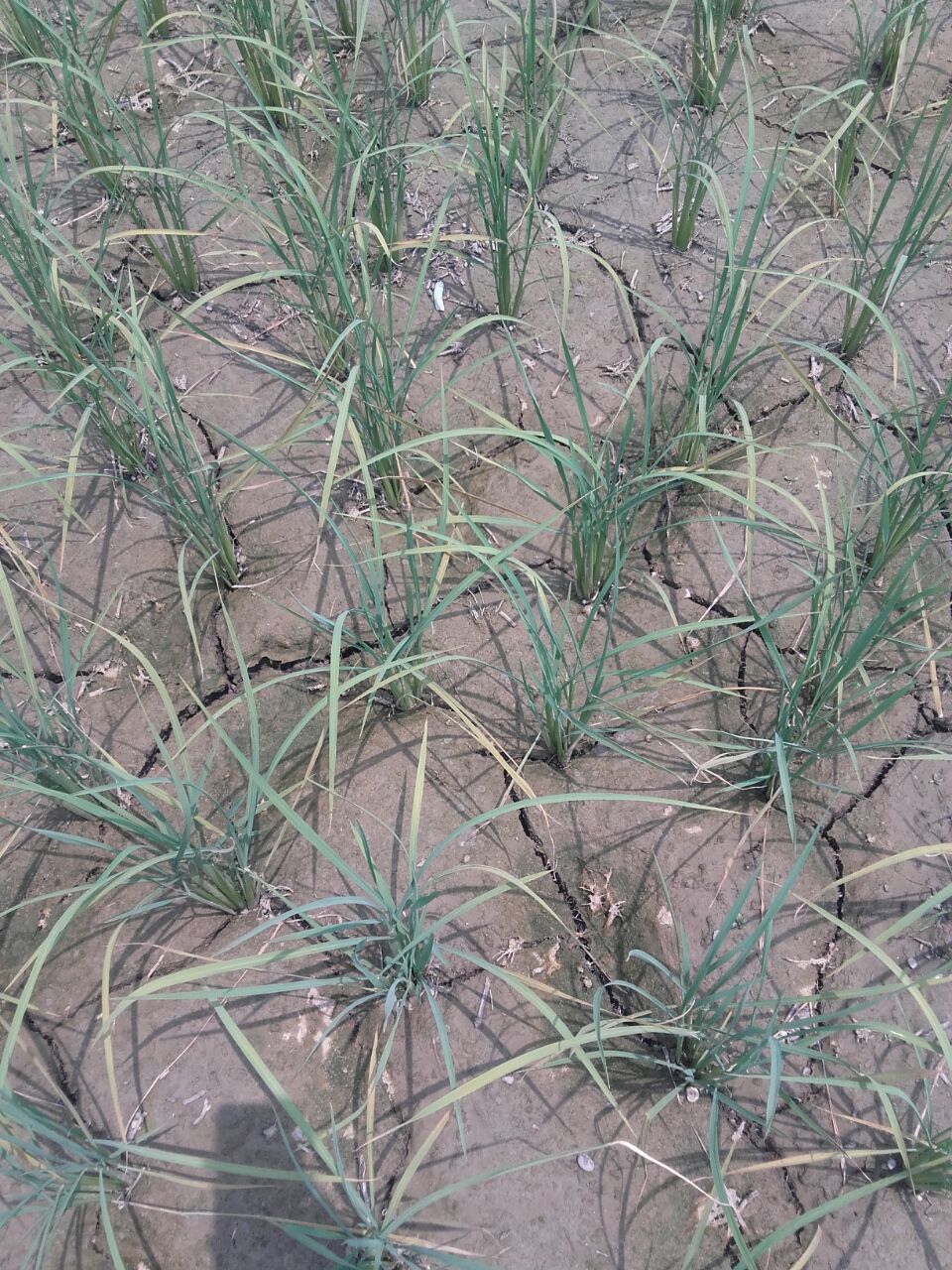
| 1st & Last image : Problem in the field appears to be soil which may be due to salinity/alkalinity or nutrient deficiency. So, test the irrigated water and soil. Meantime, irrigate and drain the field frequently once in 2-3 days. Apply 30 kg urea as top dressing. Spray ZnSO4 @ 2g/ L water at 5 days interval twice.
Middle image: Problem may be due to leaf folder. Open the folded leaf and observe the presence of larva. If the larva is there, spray acephate @ 1.5 g/ L water or chlorpyriphos @ 2.5 ml/L water. Use coir rope for dislodging the larvae on to kerosenised water (1 L of kerosene mixed on 25 kg soil and broadcast in 1 ha).
|
| kayalvizhi v | BARLEY | mint plants are look like this some beetles are around the plant..what is the pest and this activity and how to prevent? |
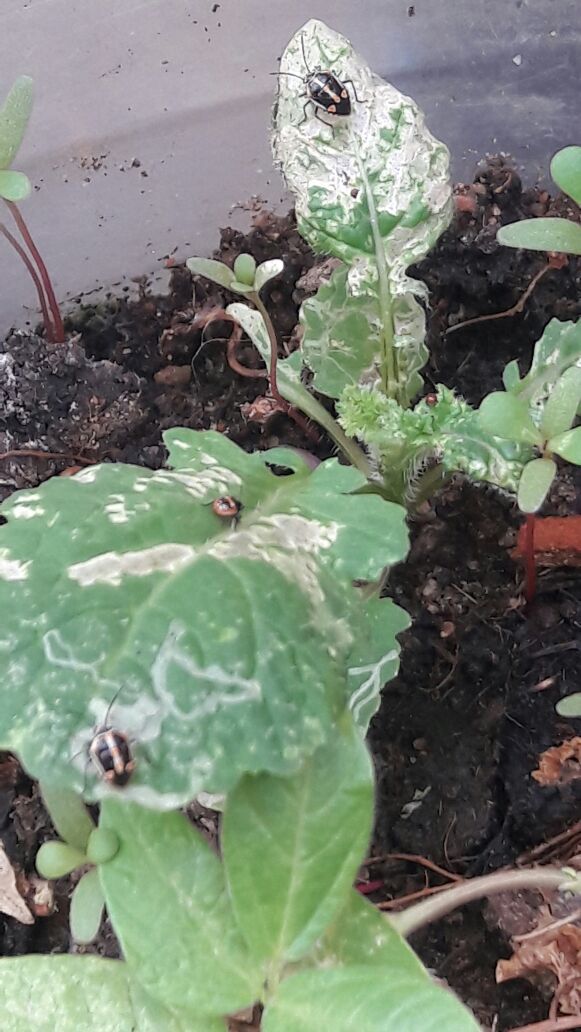
|
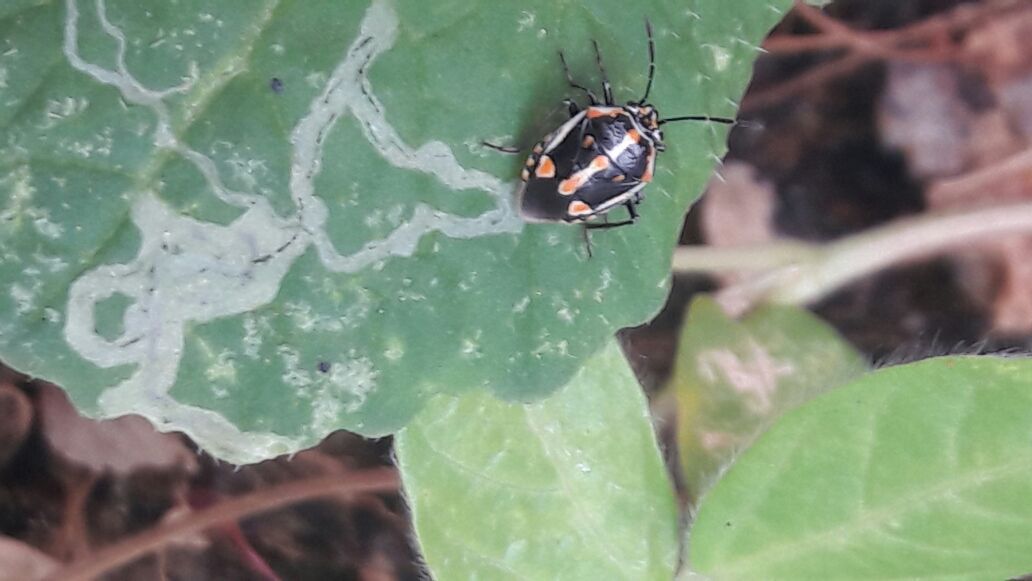
|
![]()
| This pest is called the Painted bug which attacks and sucks the sap from different parts of the mustard plant. As a result of damage young plants wilt and dry up completely in case of severe infestation. Yield is affected by 31%. To control the pest plough the field deeply to destroy eggs present in the soil and early sowing is recommended to avoid pest attack. Quick threshing of the harvested crop and destruction of remains of mustard crop should be done so that stages of insect do not reach the next year crop. Since the young ones and adults are not very active they can be dislodged by shaking the branches into the kerosene water. Dichlorvos 76% EC @ 250 ml in 200-400 litres of water/acre. Application of Phorate 10% CG @ 6000 g/acre is recommended. |
| ramulu | COTTON | dwarfing.little leaf |
![]()
|
![]()
|
![]()
| Dwarfing and little leaf in cotton may be due to several reasons. It may be due to deficiency of certain nutrients or diseases caused by viral or phytoplasma pathogens. Please give the other details viz., stage of crop, place, nutrient status of soil along with supporting image for accurate diagnosis and suggestions. |
| Narsimhulu | COTTON | |
![]()
|
![]()
|
![]()
| Please indicate the problem in the Cotton crop and send us the photo images. We will send you the required solution soon. |
| Nidheesha K J | PADDY | Damages the crop |
![]()
|
![]()
|
![]()
| The rats move in grasses and shrub areas along bunds. To avoid movement and entry of rats to field, the bunds should be clean and weed free. To avoid burrowing the number of bunds and size should be reduced. Place local traps @ 20/acre along the bunds. Locate the live burrows, open it and place one Aluminium phosphide tablet /burrow and close the burrow to kill rat. Community based rodent control has to be undertaken during next fallow season for effective control of rodents. |
| K ramesh | GROUNDNUT | |
![]()
|
![]()
|
![]()
| Please indicate the problem in the Groundnut crop and send us the photo images. We will send you the required solution soon. |
| asha kiran rana | PADDY | yellowing in paddy nursery |
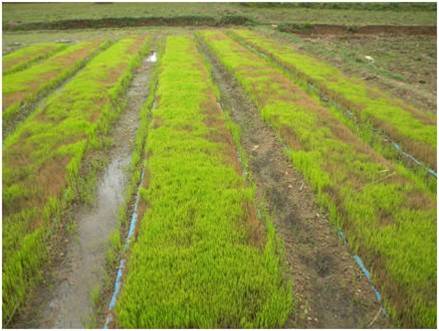
|
![]()
|
![]()
| Yellowing of leaves in rice may be due to several factors. In the present rice nursery, the problem may be due to salinity indicating the symptoms of yellowing, patchy, uneven stunted growth with browning of leaves. Hence, test the irrigated water and soil for salinity. If water is not good, It is suggested to irrigate nursery with good source of water with proper drainage. Spray Zn SO4 @ 2g/ L. |
| Pravin | PADDY | yellowing in paddy nursery |

|
![]()
|
![]()
| Please refer the solution to Yellowing in Paddy Nursery (Provided above) |
| Ravinder Pal Singh | MAIZE | yellowing of all crop from top and by focus on single leave yellowing plus brown spots appear. |

|
![]()
|
![]()
| Yellowing of maize leaves may be caused by deficiency of certain nutrients like nitrogen, potassium, Mg etc. or foliar diseases. Regarding Brown spot symptoms on foliage, which may be due to a fungal disease caused by Physoderma sp. Please send the complete description of the problem with photograph for accurate diagnosis and suggestion. |
| Ravinder Pal Singh | MAIZE | Please Diagnose problem |

|
![]()
|
![]()
| Please indicate the problem in the Maize crop along with the photo images. We will diagnise and send you the required solution soon. |
| kayalvizhi v | BARLEY | tip of the brinjal and their shoots become black and white colour gummy appearance some ants are there |
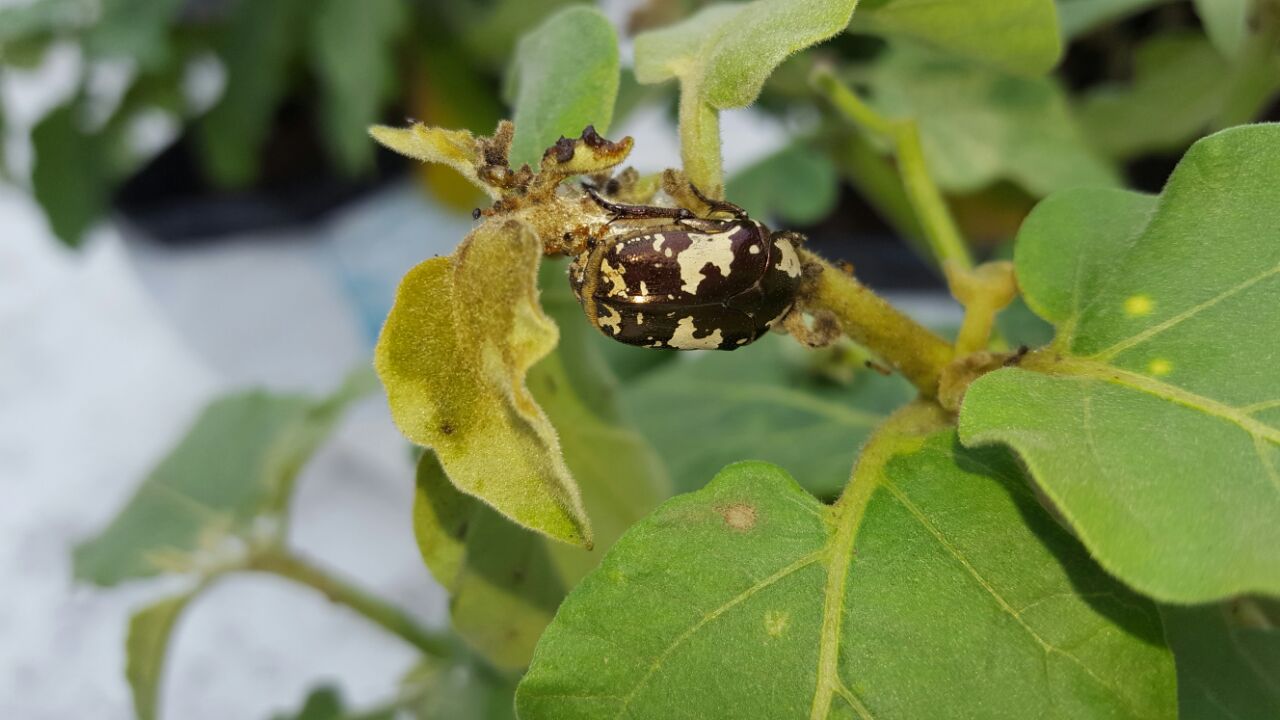
|
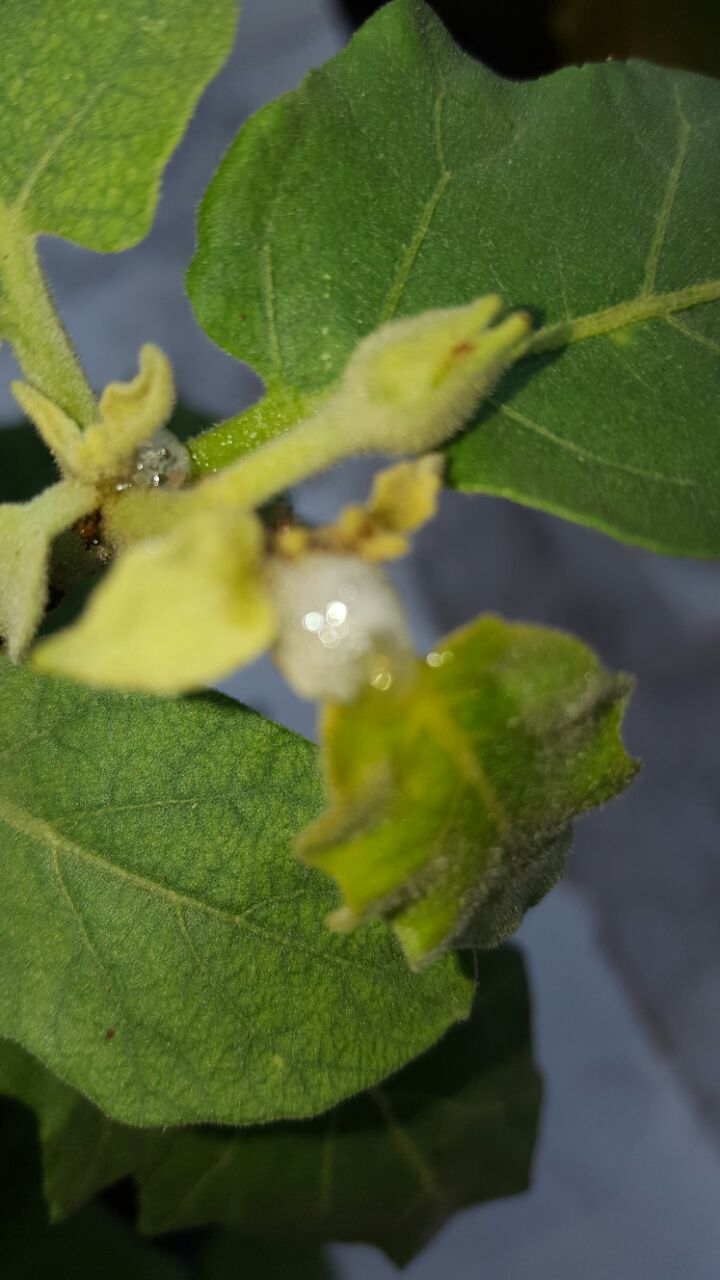
|
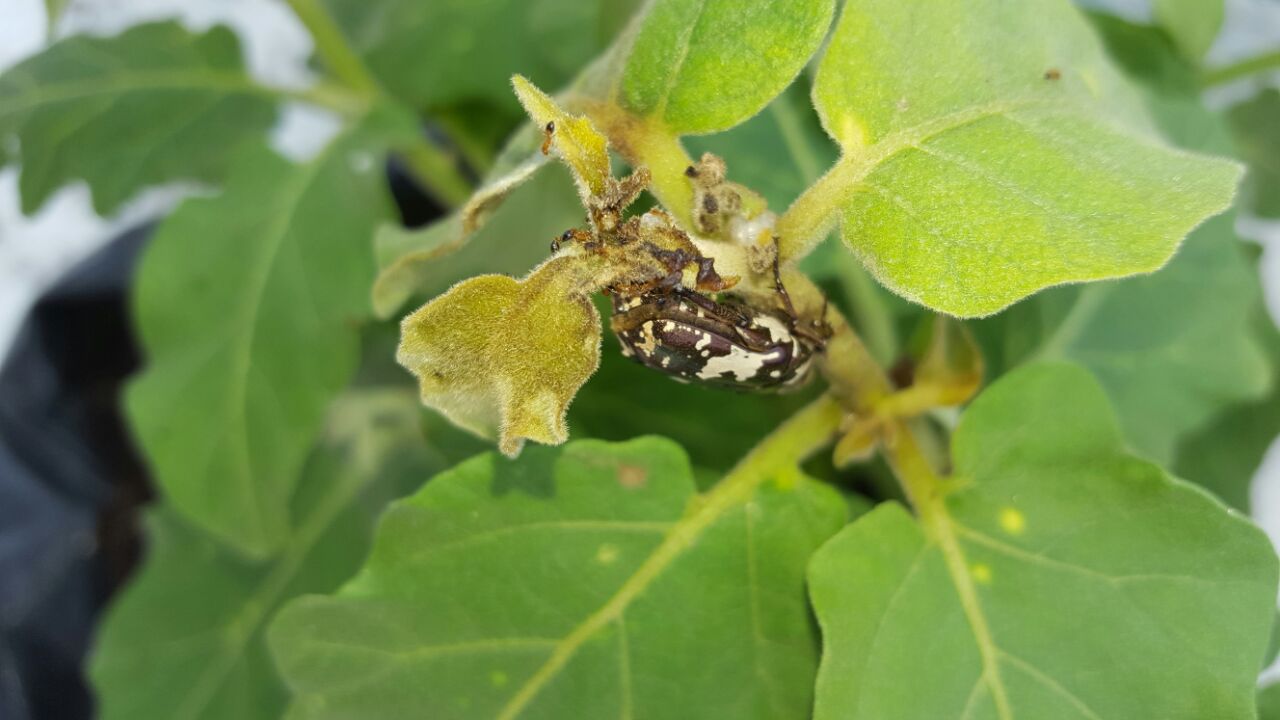
| Pic 1 & 3 : These are chaefer beetles which are known pest on rose, brinjal, redgram, greengram etc. They feed on leaves and cause skeletonisation. But this is not a major pest. They can be managed by hand picking and destroying them or by cutting the infested twigs. Spray Neem seed kernel Extract 5%.
Pic 2 : These are damage by spittle bugs which are pests of many garden plants. The young nymph encases itself with spittle for protection as it matures. Both adults and nymphs feed by sucking plant juices, and sometimes plant growth can be distorted. Control is not required, as spittle bugs have many natural enemies. Try hand picking, or go for water spray. Insecticidal soap works well for heavier infestations. Sprinkling of cowdung ash on the plants also repel the pests.
|
| kayalvizhi v | BARLEY | what is the insect and which crop they affect and control method( 1st pic ) what is the symptos for cluster plant and remedy (2nd pic ) |
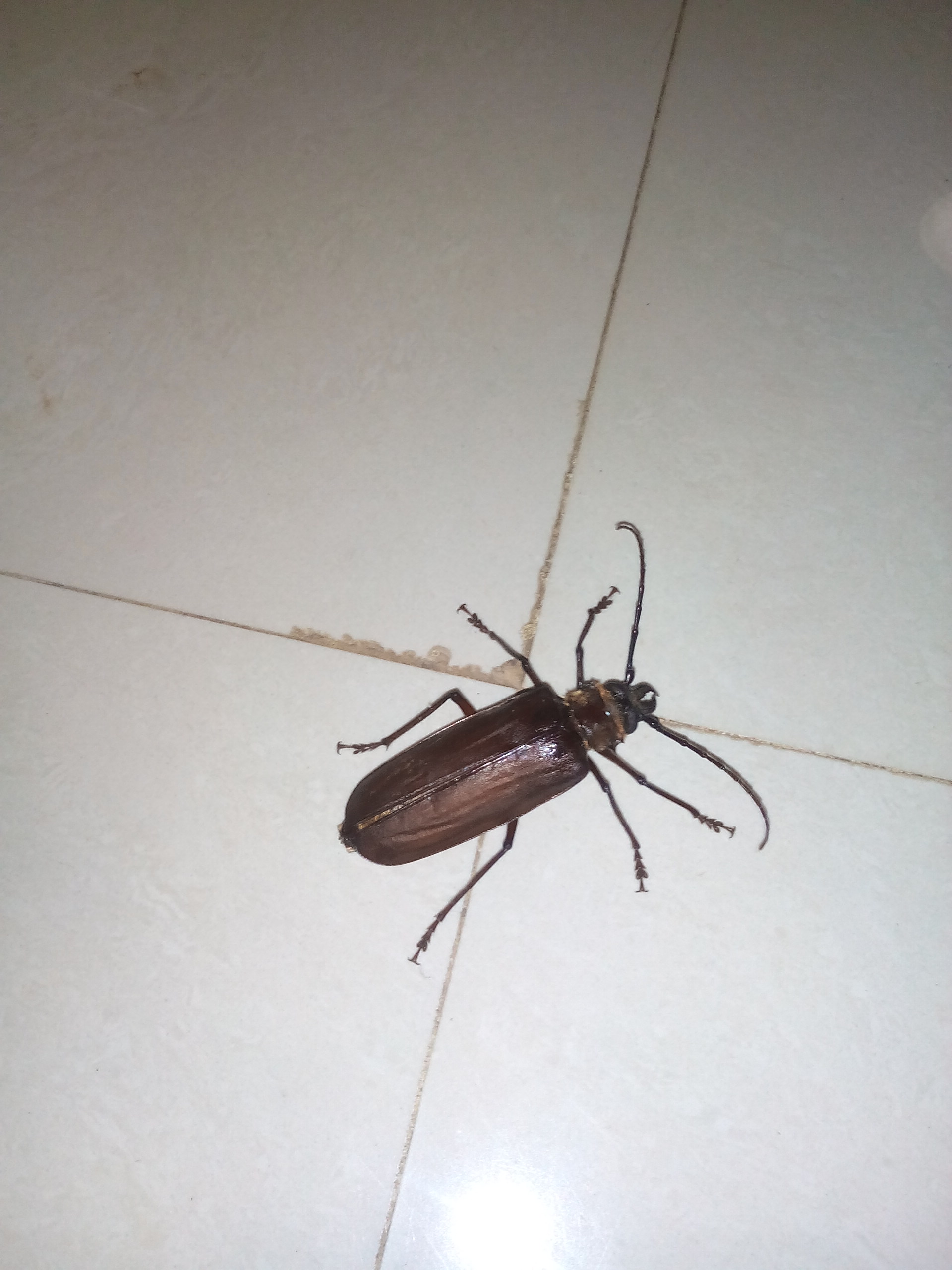
|
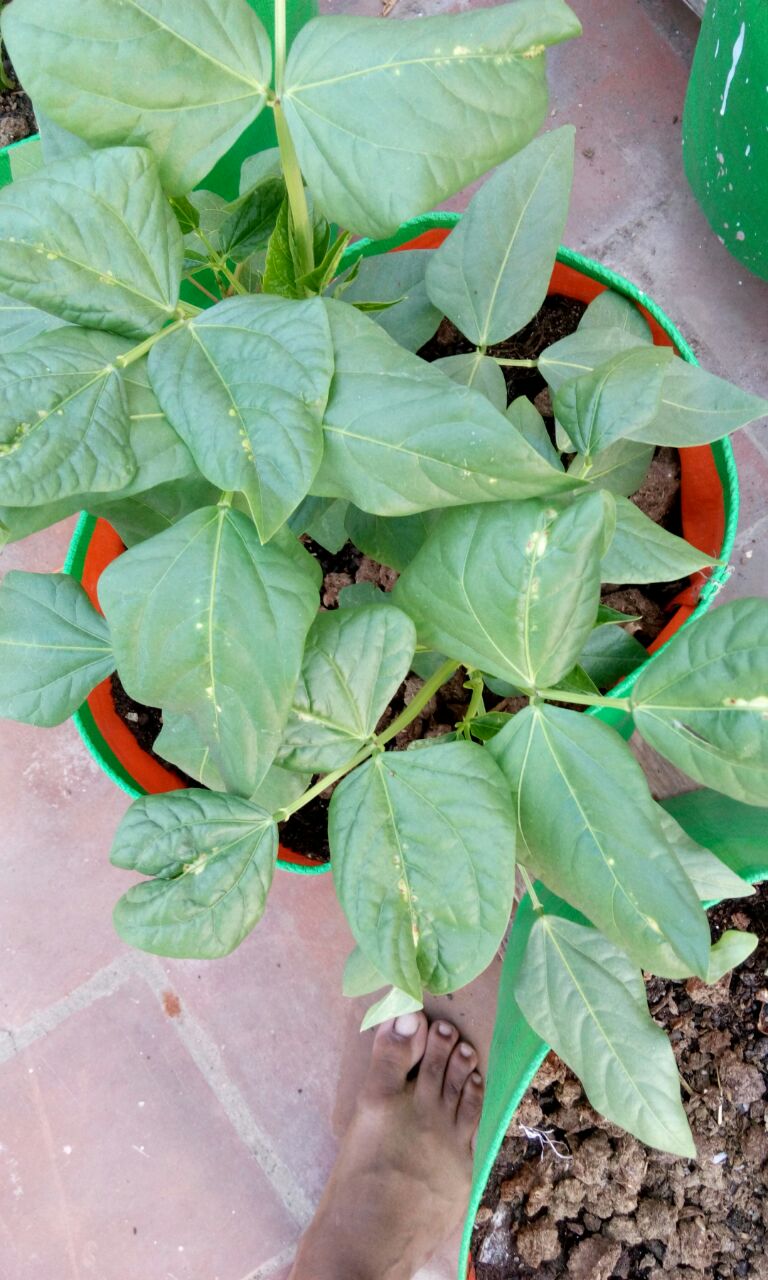
|
![]()
| 1st pic : This is a tropical insect - Titan beetle (Titanus giganteus L.) most common on sunflower. This pest is very difficult to control chemically. Deep ploughing and rotation is useful. Collect the adults after dark through light traps using mercury vapour UV lights.
2nd Pic : Leaves showing patches of unusual colouration and mild curling of leaves indicating mosaic symptoms. The disease is transmitted by aphids. Spray by mixing one table spoon of dish washing soap or three table spoons of soap flakes (Non-detergent) with 4 litres of water, 2-3 times at 3-4 days interval. Use yellow sticky traps @ 4-5/acre. Apply urea @ 10 kg/acre as top dressing.
|
| r l jat | BAJRA | heavy infestation |
![]()
|
![]()
|
![]()
| White grubs (beetles) cause damage to plants by living inside the soil feeding on the root system and cause drying of plants in patches. Before sowing, deep summer ploughing is required to expose predation of grubs by birds. If predatory birds are absent a man with bucket in hand may follow the plough and pick up the grubs. Removal of volunteers or previous crop residue. Crop rotation with cotton or onion/garlic. Seed treatment with Chlorpyriphos 20% EC @2.5 to 12.5 ml/kg seed. Early sowing to avoid damage by white grubs. At the time of seedling stage soil application of castor or Neem cake @250/ha or Carbofuran 3% CG @33.3 kg/ha. Arrange for mechanical weeding 15-20 and 30-45 days after sowing. Spray chlorpyriphos 1.0 – 1.25 Lit/500-1000 Lit of water nearby trees where adults live. Erection of 12 light traps per hectare during July –September. |
| ajay Virdi | PADDY | Seedlings are drying. |
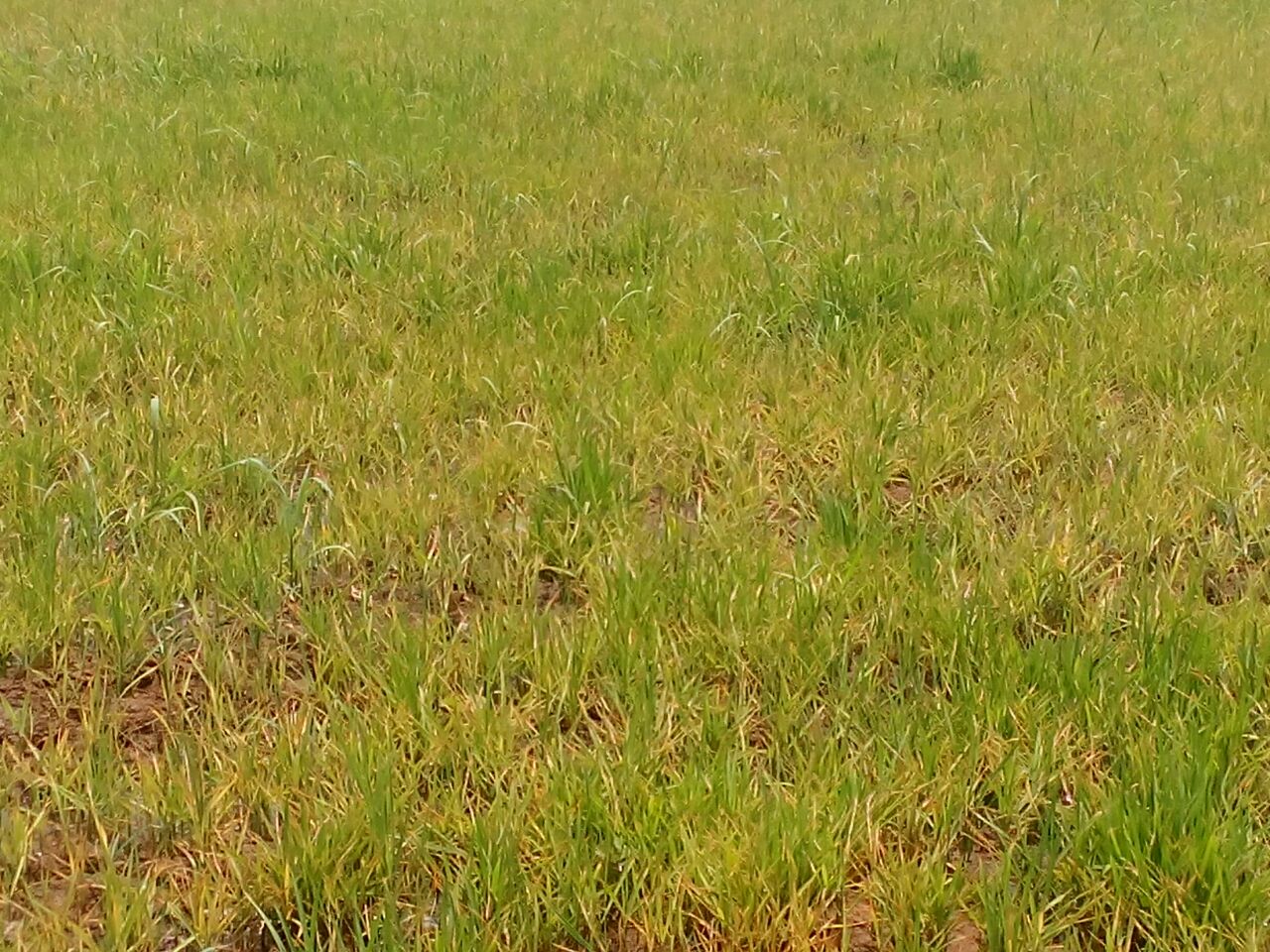
|
![]()
|
![]()
| It appears to be N deficiency .Apply Urea @30-kg/ac.as top dressing. |
| Yash sambyal | BARLEY | Borer |
![]()
|
![]()
|
![]()
| Please send us photo images of the Stem Borer attack so that we can diagnise and provide you the solution soon. |
| SAMADHAN BHAMARE | COTTON | |
![]()
|
![]()
|
![]()
| Whiteflies cause damage to cotton plants in two ways firstly by sucking the sap and secondly by excreting honey dew on which sooty mould develops. Damage results from lint contamination with honeydew and associated fungi and through transmission of leaf curl viral disease. Late season severity affects the seed development and the lint quality. The following suggestions may be followed for the management of whitefly. For monitoring the activity of whiteflies, arrange yellow sticky traps @ 10 /acre. Avoid excessive application of urea. Spray neem oil (1500 ppm) @ 5 ml/l twice i.e. @ 45 and 60 days after sowing. As a last choice, spray Triazophos or Profenofos @ 2ml/ l or Acephate @ 1.5 g/ l or Diafenthiuron @ 1.25 g /l. Do not use synthetic pyrethroids as they result in resurgence of whitefly population. |
| anjan kumar | MUSTARD | Leaf spots |
![]()
|
![]()
|
![]()
| Fungal leaf spot of mustard is one of the major diseases of national significance. The fungal leaf spot is characterized by concentric black spots on leaves and later center of the spots dries and drops out. The pathogen is externally and internally seed born and survives through plant debris or weed. Moist coupled with warm weather (12-25 °C ) and intermittent rains favours disease development. The following general suggestions may be adopted for the management of the fungal leaf spot.
Use disease free seeds.Apply recommended dose of potash.Remove and destruct the infected plant debris and keep the field free from weeds.Spray Metalaxyl 8% + mancozeb 64% WP @1000 g in 400 l of water/acre as soon as the symptoms start appearing on the plants.Seed treatment with Trichoderma harzianum @10g/kg seeds, followed by foliar spray with Trichoderma harzianum + Pseudomonas fluorescens each @10 ml/ L was also found effective. Spray recommended chemical as the last choice only.
|
| MOHAMMEDUL HAQUE | PADDY | We like to request all Agriculture Scientists to help us to run our NE PLANT HEALTH CLINIC smoothly. It is a venture like a Nursing Home in two modes ,one is static and another is movable.In static Plant Health Clinic the Doctors of Plants i.e. Agricultural Scientists will give consultation with farmers to solve their farming problems professionally,there will be specialists like Agronomist,Entomologists,Horticulturist,Pathologists,Extension Education,Agril. Engineering,Agri. Meteorologist,Agri. Economists etc for special treatment. There will be one laboratory for soil,plant ,fertilizer,water,pest,nematode etc tests etc.
We think MBBS Doctors can run Clinic,so we the Agriculture people can also run plant health clinic for agriculture development.
Mohammedul Haque,B.Sc.Agril.Director,NE PLANT HEALTH CLINIC,( A Unit of Chilarai Krishi Bikash Samity),A.K.Azad Road,Dhubri-783301,Assam,Ph-09864568410,e-mail: ckbs115@gmail.com,website: www.ckbs.vpweb.in. |
![]()
|
![]()
|
![]()
| |
| LALIT | BARLEY | BORER ATTACK |
![]()
|
![]()
|
![]()
| Please send us the photo images of Borer attack so that we can diagnise and provide you the solution soon. |
| kanha | WHEAT | roor rot |
![]()
|
![]()
|
![]()
| Wheat root rot is caused by several different fungi that invade and colonize the roots
and crown tissue of wheat seedlings and plants. These fungi produce a darkening or browning of the root, crown, and basal culm tissues. Infection early in the crop development can cause pre- or post-emergence damping off of seedlings. Each fungus can attack a different plant part at a different growth stage. Apply adequate fertilizers particularly Nitrogen ( Azospirillum @ 2-3 kg /ac) and phosphorous ( phosphate solubilizing bacteria @ 2-3 kg /ac) which reduces severity. Apply Trichoderma harzianum formulation @ 2-3 kg /ac enriched in 100 kg FYM.
|
| naresh kumar | WHEAT | YELLOW RUST |
![]()
|
![]()
|
![]()
| During vegetative stage spray: Propiconazole 25% EC @ 200 ml in 200 l of water/acre or Tebuconazole 25% EC @ 200 ml in 200 l of water/acre or Thiophanate Methyl 70% WP@ 286 g in 300-400 l of water/acre or Zineb 75% WP @ 6-8 Kg in 300-400 l of water/acre or Mancozeb 75% WP@ 6-8 Kg in 300 l of water/acre. Avoid excess N application |
| jupallijhansi | BARLEY | solve problem |
.doc)
|
![]()
|
![]()
| Please indicate the problem in the Barley crop and send us the photo images. We will send you the required solution soon. |
| DHOTRE RAHUL BALAJI | SOYABEAN | SPODEPTERA,AND ALL INSECTS |
![]()
|
![]()
|
![]()
| In soybean, tobacco caterpillar is one of the major pests in addition to stem fly, green semiloopers, girdle beetle, pod borer and white fly.
For the management of tobacco caterpillar, adopt the following practices.
Tobacco caterpillar moth lays eggs in groups on under surface of leaf and the young larvae after hatching remain on the under surface of leaves in large numbers and feed on leaves. So, look for the under surface of leaf, if egg masses and large groups are found , collect those leaves and destroy them. For controlling early stage larvae, spray Neem Seed Kernel Extract ( NSKE) @ 5 % .
During vegetative and flowering stage, for controlling tobacco caterpillars, stem fly and girdle beetle spray, Triazophos 40% EC @ 625 ml/ha or Chlorantraniliprole 18.5% SC @ 150 ml/ha .
|
| SKSain | COTTON | Finding the pest on lower leaves I am worried about my crop what will happen |

|
![]()
|
![]()
| Image is not clear please send another clear image with other details |
| eswar reddy | REDGRAM | holes on pods |
![]()
|
![]()
|
![]()
| pls provide complete information along with photos
1.suppose if young larva are found on the crop then go for application of neem oil @ 5 ml /lt water. install bird perchase in the field to attract the birds to the field to pickup the larva
2.Clipping of the terminal leaves at 90-100 days age of the crop to destroy the eggs laid on them.
install fermon traps @ 4 traps /acre . apply BT @ 400gms /acre in the evening time 2 times at one week interval, Apply NPV @ 200 LE/acre if the above said control measyres are not able to control the pests , go for chemical sprays of indoxacarb@ 1ml/lt or spinosad @ 1.5 gms/lt |
| Ashok mishta | PADDY | Early infestation found pl conferm protection measures |
![]()
|
![]()
|
![]()
| Drain the field to reduce initial infestation. If infestation is high, drain the field for 3-4 days. Apply recommended nitrogenous fertilizers in split doses. Apply chemicals ( vegetative / panicle initiation to booting stage: : Spray ethofenoprox 10% EC @ 500-750 ml/ha or acephate 75% SP @ 666-1000 g/ha or buprofezin 25% SC @800 ml/ha) as the last choice only after the pest population cross ETL( Economic Threshold Level) i.e., early to tillering stage 10-15 hoppers/ hill, panicle initiation to booting stage 10-15 hoppers/ hill. |
| Ashok Biradar | GROUNDNUT | Dyeing of plants |
![]()
|
![]()
|
![]()
| Root rot in groundnut: Apply Trichoderma harzianum in the form of powder and liquid bio-formulation. Powder formulation at 5 g per kg /soil as like in seed treatment and broadcast in field followed by spray with liquid bio-formulation at 5 ml/l. |
| Manjula | COTTON | leaf redness |
%20Rangelands-grasses.JPG)
|
![]()
|
![]()
| Cotton red leaf: 1. Leaf reddening incidence if it is due to sucking pests spray recommended insecticides. 2. If no sucking pest found then apply one or two sprays of urea (1 %) and application of magnesium sulphate (0.5%). |
| AMIT KUMAR | WHEAT | PLANTS ARE GETTING YELLOWISH IN COLOUR AND LEAVES ARE SHRINKING. |
![]()
|
![]()
|
![]()
| please provide details along with photos |
| Nivrutti Patil | COTTON | Red leaves, Less bowl |
![]()
|
![]()
|
![]()
| Leaf reddening : Reddening of Leaves in cotton may be due to deficiency of certain nutrients like N, Mg and leaf hopper infestation, water logging conditions, etc. If it is due to leaf hopper, spray neem based insecticides (Azadirachtin 0.03% (300 ppm) Neem Oil Based WSP @ 2.5-0.5 l/ha. If no pest observed , spray MgSO4 (0.5 % ) and 1 or 2 sprays of urea (1.0 %).Avoid water logging of the field. |
| Pritam P Haste | COTTON | sucking pest attck on cotton crop |
![]()
|
![]()
|
![]()
| Inoculative release of Chrysoperla grubs @ 10,000/ha. Spray neem based insecticides as initial sprays (Azadirachtin 0.03% (300 ppm) Neem Oil Based WSP @ 2.5-0.5 l/ha). Spray recommended insecticides (Acephate @ 1.5g/ L) as the last choice only when pest population crosses ETL (Economic Threshold Levels) i.e., more than 2 leaf hoppers per leaf |
| Latha | PADDY | Yellow / brown leaf stripes |
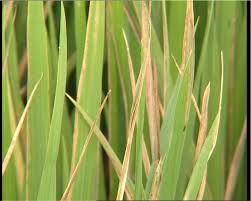
|
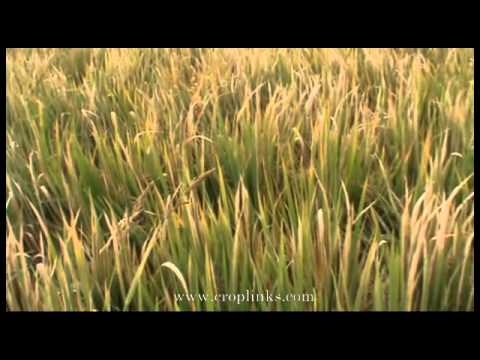
|
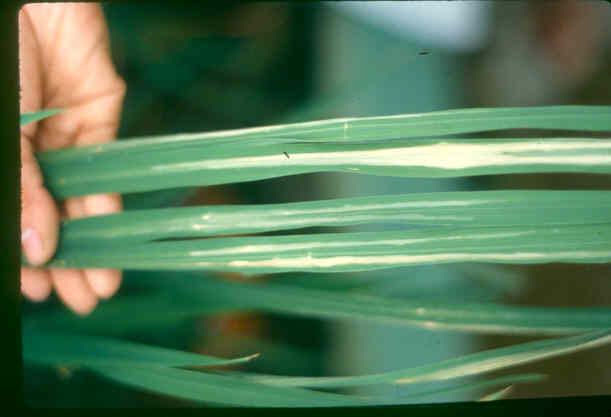
| Bacterial Leaf Blight.
Nursery stage: : Spray streptomycin sulphate 9% + tetracycline hydrochloride 1% SP @ 100-150 ppm.
Vegetative stage: Spray streptocycline 100 to 150 ppm
solution at early root stage. Second spray, if necessary before grain set. Reduce nitrogen application and apply if needed only small dose of N in more split doses.
Panicle initiation to booting stage: Reduce nitrogen application and apply if needed only small dose of N in more split doses,. chemicals as recommended earlier i. e., Streptomycin sulphate 9% + tetracycline hydrochloride 1% SP @ 100-150/ Streptocycline 100 to 150 ppm solution
|